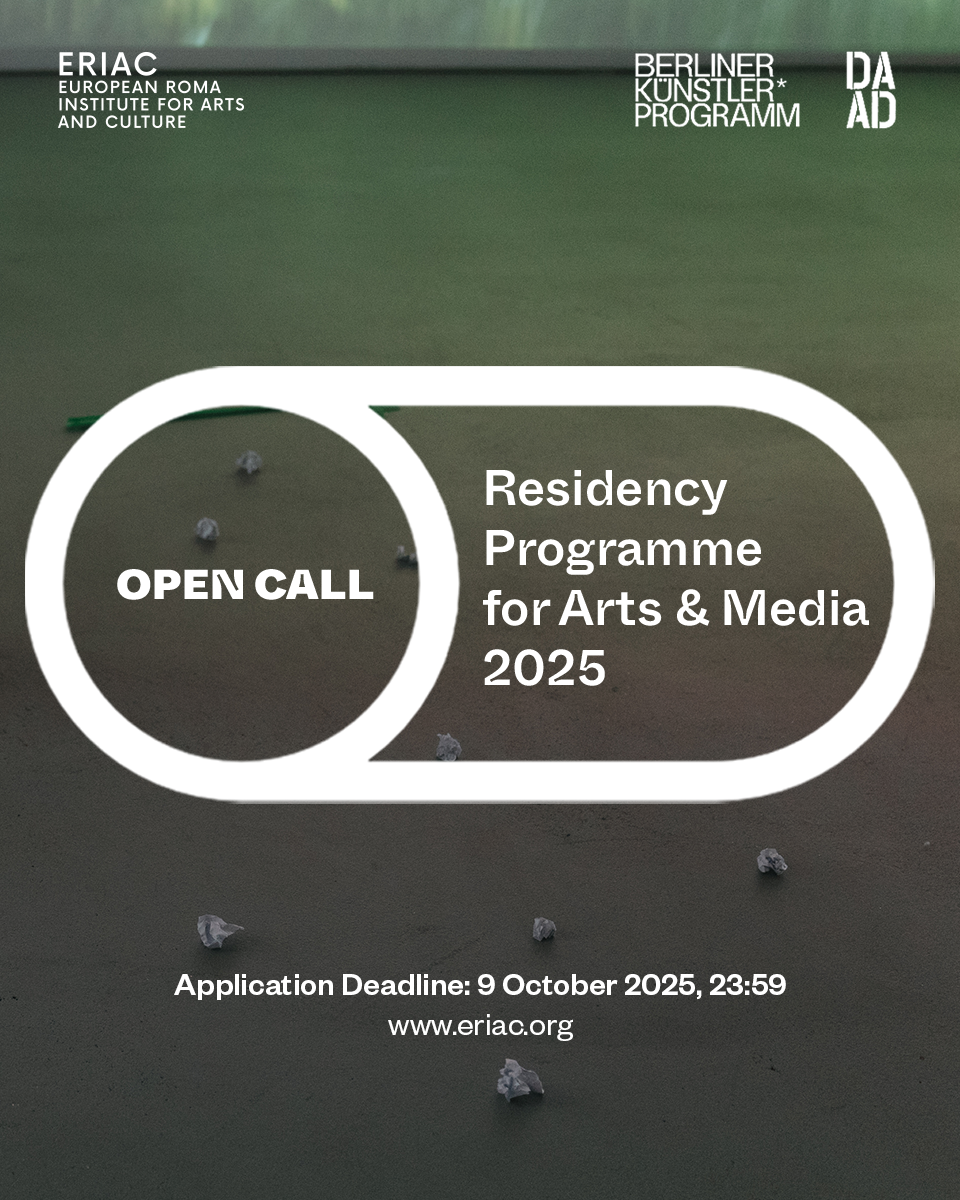
Open Call ERIAC–DAAD Residency Programme for Arts and Media 2025 The European Roma Institute for Arts and Culture (ERIAC) and the DAAD Artists-in-Berlin Program jointly announce the launch of the ERIAC–DAAD Residency Programme for Arts and Media. Starting in 2025, this multiannual initiative offers an annual one-month residency in Berlin for one artist or cultural…
Text by Eriac Team Member ›››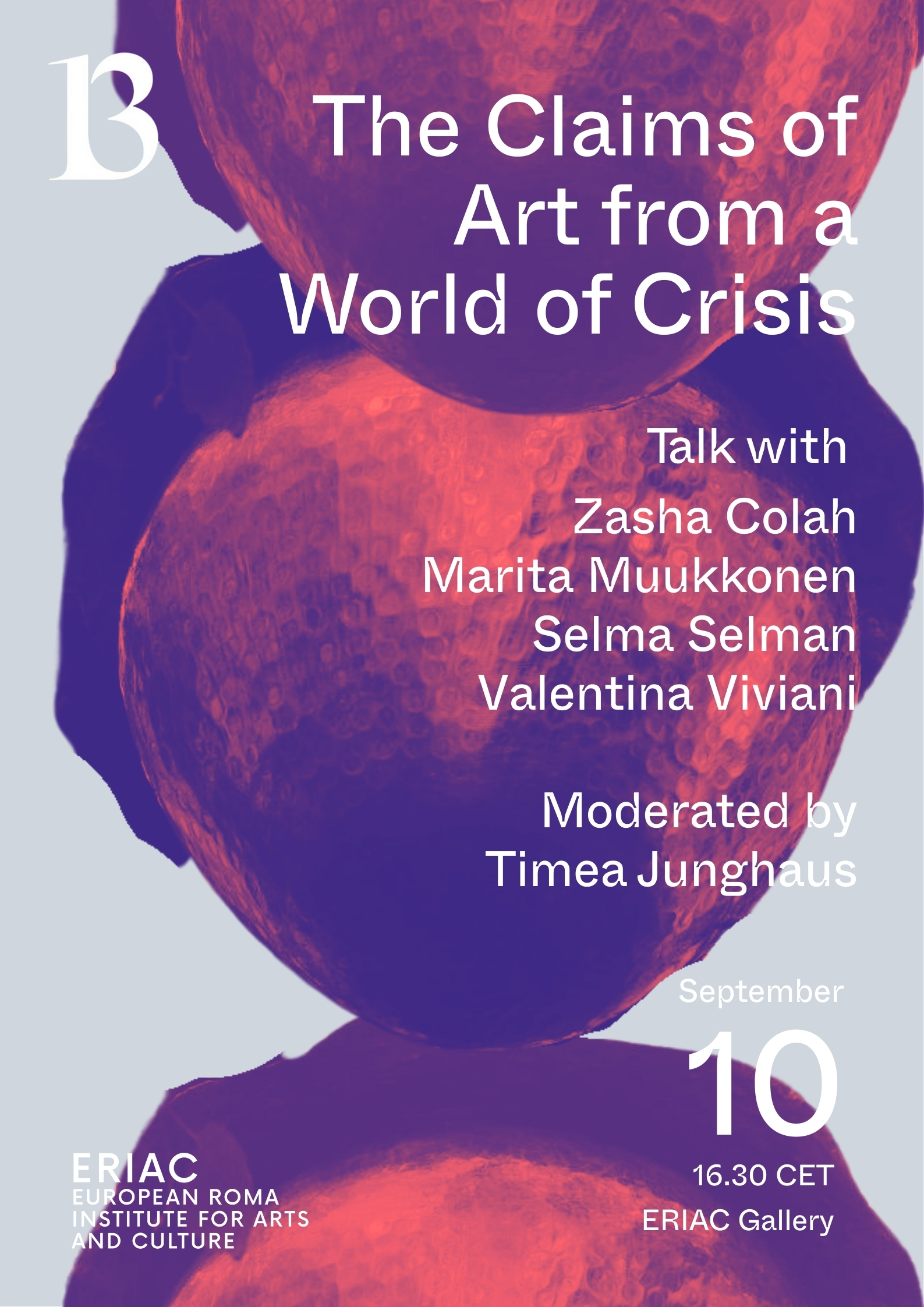
If art exists, most explicitly, in moments of crisis and catastrophe—as is attested by artists of the 13th Berlin Biennale and its Sister Organizations—what are its languages and preoccupations? What does it leave to us as viewers, spectators, audience, receivers, and is it what we expect, or can even understand fully in the present? In…
Text by Eriac Team Member ›››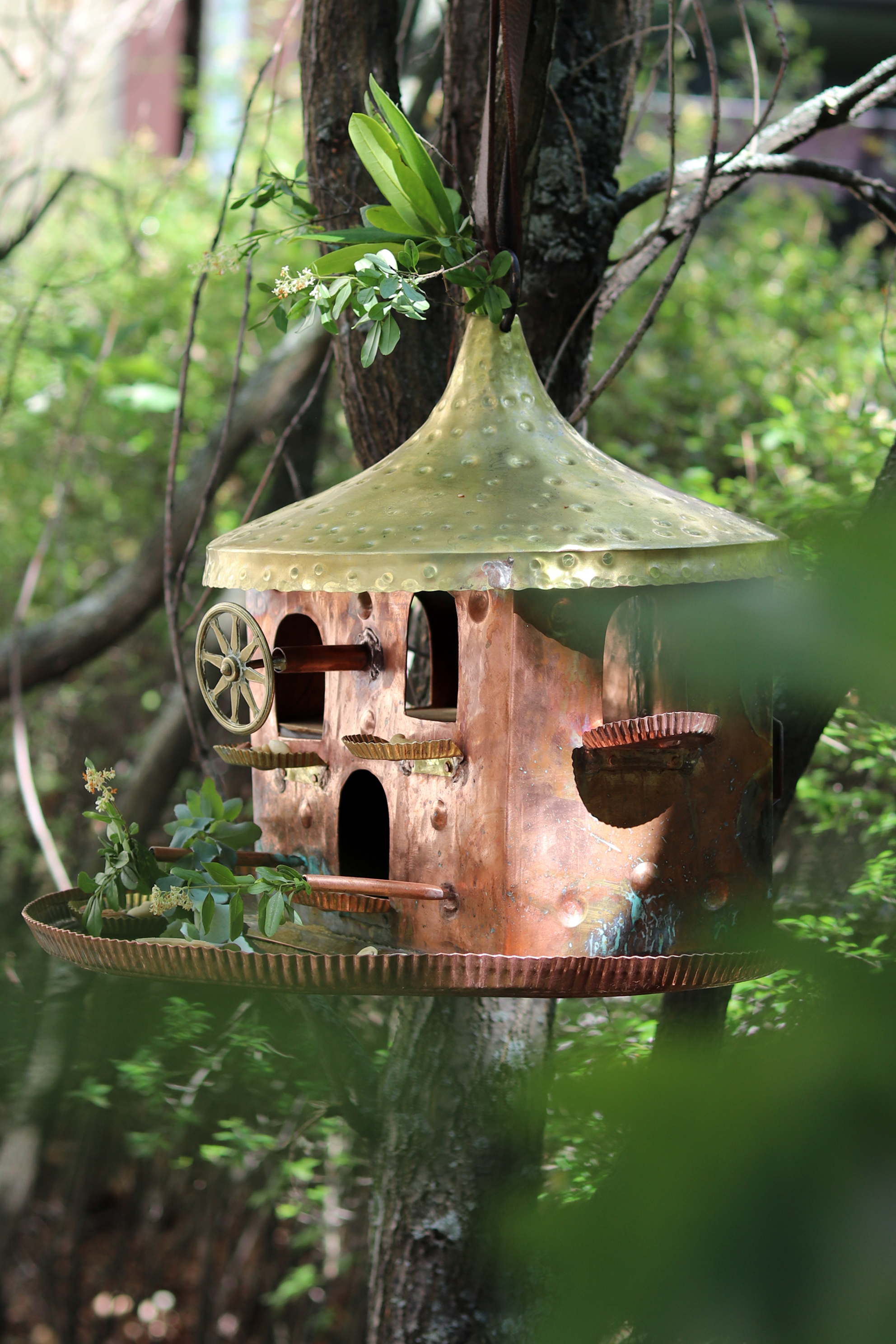
Forging and mending are ancestral practices among Roma artisans, where repair is both material and ontological. Lali Gabor’s coppersmithing intervention in the public sphere reclaims an urban space not through monumentality but through the intimate scale of the handmade. In the frame of the 13th edition of the Berlin Biennale, Lali Gabor is exhibiting Birdhouses,…
Text by Eriac Team Member ›››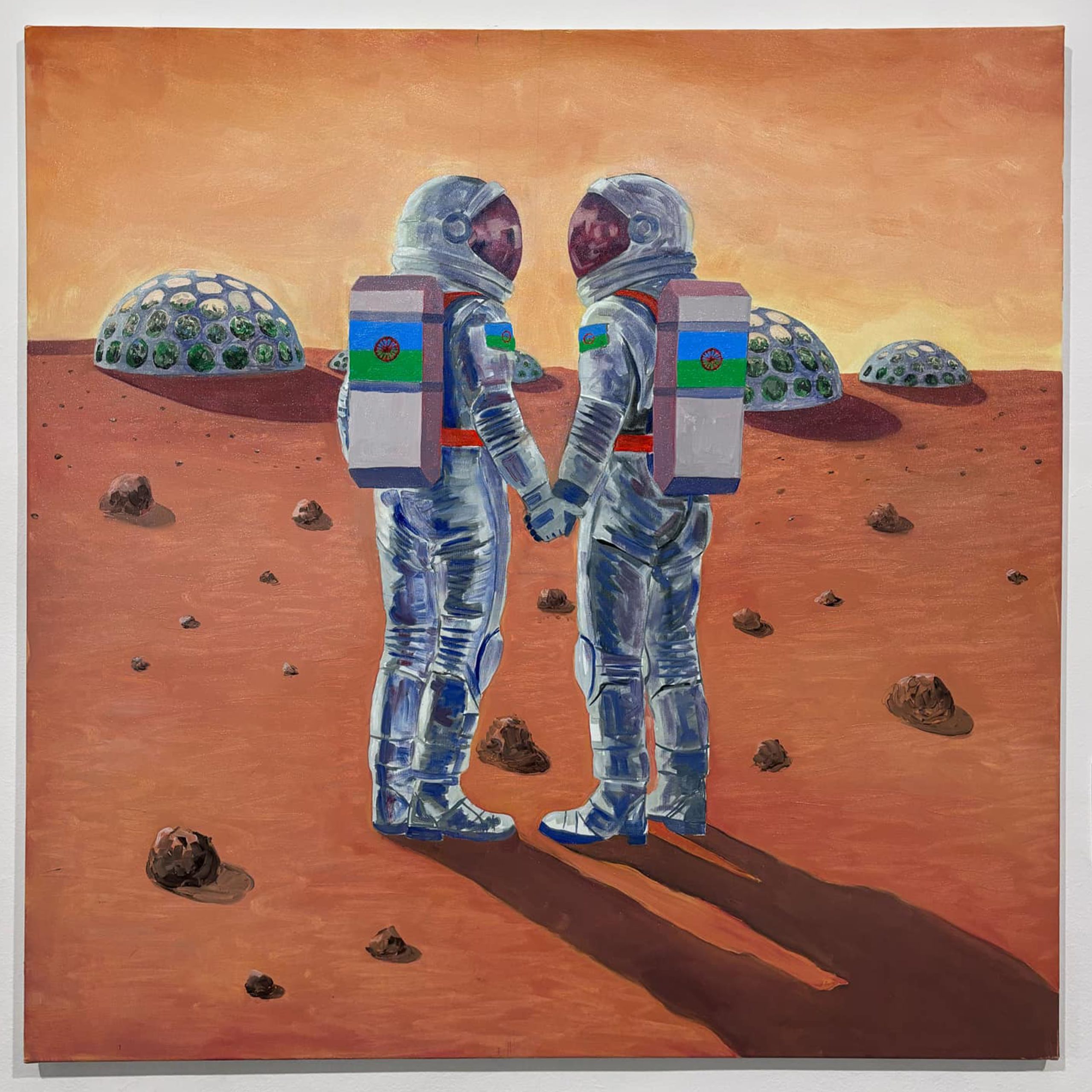
This paper seeks to explore the interaction between Roma identity and creative mechanisms, examining whether there is an ethnically defined form of art. It investigates the relevance of the concepts of belonging and the impact of a Roma artist’s social environment in the interpretation and reception of their artwork. By discussing the correlation between minority…
Text by Dr. Barbara Bódi ›››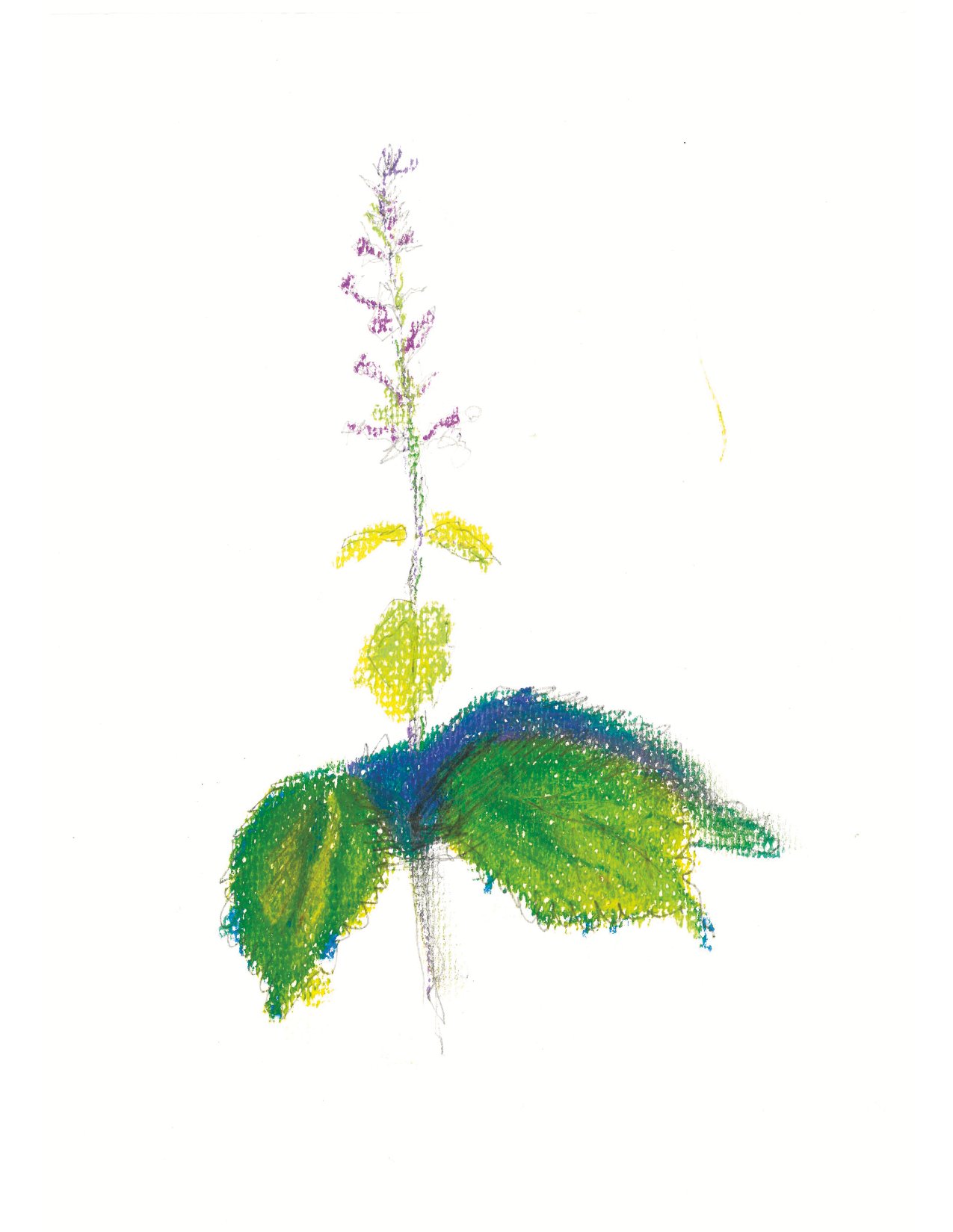
Dan Turner, Woven Strength, Inhabited Space, plants and mixed media, 2025 Spend some time among these precious herbs, heal your soul, listen to the wisdom they are here to offer and then visit our gallery across the street. Discover the exhibition HOLDING GROUND: Crafting New Paths in a Changing World We are the European…
Text by Eriac Team Member ›››
International Guest Artists 2025: Romy Rüegger and Monika Kováčová A cooperation between the European Roma Institute for Arts and Culture (ERIAC) and Villa Romana, Florence. Villa Romana and ERIAC are pleased to announce the recipients of their joint artist-in-residency programme for 2025: Romy Rüegger and Monika Kováčová. This ongoing collaboration—initiated in 2020—represents a shared…
Text by Eriac Team Member ›››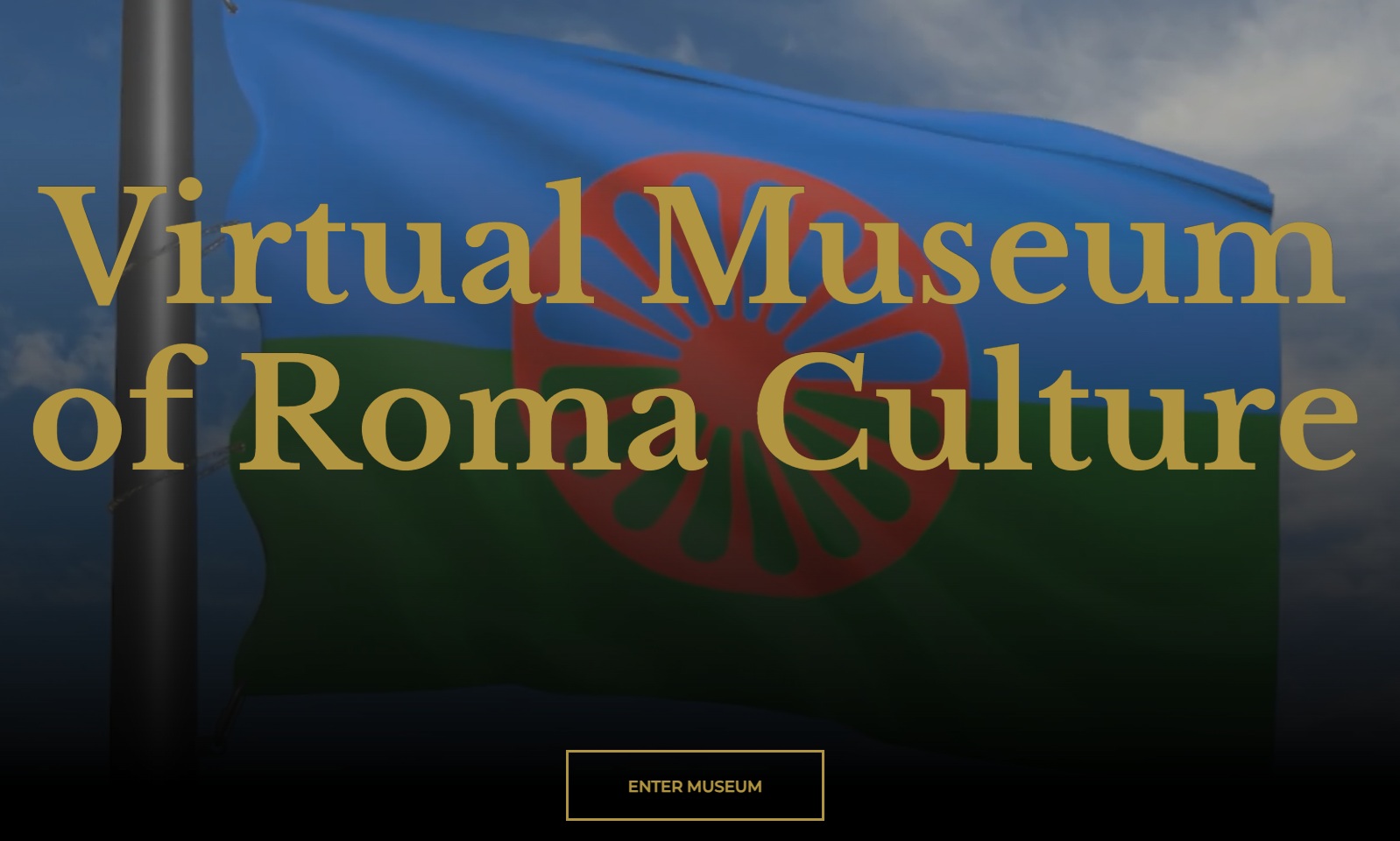
REPARATORY MEMORY AND TRANSITIONAL JUSTICE FROM A POST-POSTMODERN PERSPECTIVE This essay is an introduction to extended research. It aims to reflect upon what a contemporary Romano Museum should hold as its mission and how it should look in order to meet the requirements and the demands of the 21st-century visitor and society in general,…
Text by Delia Grigore ›››
Villa Romana Residency in Florence for Roma Contemporary Artists 2025 For the sixth consecutive year, the European Roma Institute for Arts and Culture (ERIAC) and Villa Romana continue their collaboration to support two contemporary artists of Roma origin, through an artistic residency programme in Florence. This program provides a dedicated space for artistic research, production, and…
Text by Eriac Team Member ›››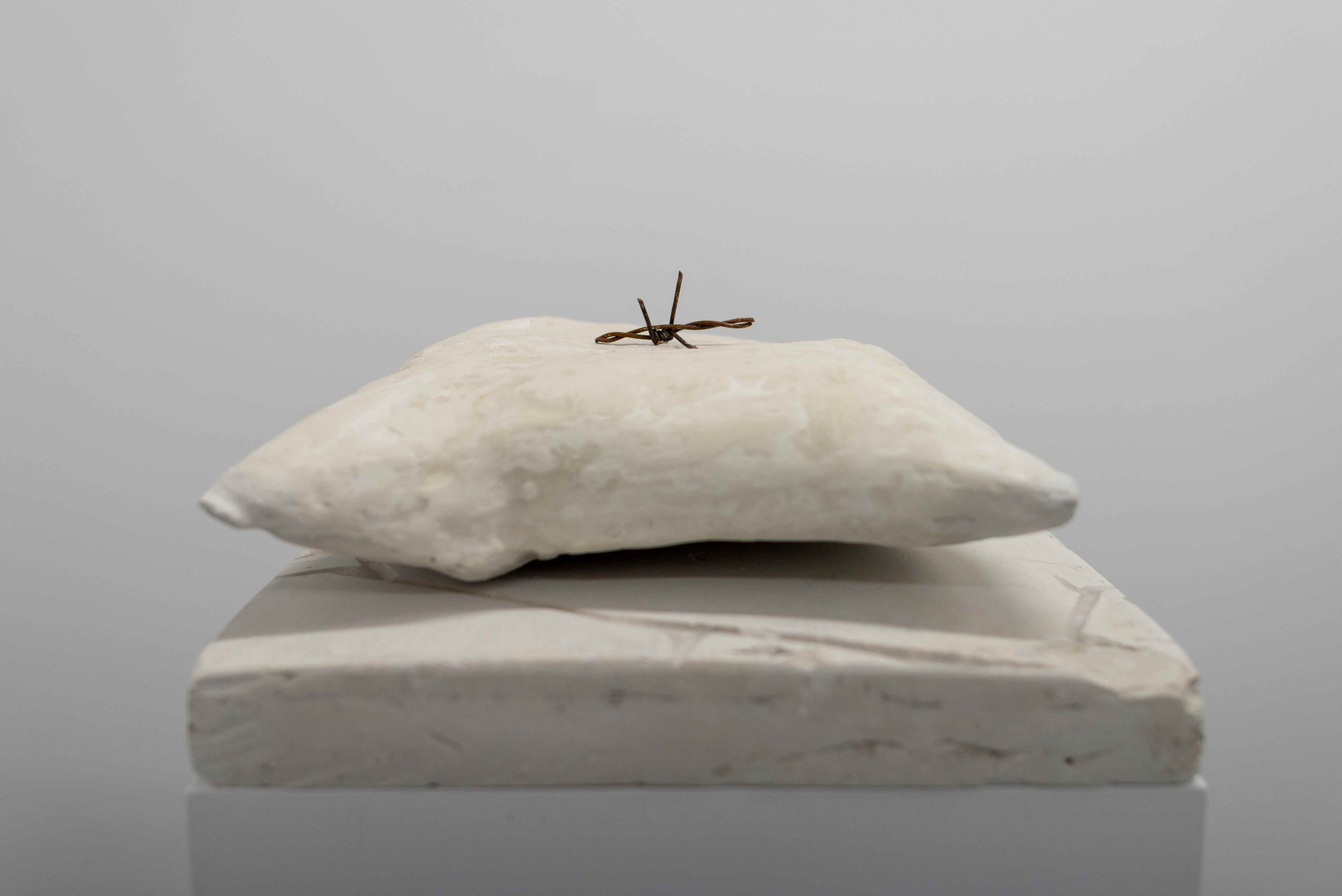
Chandeliers with Eyes In memory of Constantin Anica With my hands, I crush the grain; Crumbs fall to the ground. I gather them all in my fist— The place remains so stark and white. Buried deep within the earth, The slaked lime slowly melts, Mixed with tears that stain my palms. In my…
Text by Norica Costache ›››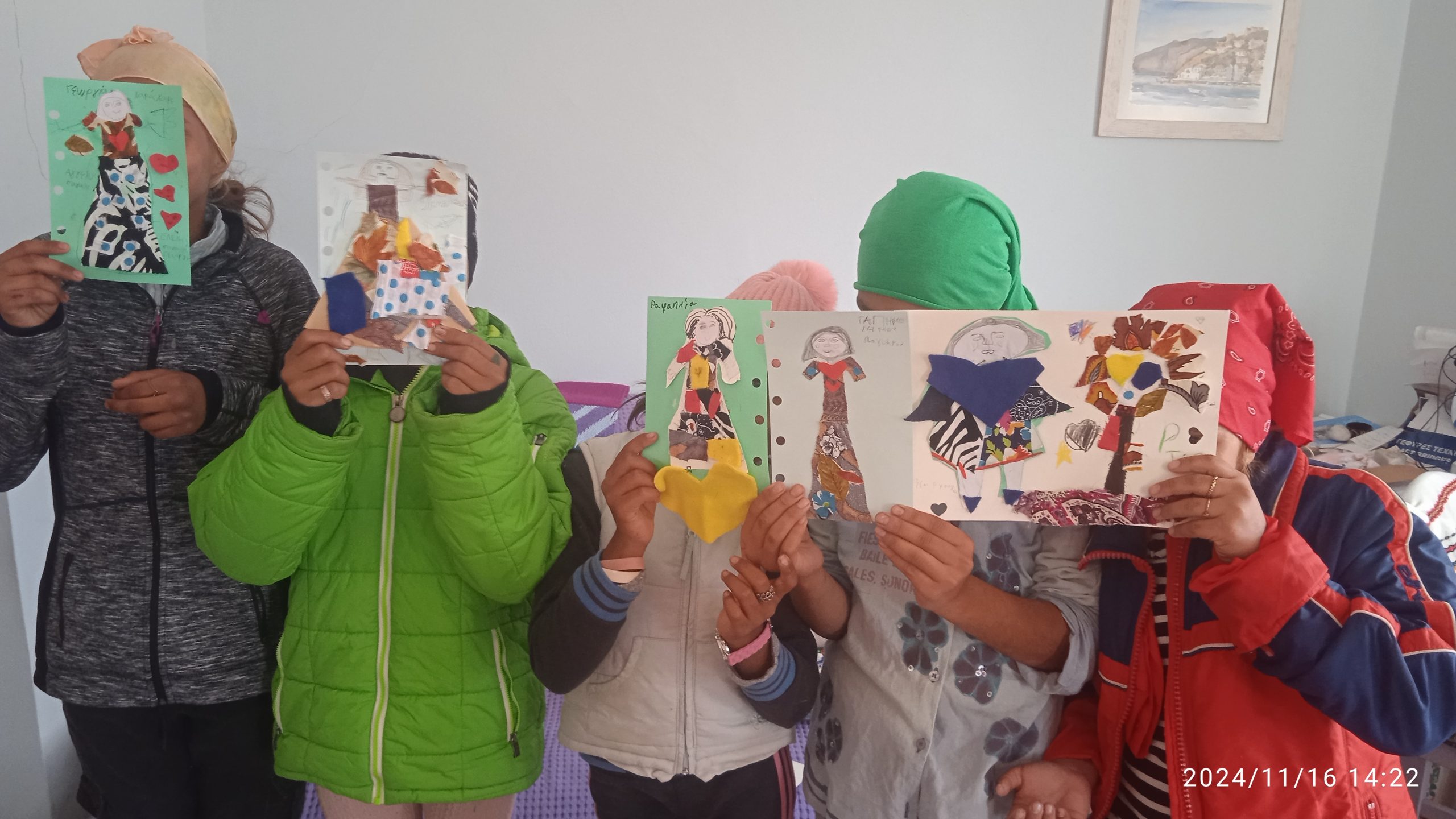
A Journey into Roma Identity and Cultural Resilience Through the Eyes of Young Greek-Roma Girls in Lesbos Teaser: Małgorzata Mirga-Tas’s powerful textile art transcends geographical and cultural boundaries, facilitating a profound dialogue between Roma cultural identity and the wider world. Her work, showcased in the Space of Togetherness exhibition in Athens, inspired young Roma girls…
Text by Ángela María Arbeláez ›››
Louis Burkler, Marina Rosselle and Romuald Jandolo at the Rivesaltes Camp Memorial: Remembrance as Resistance and Transformation The Rivesaltes Camp Memorial exhibition, Le Camp des Familles (15.03.2024 – 14.02.2025), explores the persecution of the “Nomads” in France during WWII through history and art. Featuring works by Louis Burkler, Marina Rosselle, and Romuald Jandolo, it merges…
Text by Elora Weill-Engerer ›››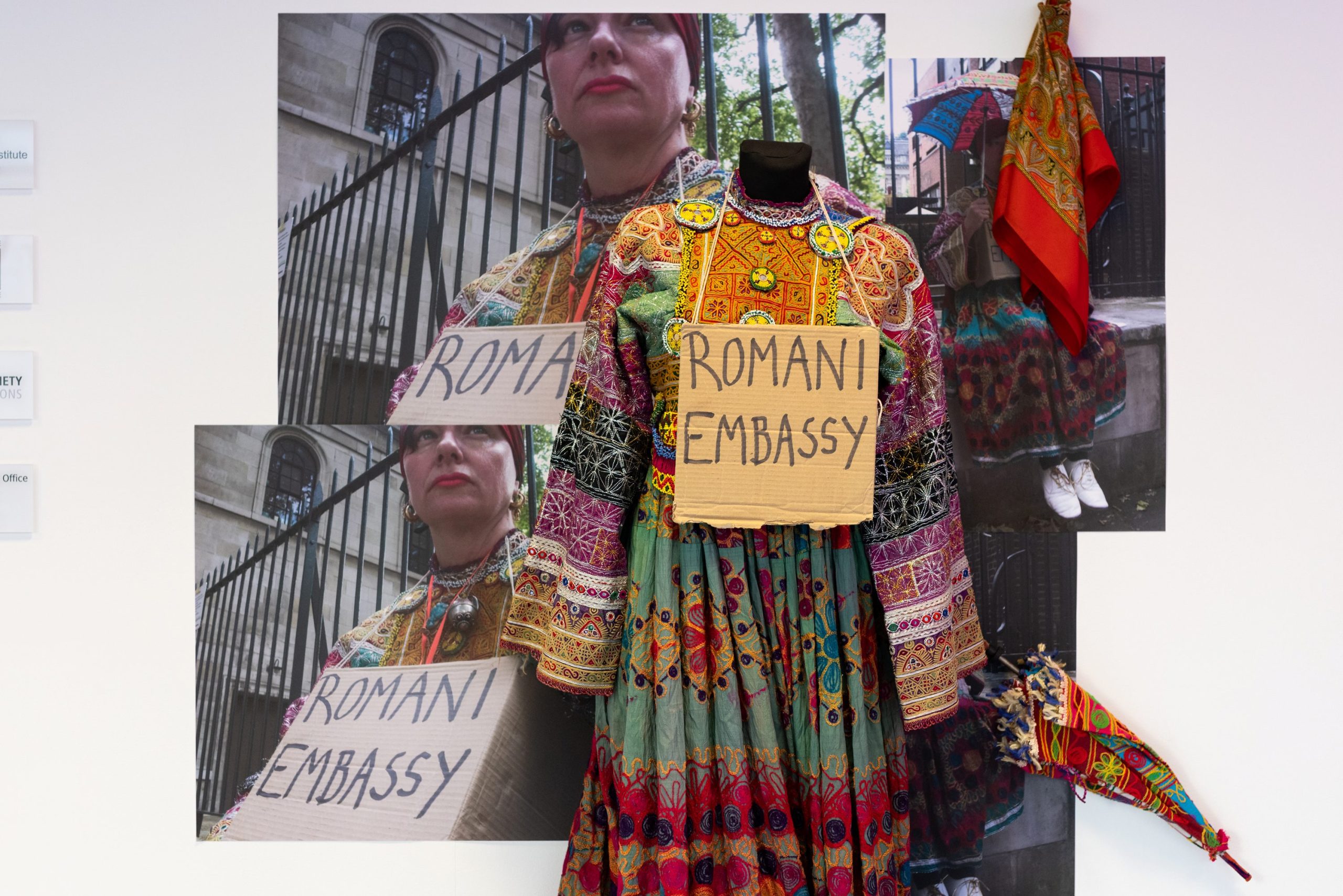
Signs of national sovereignty. Places of immunity and inviolability. Symbolic territories of cultural exchange and economic ties. Platforms for negotiation and dialogue. Primary channels of communication — but above all: a piece of homeland offering protection to its citizens. What are embassies for? And who do they represent? Romani Embassy is an ongoing installation and…
Text by Eriac Team Member ›››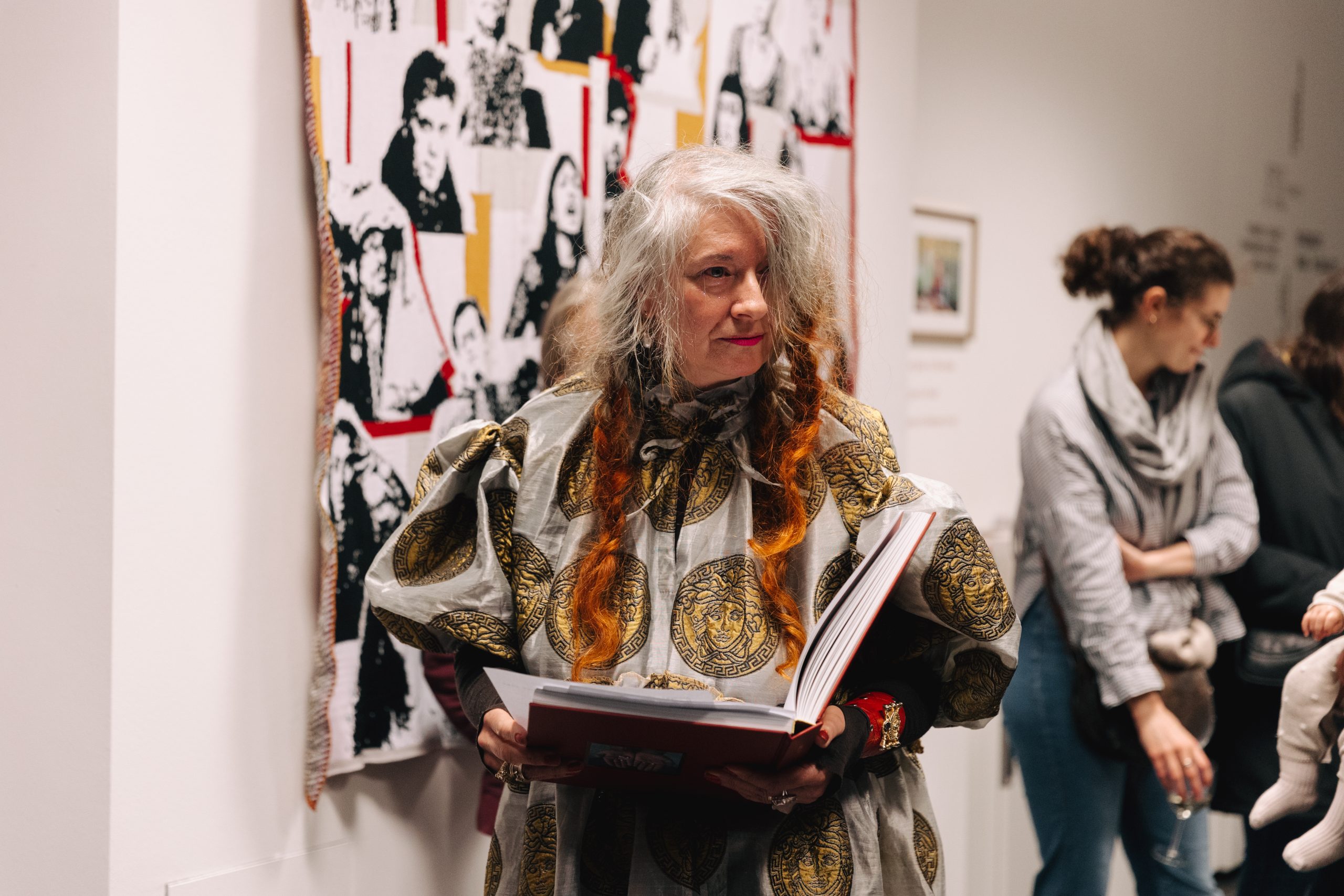
A bond of profound connection and heartfelt affection—this beautifully defines the relationship between these two artists. Turner Prize 2024 nominee Delaine Le Bas graced the opening of Nihad Nino Pušija: In Search of Eldorado – Roma and Sinti in the Struggle for Representation with a performance dedicated to her “brother, Nino”. In her performance, Delaine…
Text by Eriac Team Member ›››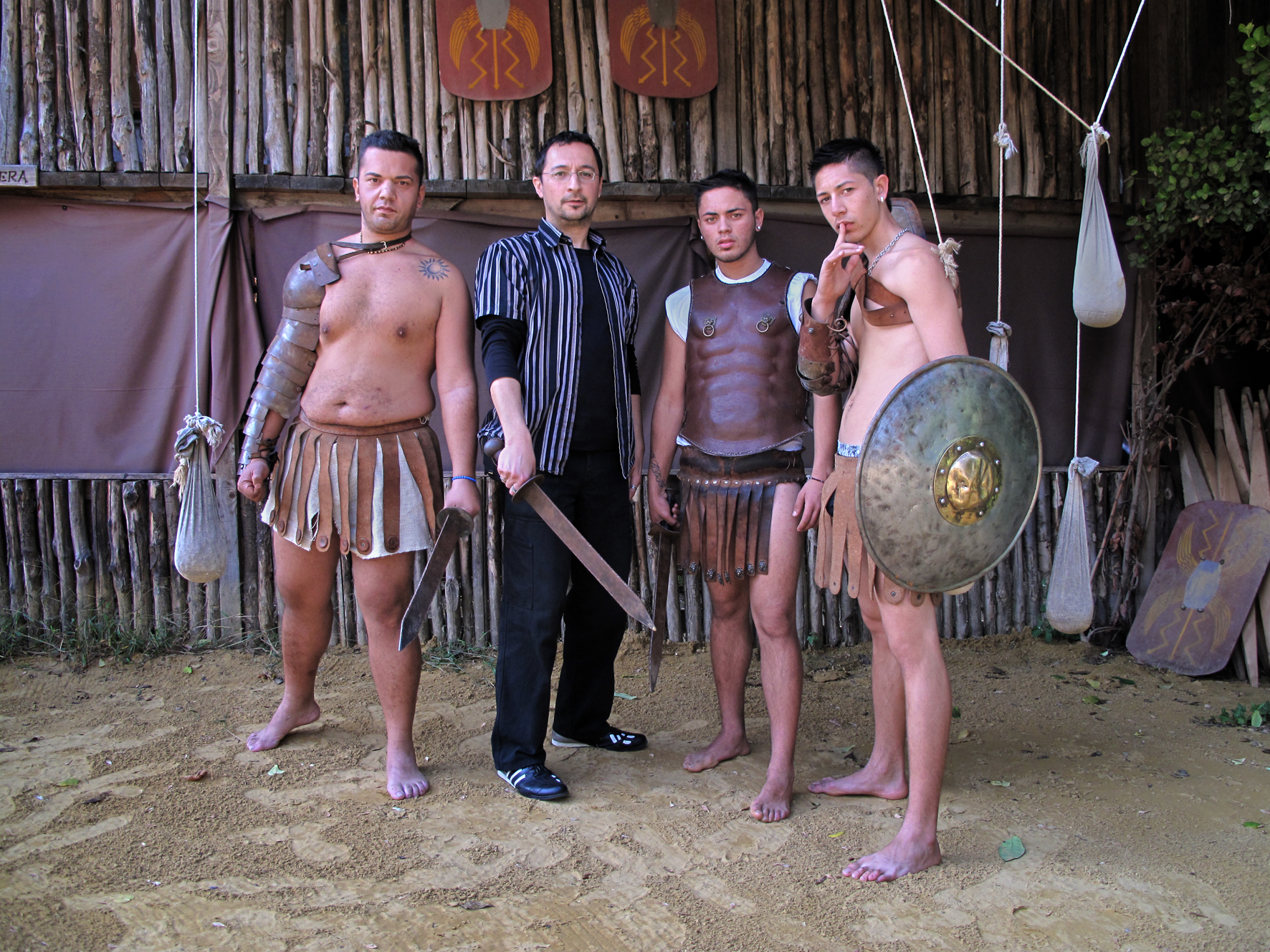
Encompassing the complexity, versatility, and resourcefulness of the artistic opus of Nihad Nino Pušija is next to impossible in a single text. What makes Pušija’s over thirty-five-year professional artistic career difficult to embrace in any general overview is his use of a wide range of media, his engagement in different topics, motifs, and art genres,…
Text by Suzana Milevska ›››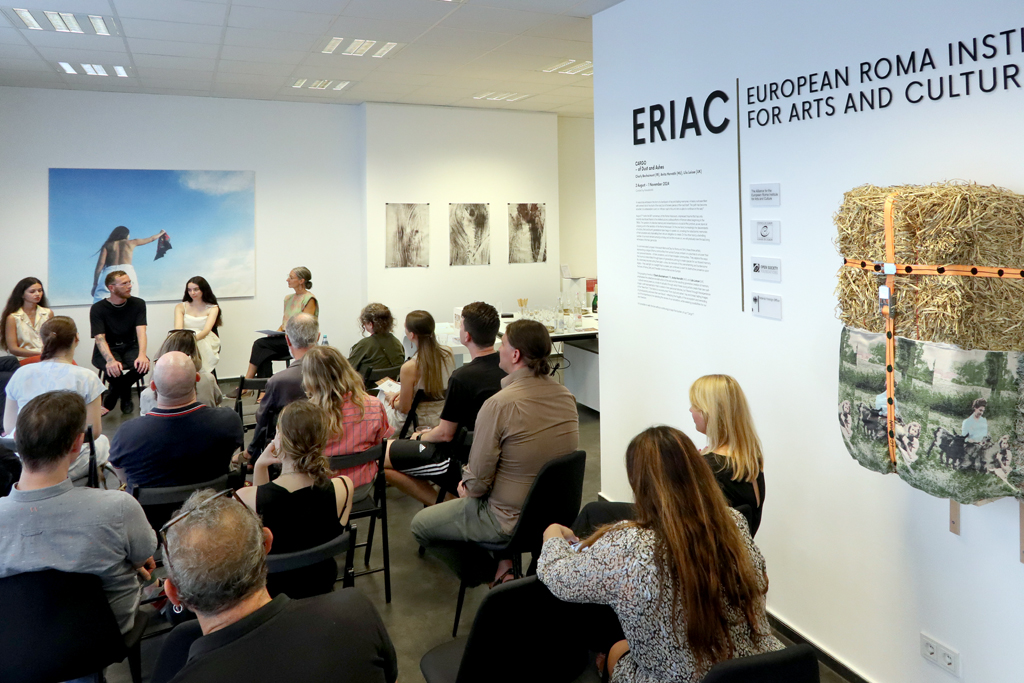
To mark the 80th anniversary of the Roma Holocaust and commemorate European Holocaust Memorial Day for Roma and Sinti, ERIAC presented the exhibition CARGO – of Dust and Ashes, curated by RomaMoMA. The show aimed at a collective reconstruction of history, through the lenses of the youngest generations of artists of Roma origin. Charly Bechaimont…
Text by Eriac Team Member ›››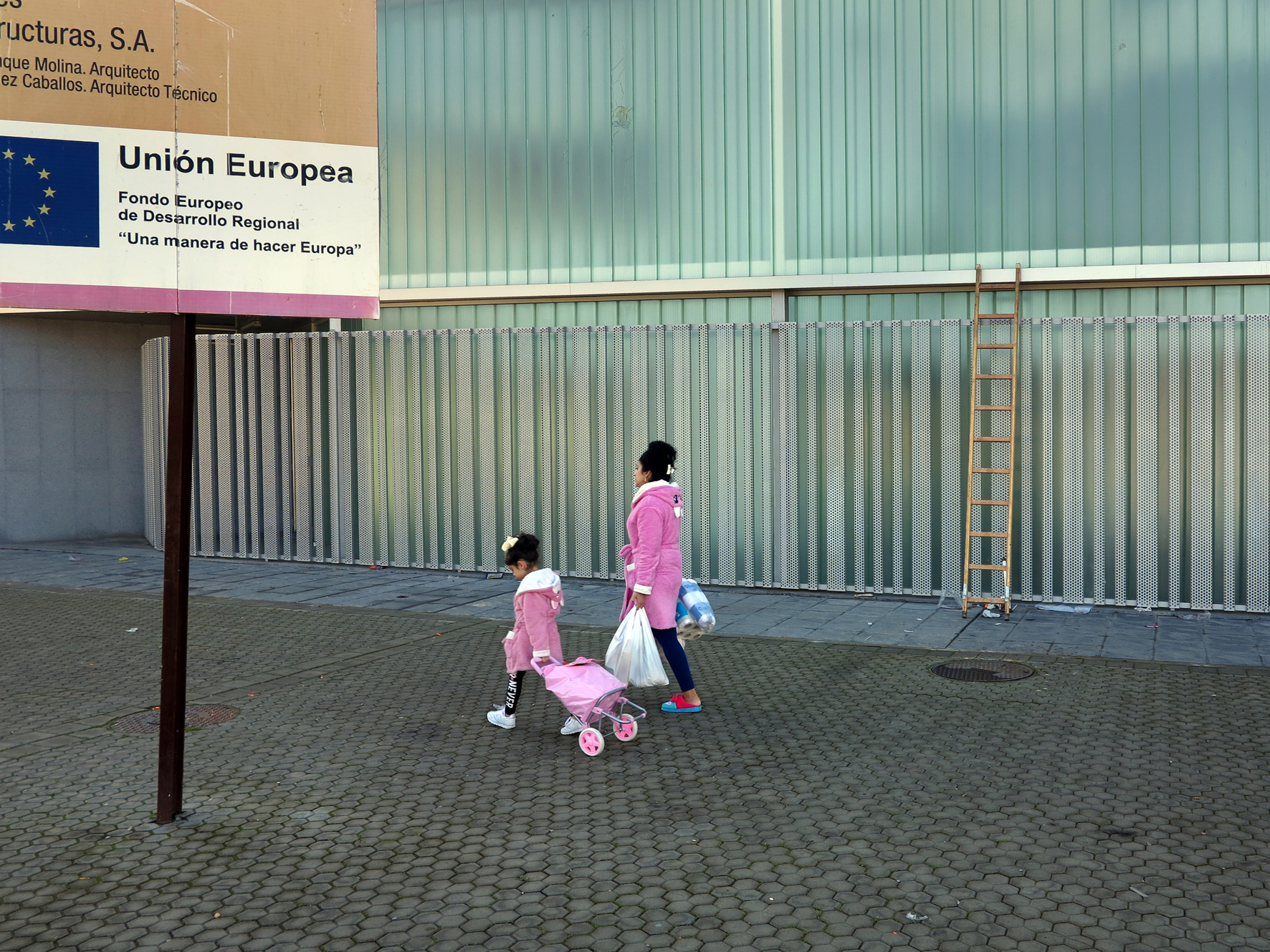
ERIAC presents the monograph by Nihad Nino Pušija: In Search of Eldorado – Roma and Sinti in the Struggle for Representation, edited by Rena Rädle & Vladan Jeremić. A related exhibition curated by RomaMoMA, featuring a selection of Pušija’s photography, showcasing over 30 years of Roma representation, will be held at the European Roma Institute…
Text by Eriac Team Member ›››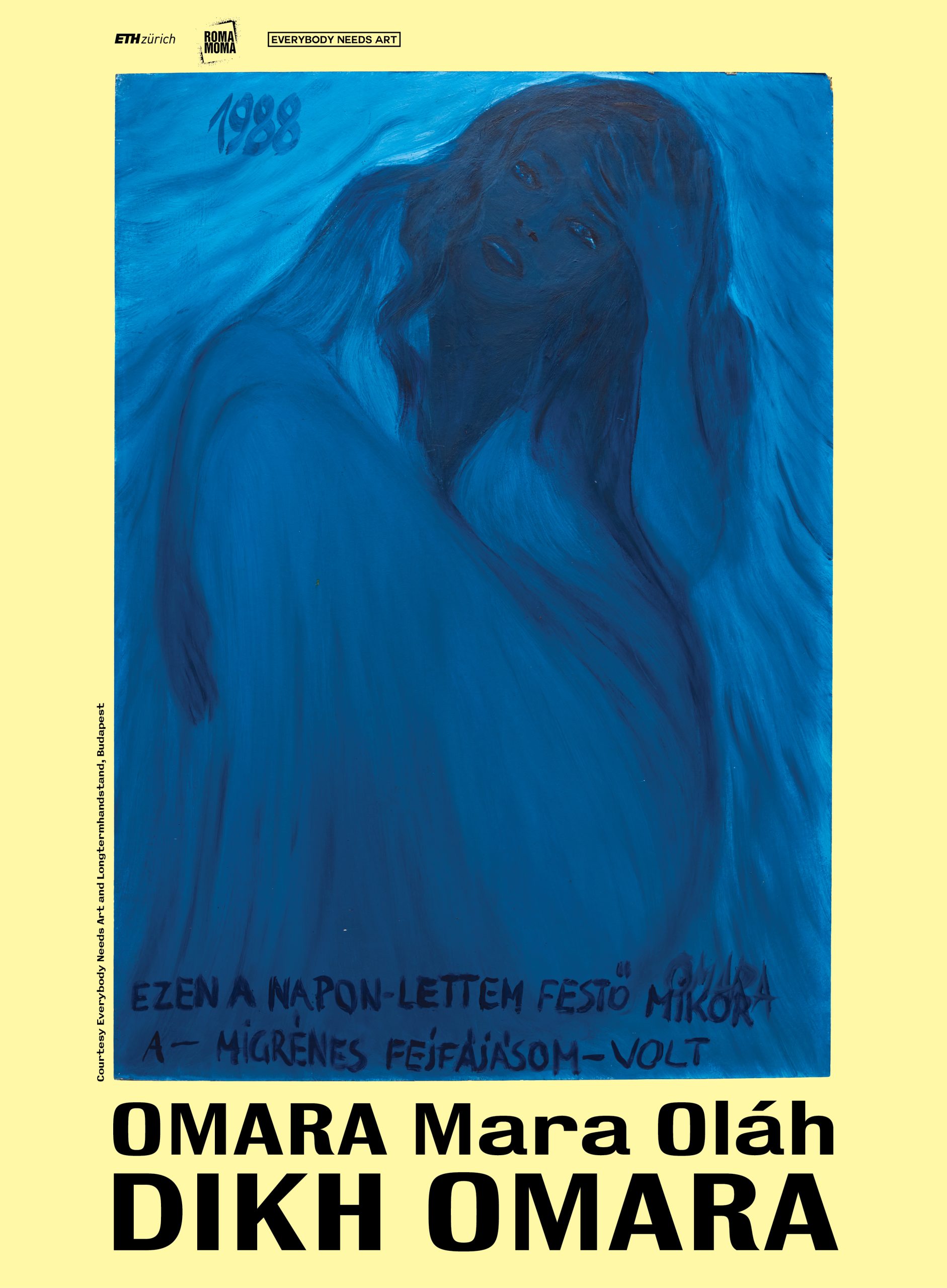
With contributions by Péter Bencze, Timea Junghaus, Ábel Sánta, Selma Selman, Everybody Needs Art, RJSaK ARCHIV, RomaMoMA and a display by Studio Caruso. An exhibition curated by Fredi Fischli and Niels Olsen 2 October – 9 November 2024 gta exhibitions at ETH Zurich, ONA Fokushalle, Oerlikon Neunbrunnenstrasse 50, CH-8050 Zurich Opening: 1 October 2024,…
Text by Eriac Team Member ›››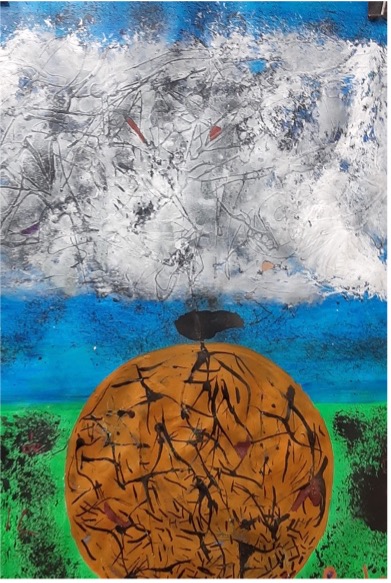
Almost two decades have passed since the first exhibition of contemporary Roma art was held at the Venice Biennale in 2007. In these years, Roma representation has been discontinuous, although the periodicity and the demand for their own pavilion continues to be a struggle for institutions and agents such as the European Roma Institute for…
Text by Iván Periáñez Bolaño ›››
CARGO – of Dust and Ashes exhibition featuring works of Charly Bechaimont (FR), Anita Horváth (HU), Lila Loisse (UK) Curated by RomaMoMA | Emese Molnár August 2nd marks the 80th anniversary of the Roma Holocaust, a repressed trauma that has only recently resurfaced thanks to the intellectual and political efforts of Romani elites beginning…
Text by Eriac Team Member ›››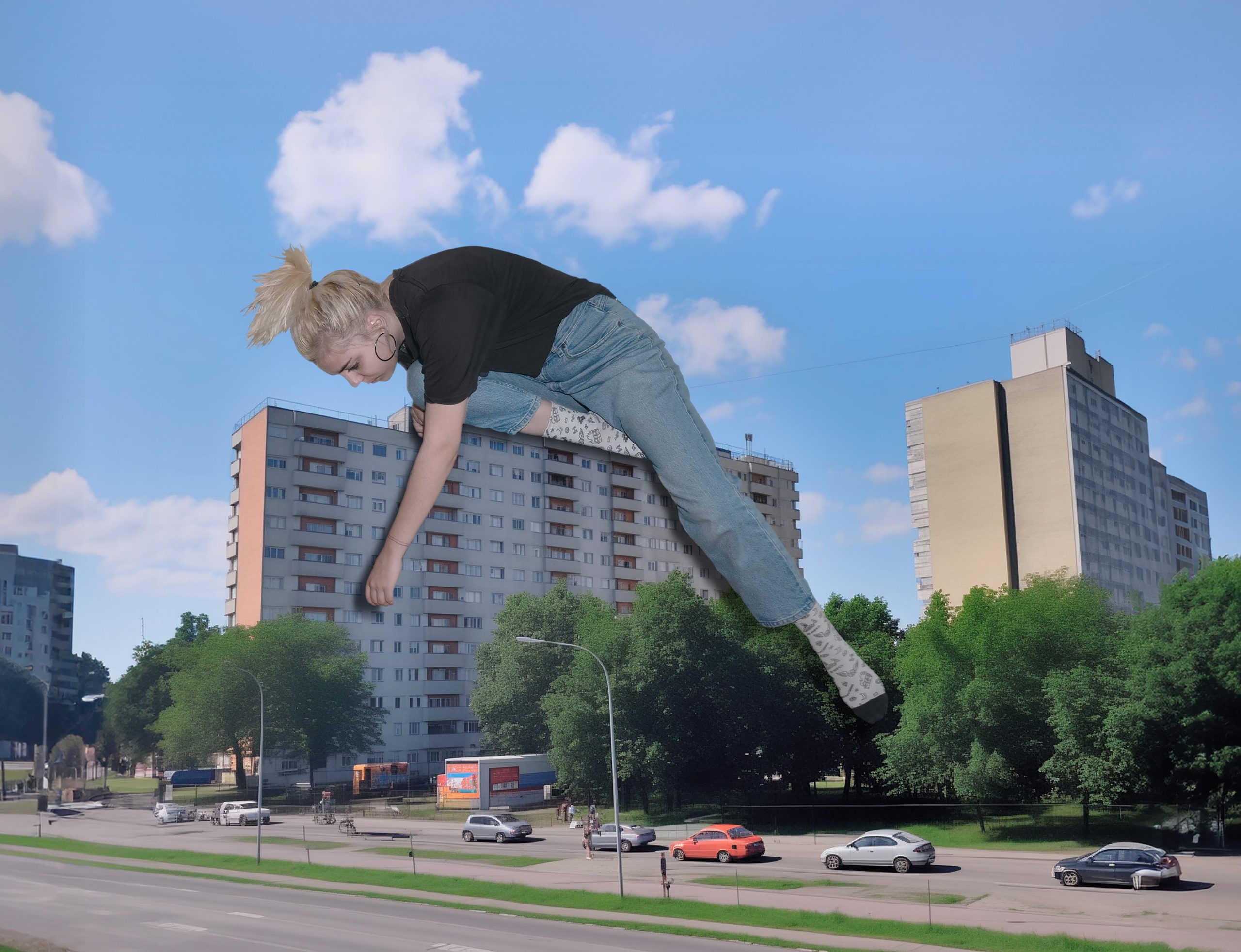
Magazyn RTV presentation and discussion at ERIAC on June 13th, Thursday, 18:30 Reinhardtstraße 41-43, 10117 Berlin RTV Magazine (Magazyn RTV) is the online platform for art and activism published by the Municipal Gallery Arsenal in Poznan, Poland. The European Roma Institute for Arts and Culture (ERIAC) hosts the launch event of the magazine’s latest…
Text by Eriac Team Member ›››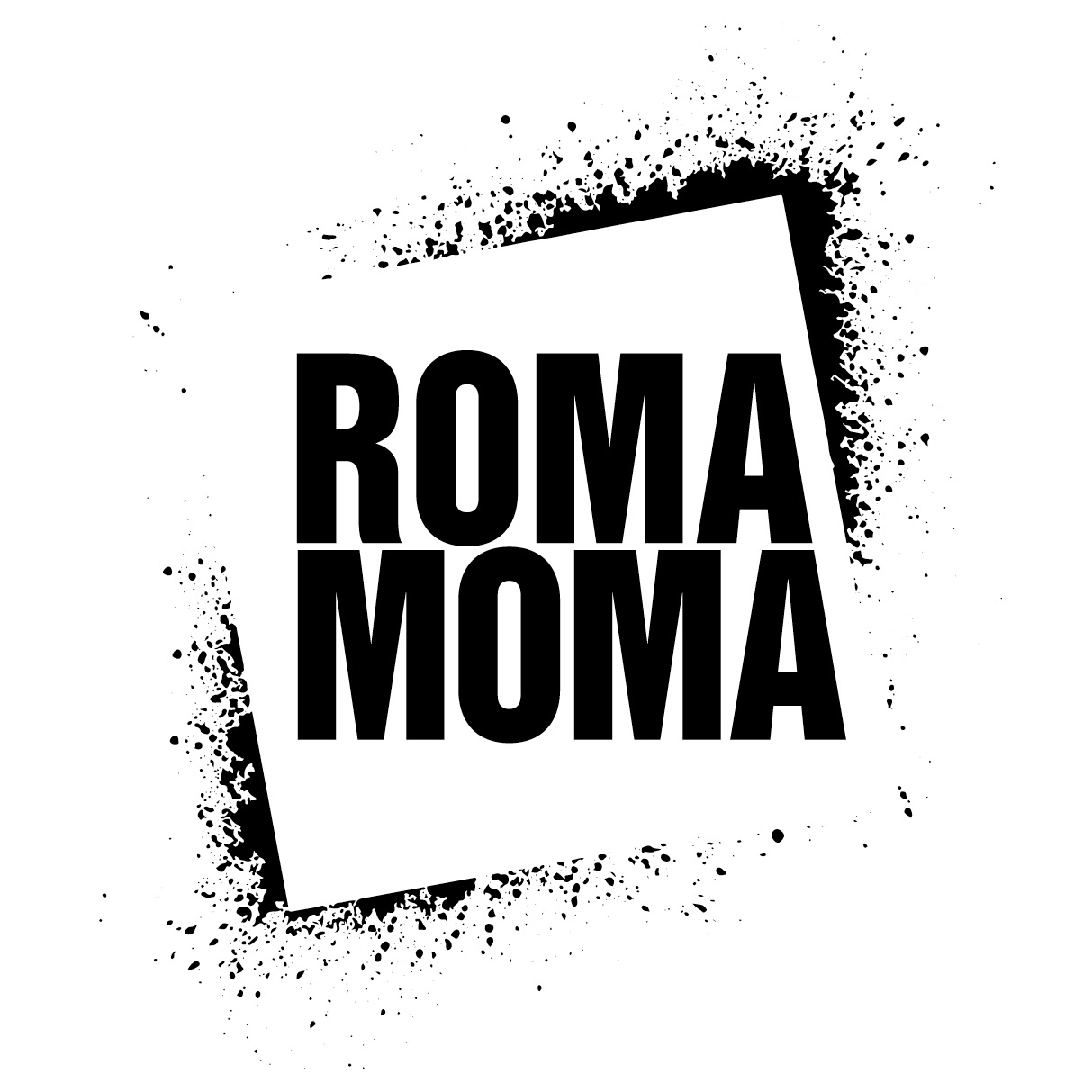
Join our team in Berlin! Project Duty Station: Berlin, ERIAC Office Duration: minimum 3-month commitment, part-time (4 hours/day) possible Deadline for applying: May 24, 2024 Are you passionate about shaping the future of contemporary art and cultural representation? RomaMoMA invites individuals with a keen interest in art, culture, and social discourse to join us in…
Text by Eriac Team Member ›››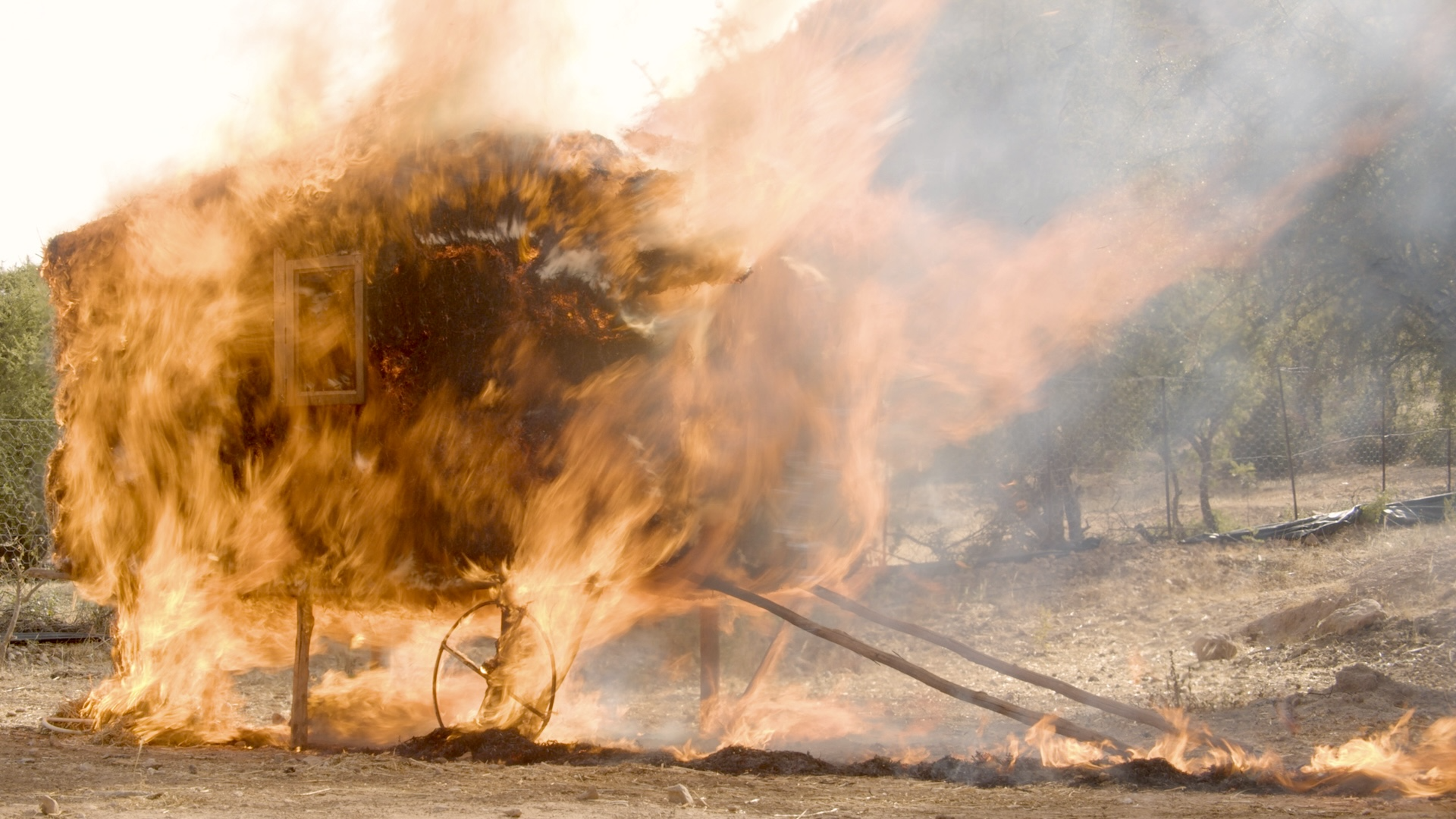
International Guest Artists 2024: Charly Bechaimont and Lila Loisse A cooperation between the European Roma Institute for Arts and Culture (ERIAC) and Villa Romana in Florence. Villa Romana and ERIAC are pleased to announce the winners of their joint artist-in-residency program for 2024, following successful collaborations since 2020. Villa Romana is a place of…
Text by Eriac Team Member ›››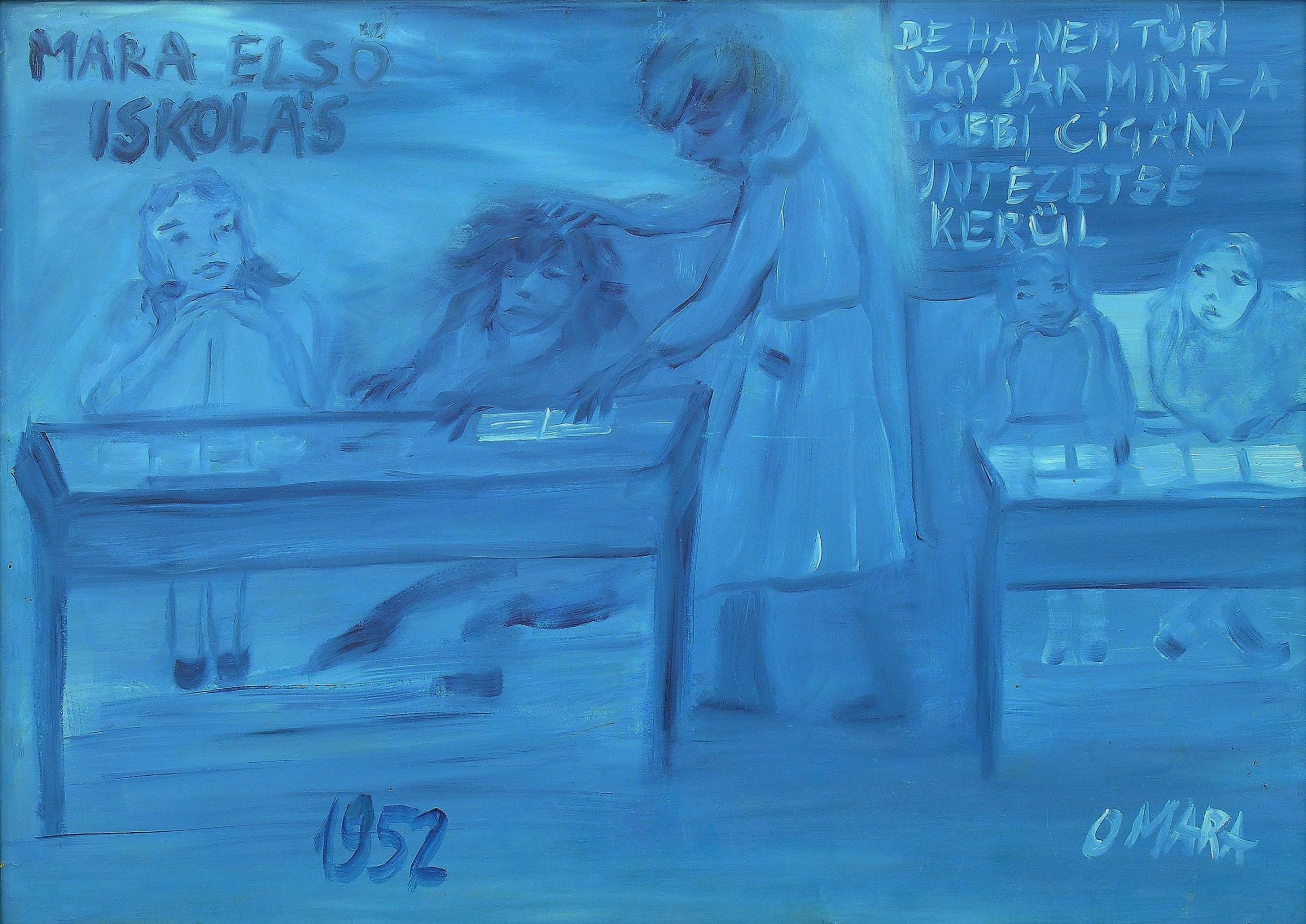
Care permeates almost every aspect of our social reality. It is partly in the wake of the COVID-19 pandemic that both collective and individual care has been brought into sharper focus than ever before. The global pandemic has shed light on the politics of care and has shown the heavy burden on women, social workers,…
Text by Viktória Popovics ›››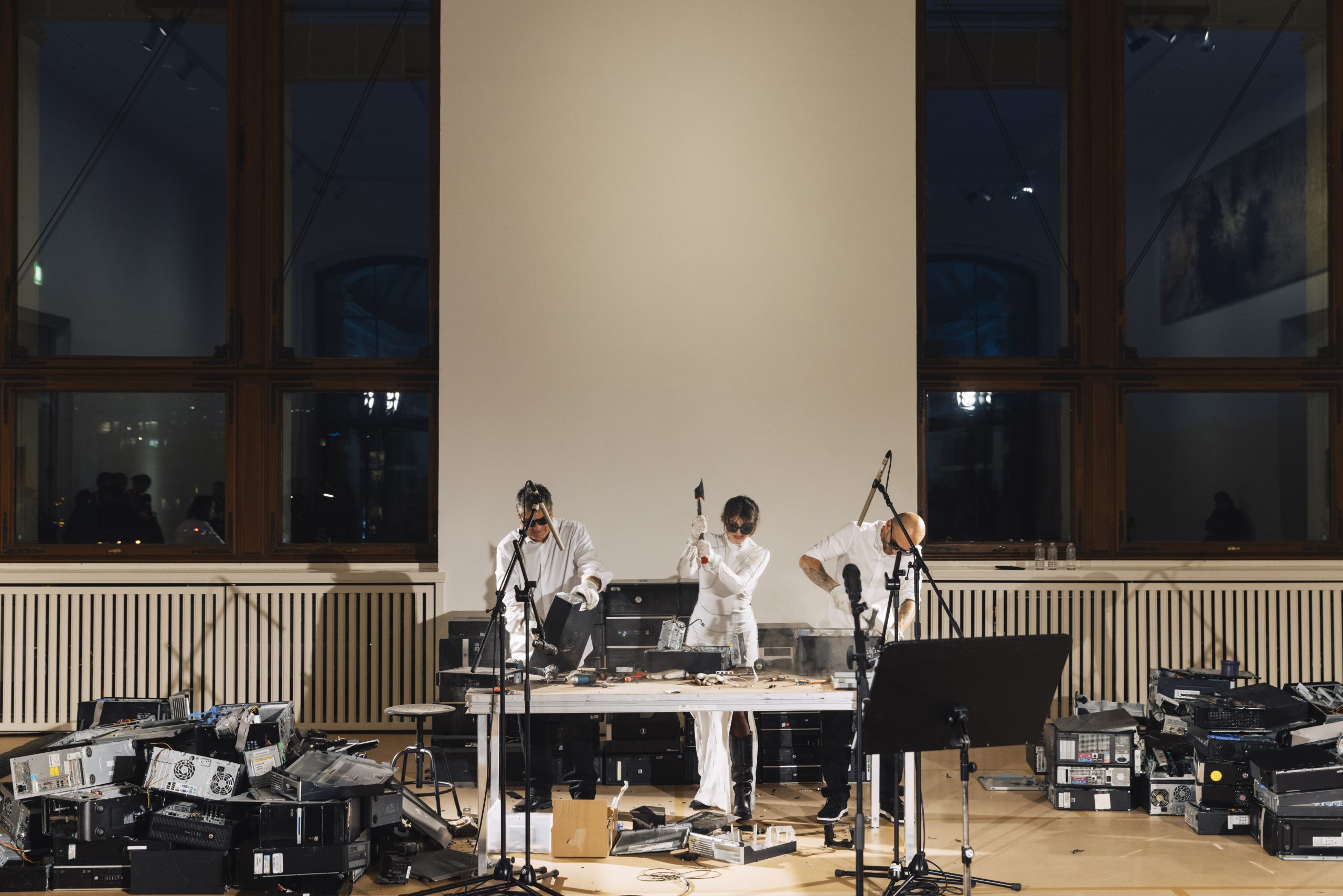
The surface is never simply smooth or clean in Selma Selman’s works. The artist paints on objects such as car bonnets, bathtubs or satellite dishes as naturally as if they were stretched canvases. These objects are then either displayed freely in the room or are carefully arranged on the wall, constantly moving on the border…
Text by Viktória Gere ›››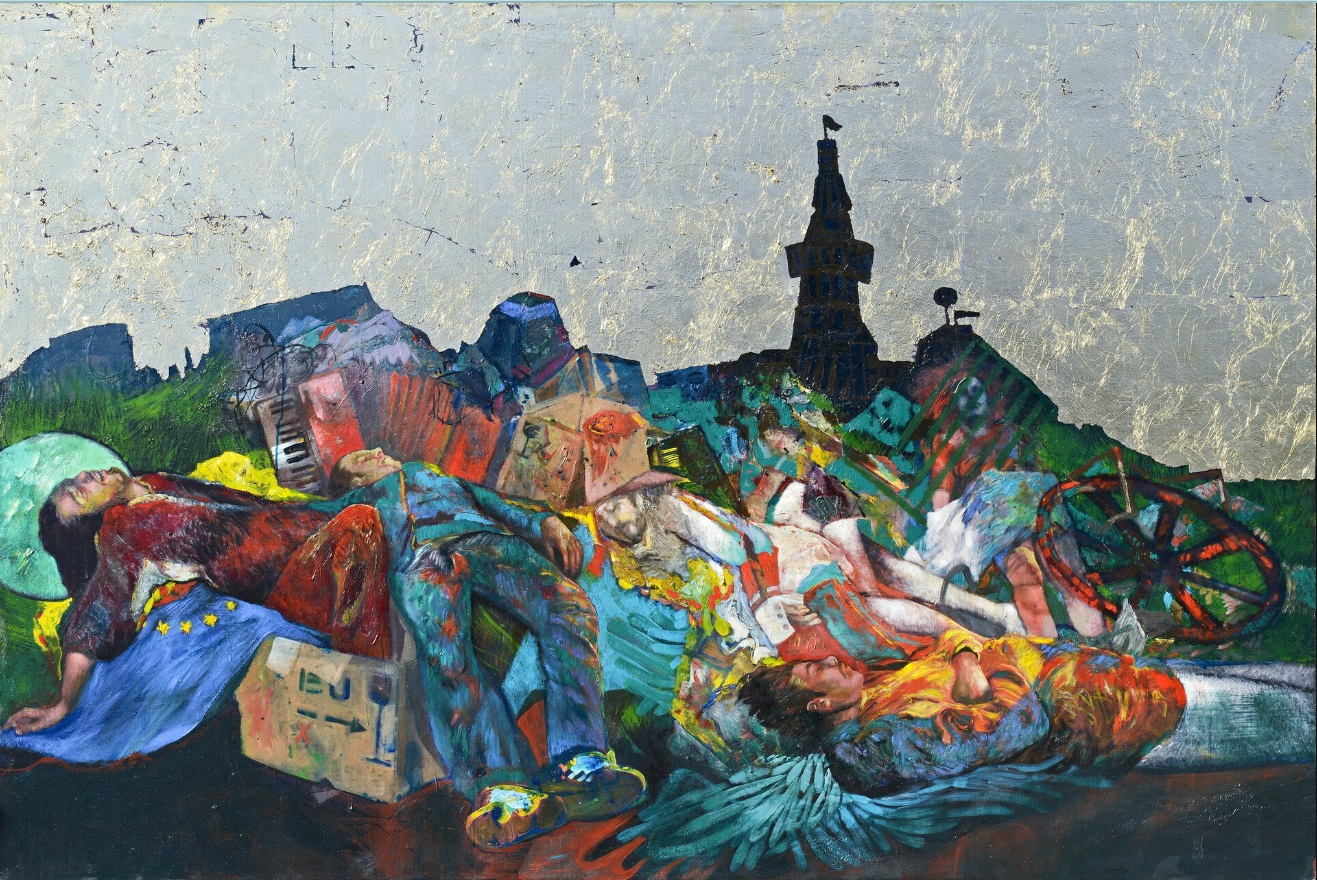
The exhibition currently on view at the European Roma Institute for Arts and Culture (ERIAC) Serbia, in Belgrade, titled “Gypsyism, Balkanism – Through a glass, darkly”, curated by Bratislav Mitrović, features five artists of Roma origin, who engage in intimate dialogue with the history of -frequently hurtful- representations of Roma. Through their works, Małgorzata Mirga-Tas…
Text by Ljubica Jelisavac ›››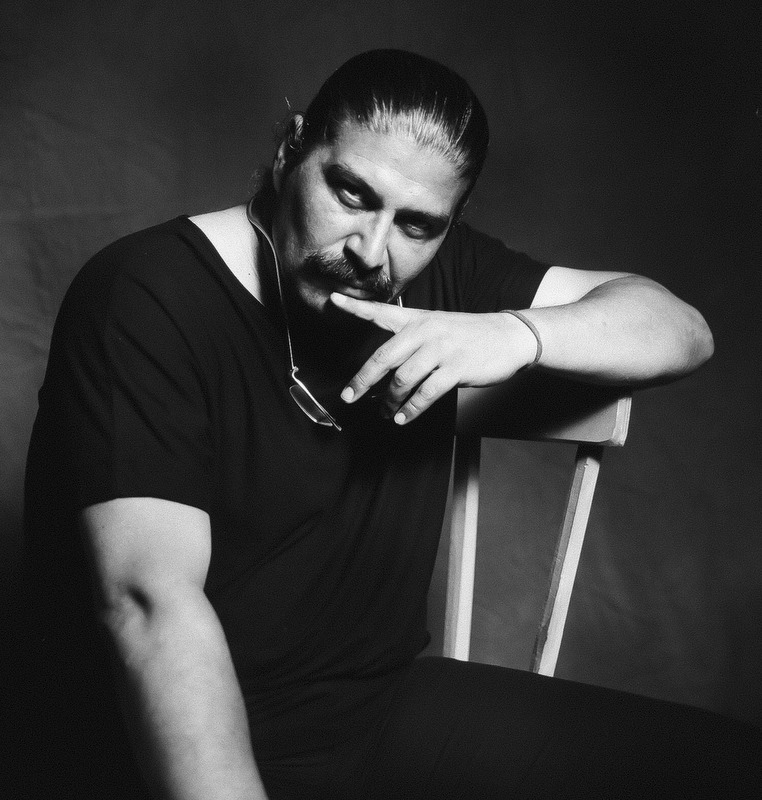
There is no singular truth; this people, like any other, has its own history, tradition, and language, embodying a source of culture. It is precisely this source that constitutes an unfinished process of existence. The Roma serve as a prime example that identity is complementary and ever evolving, both on an individual and a collective…
Text by Nedjo Osman ›››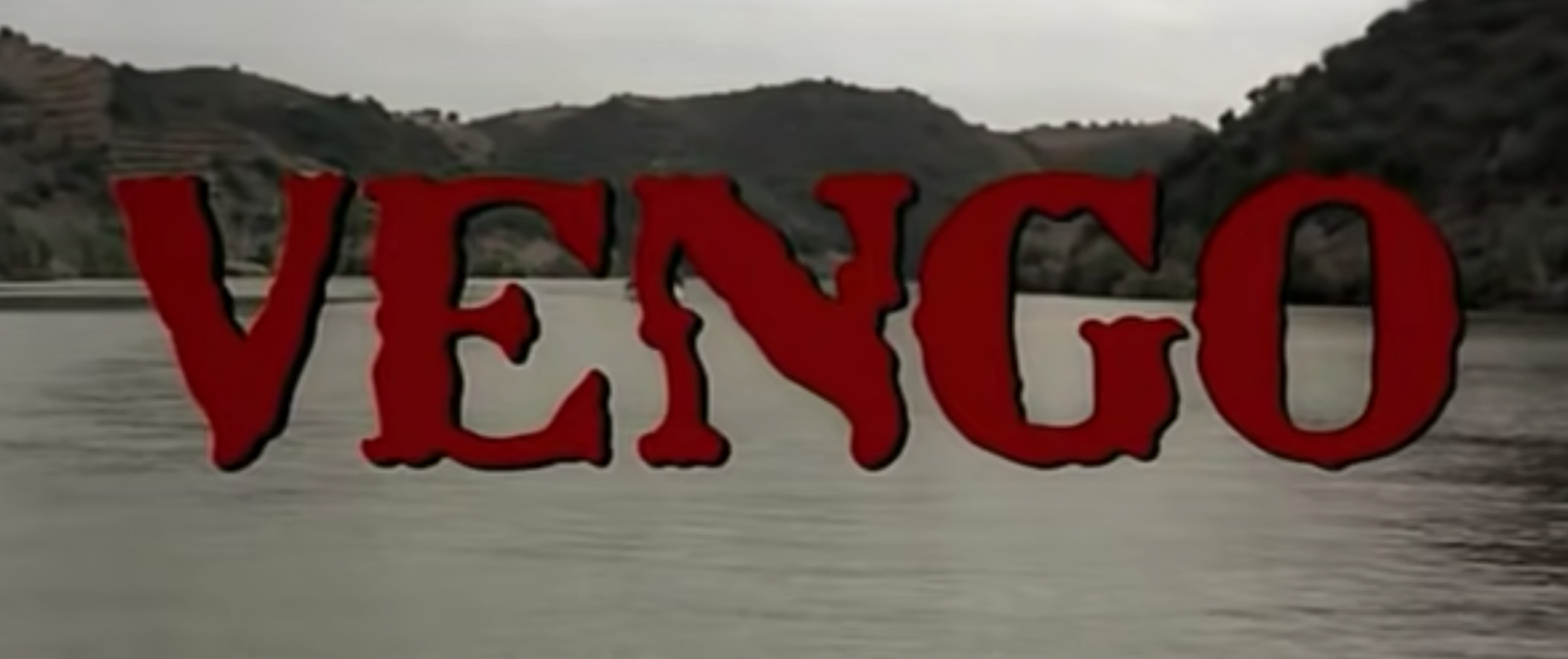
Everyone belongs elsewhere, and elsewhere could mean both everywhere and nowhere. Sung by Remedios Silva Pisa, Yasmin Levy, Eleni Vitali, Emel Mathlouthi, Zeynep Bastik and others, ‘Naci en Alamo’ (‘I was Born in Alamo’) is a Ladino–Greek Romani ‘song about displacement and homelessness, and ultimately about nostalgia for a birthplace that was never home’ (Aciman…
Text by Övül Ö. Durmuşoğlu ›››
The summer of 2023 saw a true landmark accomplishment in the promotion and celebration of Romani art and culture. The Barvalo exhibition, on view 9 May until 4 September at Marseille’s Musée des Civilisations de l’Europe et de la Mediterranée (“Mucem”), a Tier-1, national-level French museum, was the first of its kind: by far the…
Text by Dr. Jonah Steinberg ›››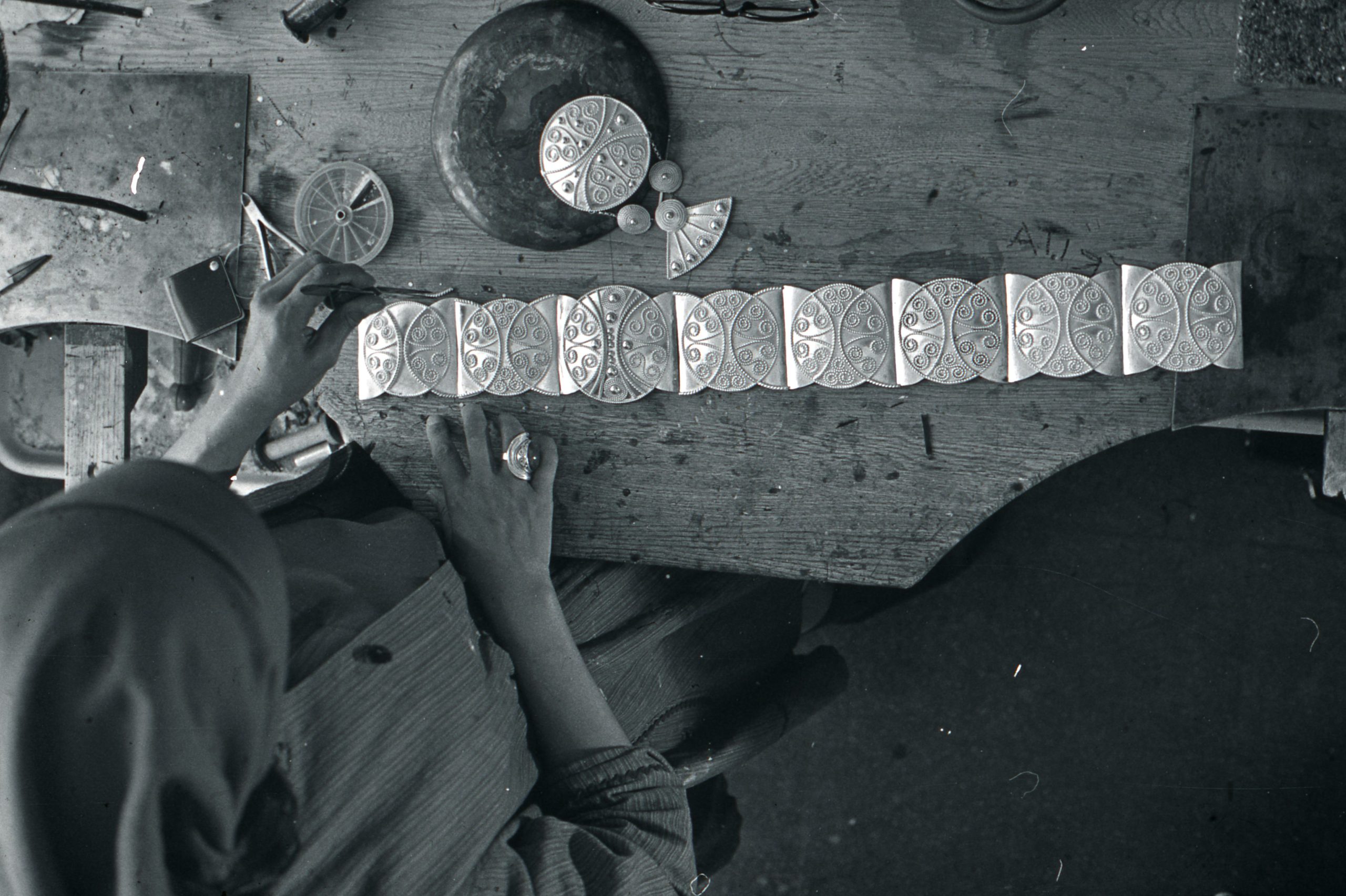
– About the Exhibition Roma Jewellery Tradition – Rosa Taikon at the Nationalmuseum in Stockholm In the process of creating the exhibition, Roma Jewellery Tradition – Rosa Taikon, Rosa Taikon’s expressive jewellery became a point of departure for a demonstration of Roma history and heritage as well as a platform for the civil rights struggle of the…
Text by Christina Zetterlund ›››
In 2022, at the fifteenth edition of documenta in Kassel, I witnessed an interesting conversation between two visitors standing in front of a large-scale and impressive work by Tamás Péli. ‘Péli studied at the Koninklijke Academie van Beeldende Kunsten in The Hague,’ one of the two women read out from the label. The other immediately…
Text by Isabel Raabe ›››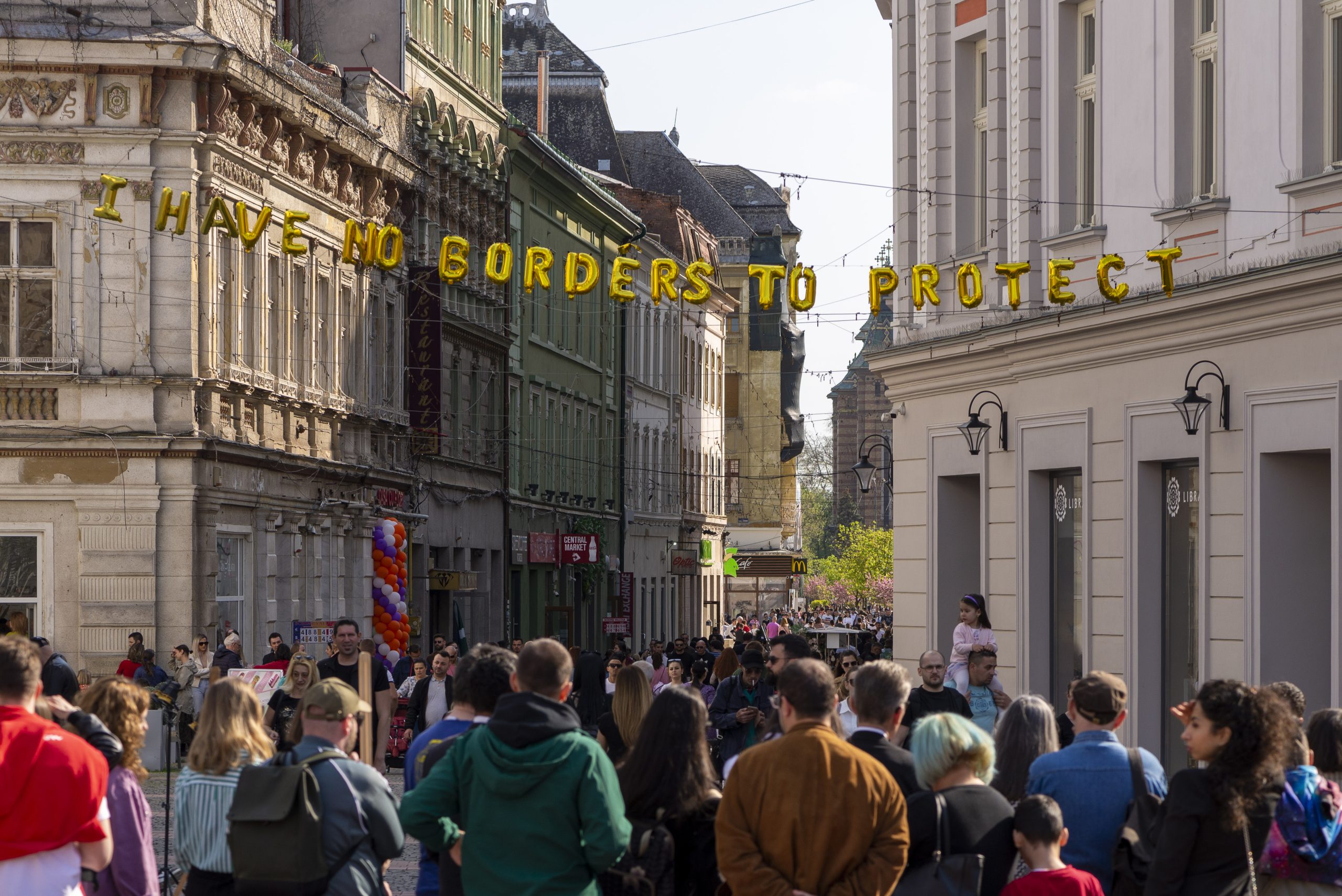
“Being Roma Is My Strength” was expressed explicitly by artist Ionela Mihaela Cîmpeanu during the very moving experience of a guided walking tour in April 2023 over the final weekend of the exhibition, Chronic Desire – Sete Cronică, which I co-curated as the inaugurating event of Timișoara 2023 European Capital of Culture. Embarking on my…
Text by Corina Oprea ›››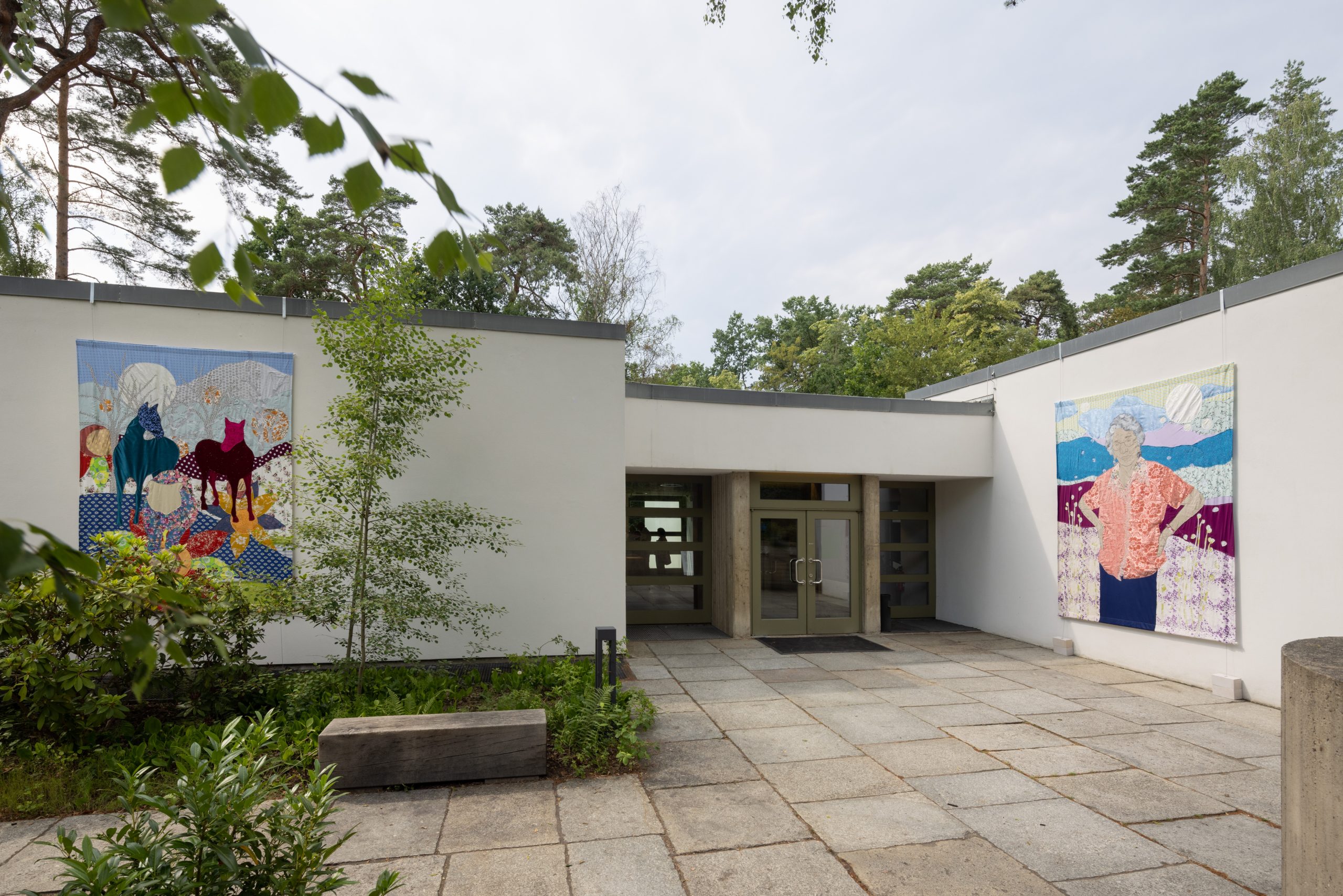
The exhibition, Sivdem Amenge / I sewed for us / Ich nähte für uns, with works by Polish-Romani artist Małgorzata Mirga-Tas was on view from 26 June till 3 September 2023 at the Brücke Museum in Berlin. RomaMoMA interviewed Lisa Marei Schmidt, Director of the Brücke Museum, for the occasion.
Text by Eriac Team Member ›››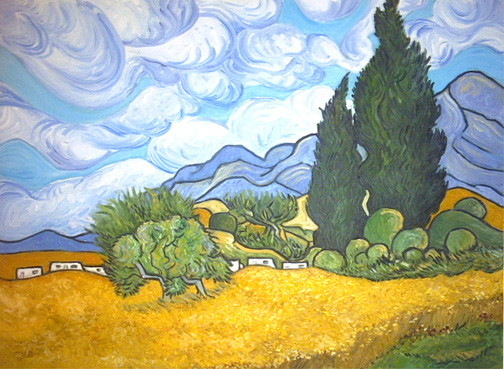
An interview with: Françoise Dallemagne, in charge of Collections and Research, Mucem, Julia Ferloni, head of « Commerce, Industry, Artisanship” collections, Mucem, Alina Maggiore, PhD candidate, Mucem/Aix-Marseille University/Freiburg University. RomaMoMA: In 2017, the Museum of Civilizations of Europe and the Mediterranean (Mucem) has launched a co-curated exhibition project with ERIAC on Roma history, self-representation and…
Text by Françoise Dallemagne, Julia Ferloni, Alina Maggiore ›››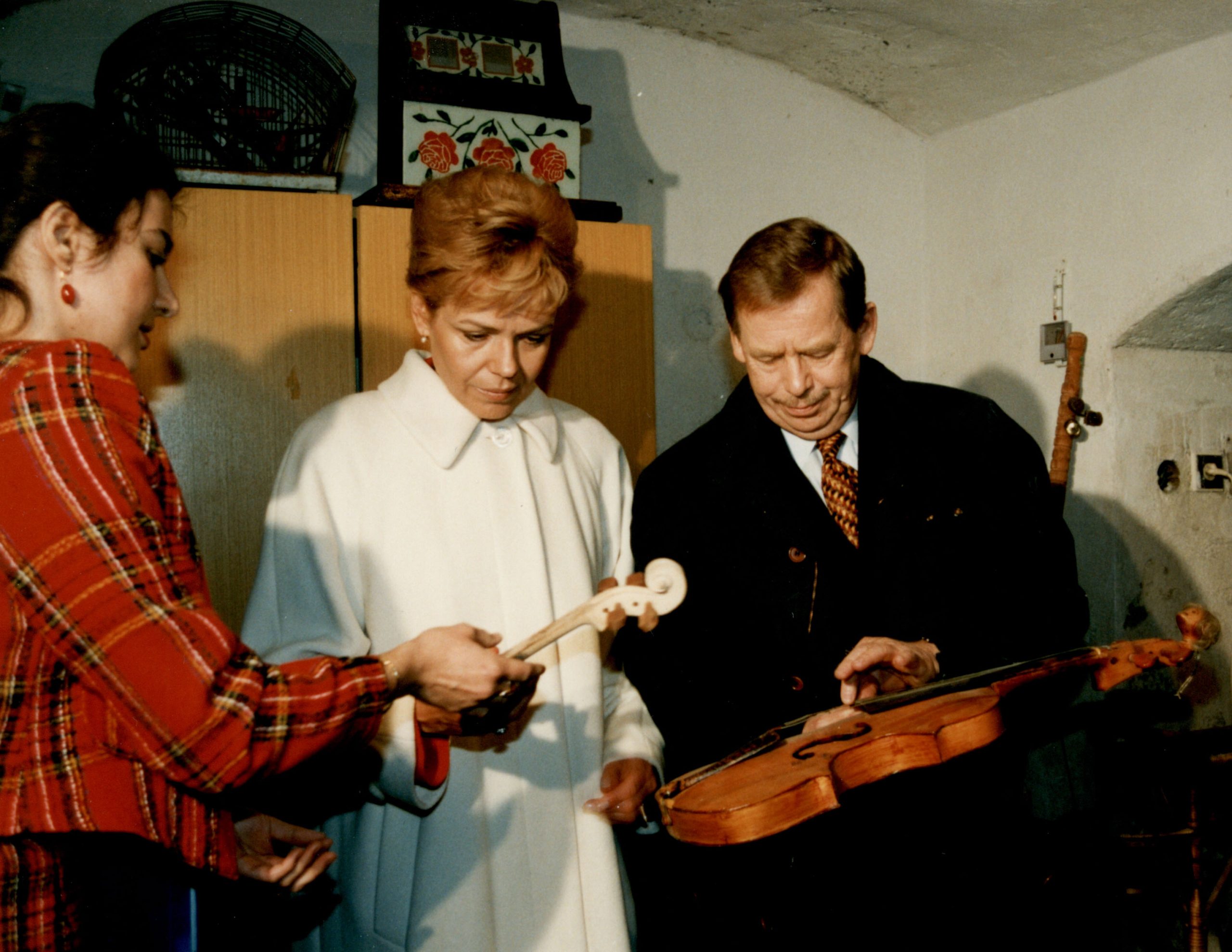
The Romani art of European countries[i] has been struggling to become institutionalized as a term and to secure institutional foundation for its development—much like Jewish art once did. Although the situation varies across individual countries, there are now several important institutions in place across Europe, operating transnationally to promote and sustain the careers of Roma…
Text by Nikola Ludlová ›››
The Roots Roma singer Hilja Grönfors and film director Katariina Lillqvist started their cooperation in the late 1980s, during the annual Roma festival in Porvoo, a town on the southern coast of Finland. Grönfors was a regular performer there, and Lillqvist was curating the film section of the festival, as well as taking care of…
Text by Katariina Lillqvist ›››
Though she only began to make art at the age of forty-three, Omara (Mara Oláh, 1945–2020) became one of the most prolific Roma artists of her generation. Born in Monor, Hungary, to a musician father and a mother from a tinker family, Omara juggled multiple jobs, working primarily as a cleaning lady, until one day,…
Text by Veronika Molnár ›››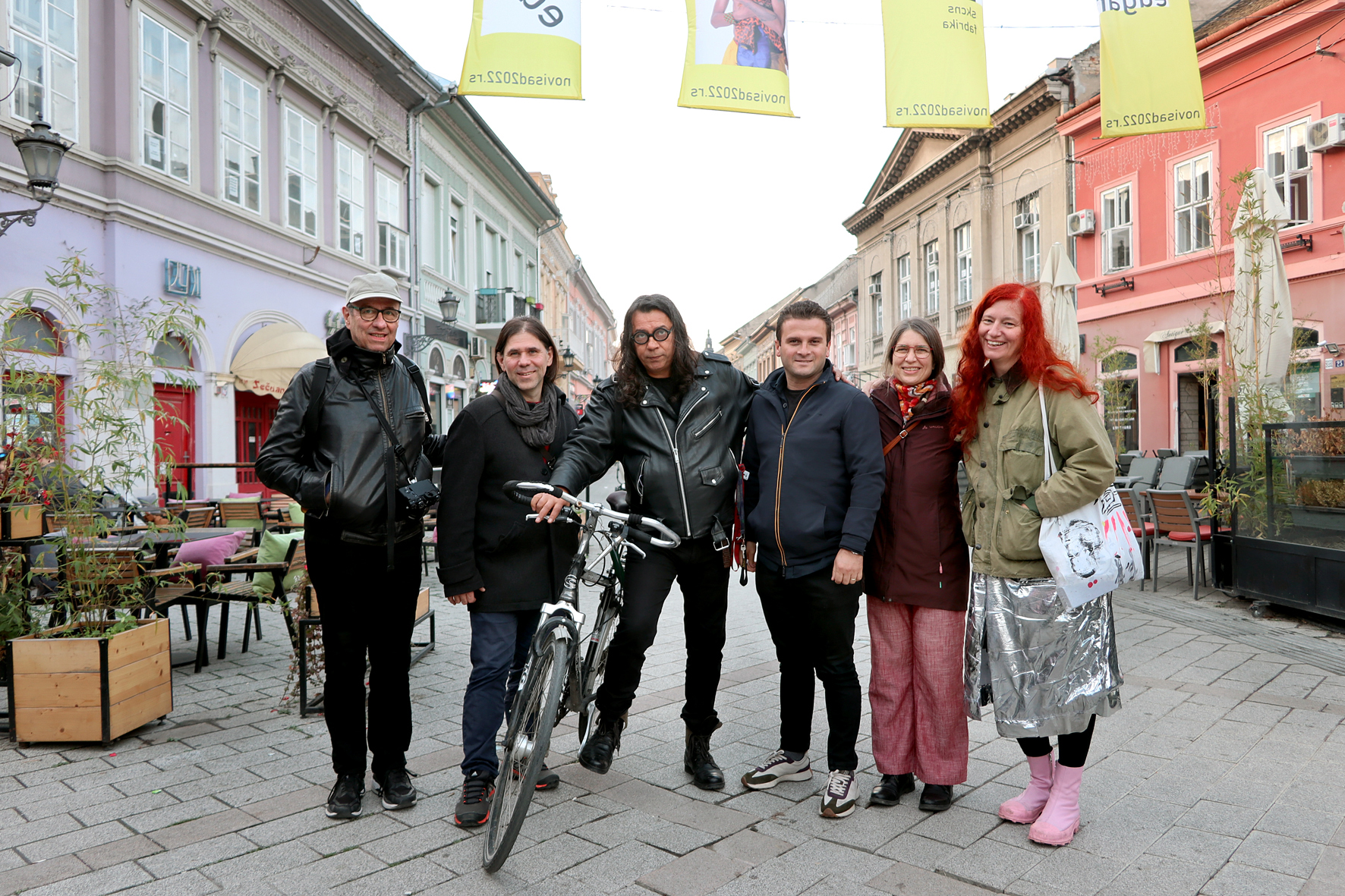
Let me start by paraphrasing what artist Sead Kazanxhiu said recently: 2022 has been a golden year for Romani contemporary art. It is possible to make this statement because the creations of Romani artists were to be found at major art events across Europe, from Venice, through the documenta fifteen in Kassel and Manifesta in…
Text by Vladan Jeremić ›››
10 November 2022, Day One I am having a cup of coffee outside the Svilara Cultural Station. And I think to myself, there are all kinds of stations. This one is about waiting. What are you waiting for? For something to transpose me into a new reality. I am thinking about the concept of the…
Text by Eriac Team Member ›››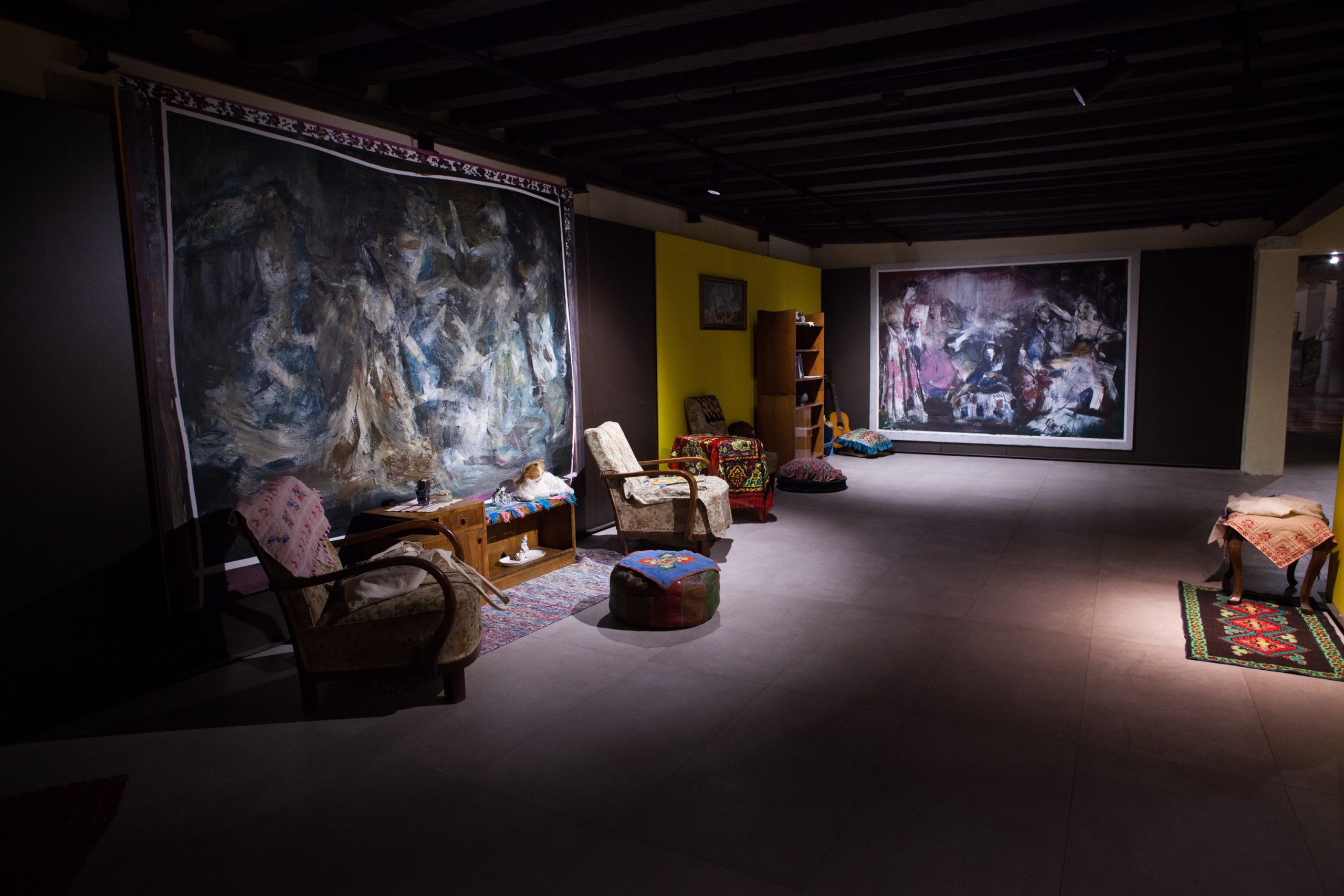
Organized as a collateral event of the 59th edition of the International Art Exhibition of Venice, the Roma Pavilion was a point of great interest on the Biennale’s crowded and extremely competitive map. And rightly so! Hosted this year by the Istituto Veneto di Scienze, Lettere ed Arti (the Palazzo Loredan) and commissioned by the…
Text by Eriac Team Member ›››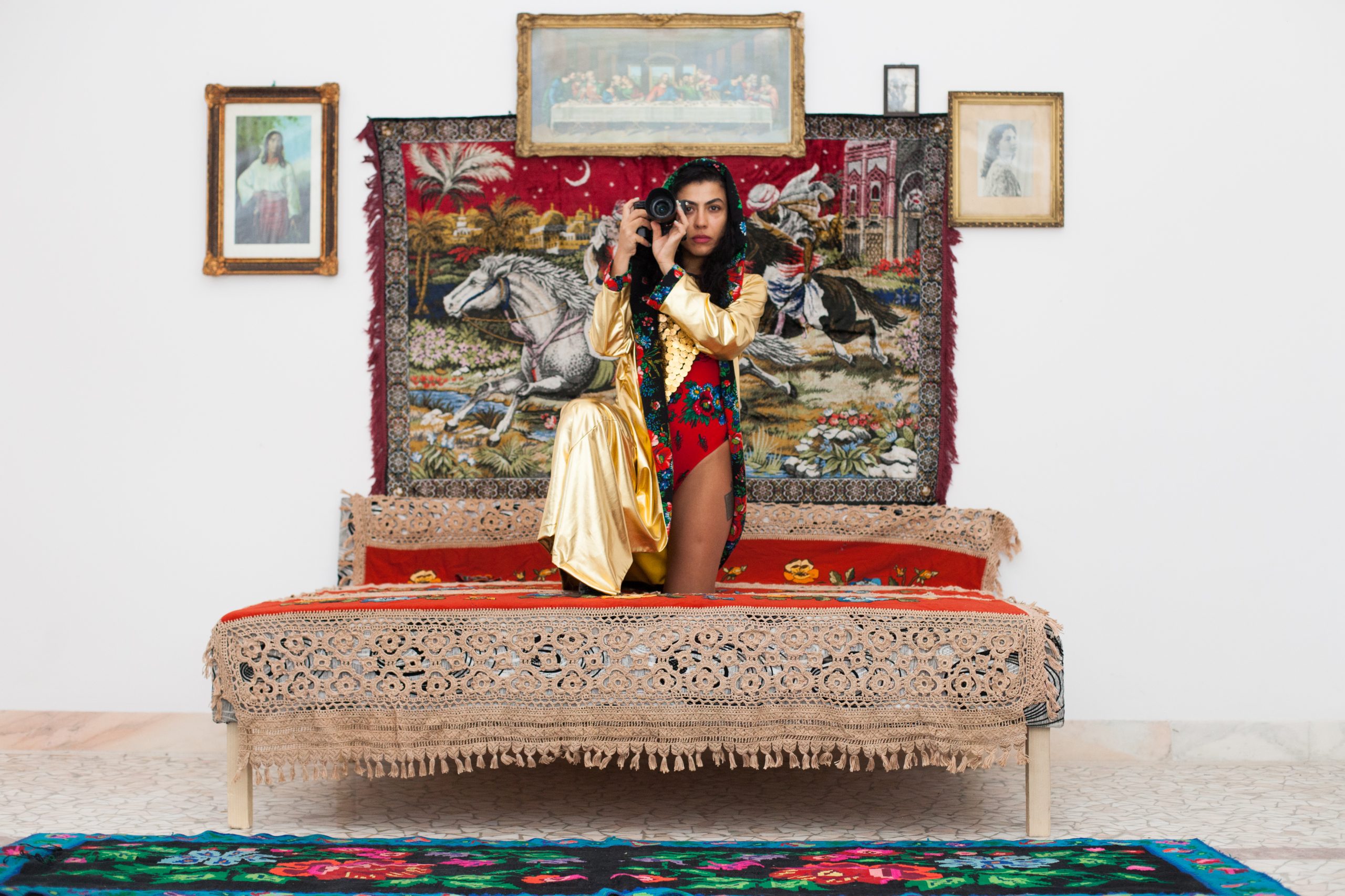
As a young girl, I knew what not to speak. I knew not to talk about my legs in front of my elders. I knew not to talk about desire. I was told that if I were to use a tampon, it might get lost “up there”, and that sex was only with my (future)…
Text by Ethel Brooks ›››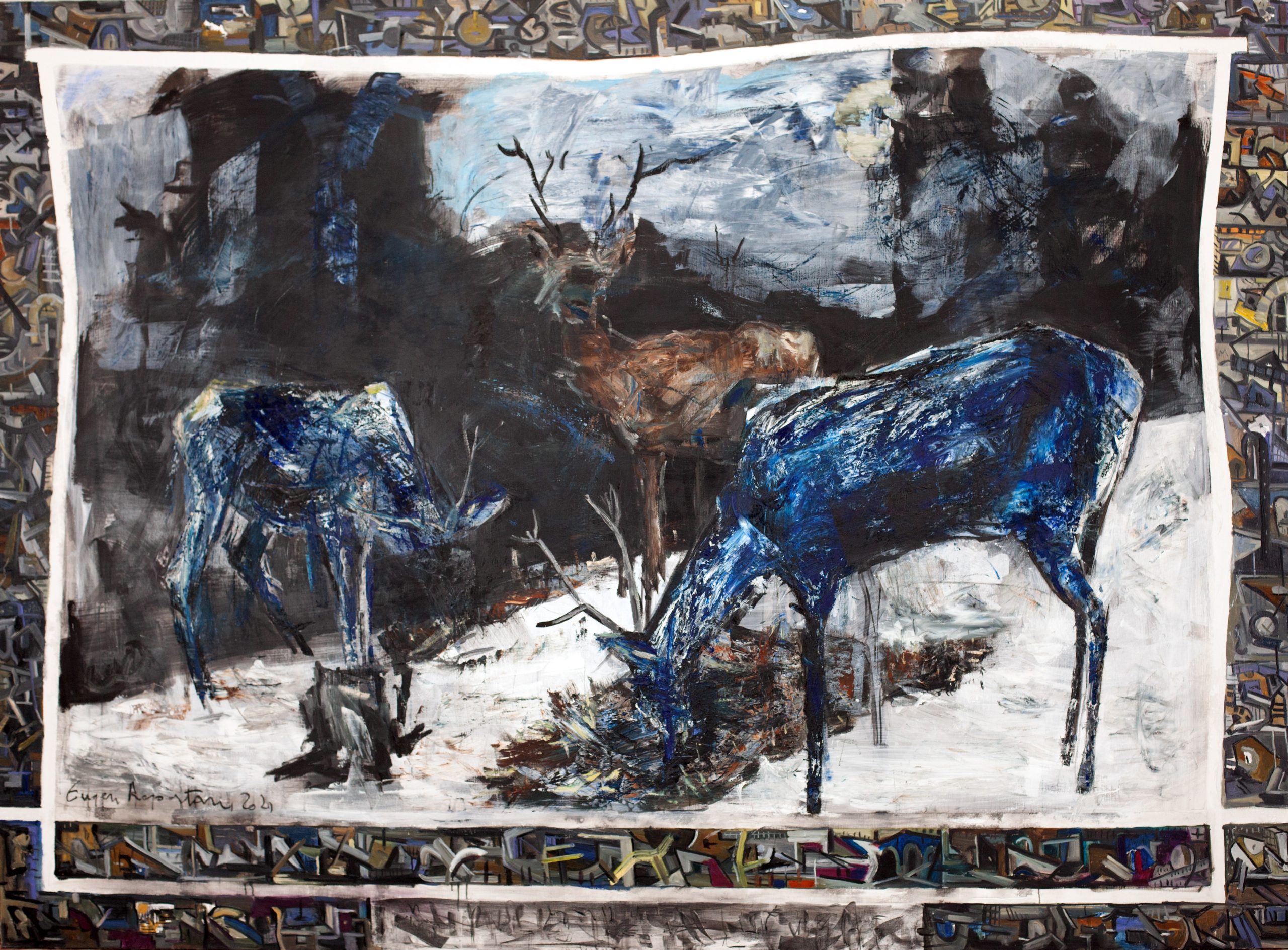
Painter Eugen Raportoru stands out both through the compositional value of his creations and by the themes addressed, which include significant and subtle references to Roma culture and history, thus endowing meaning to his ethnic belonging, the backbone of the artist’s inner constitution. Raportoru is a Roma painter and a universal painter at the same…
Text by Delia Grigore ›››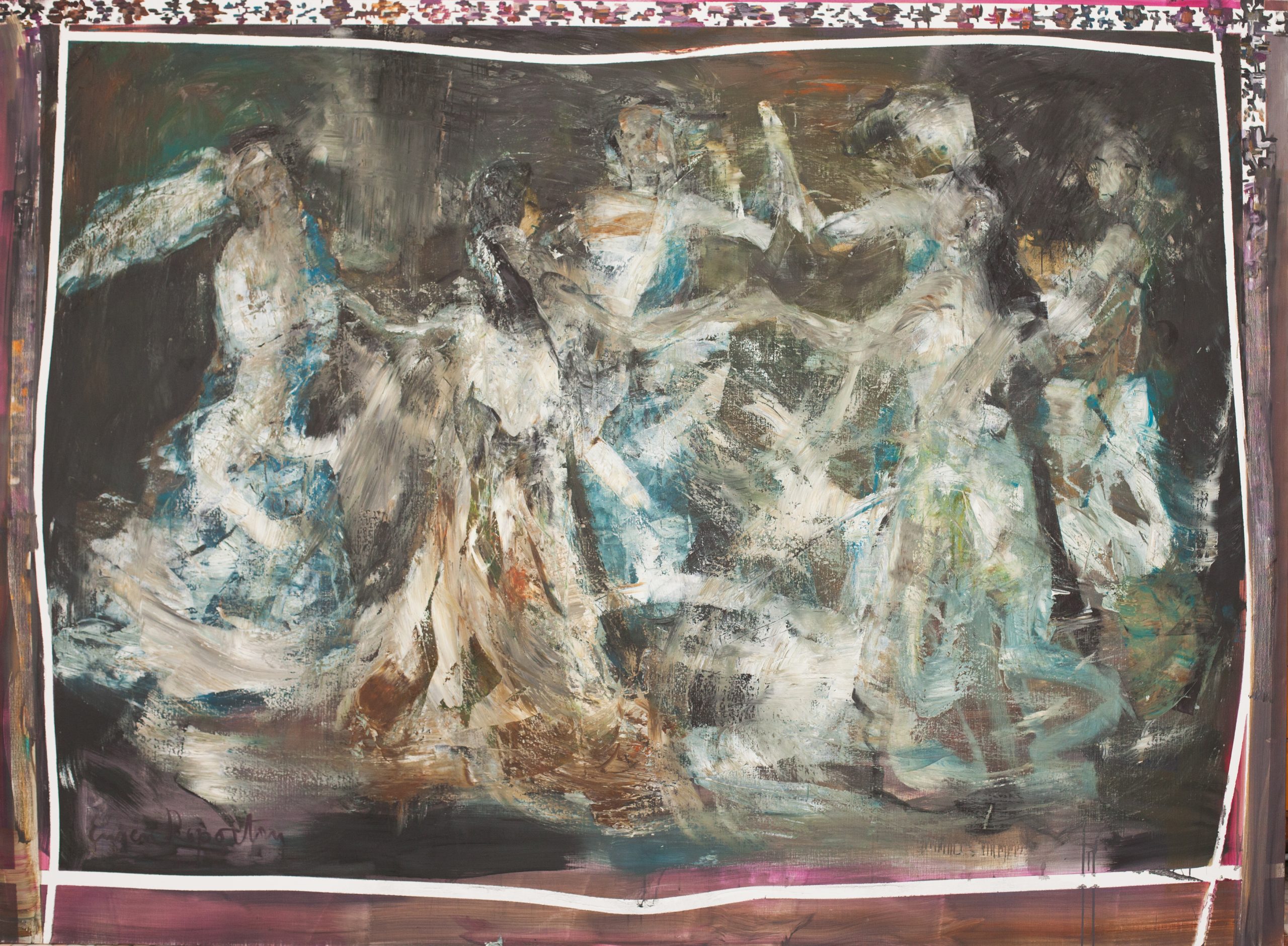
Eugen Raportoru is a phenomenon that cannot be understood outside of the complex circumstances characterising Romanian society and culture of the last fifty plus years. His validation as an artist came late, when other colleagues of his generation were already long on their vocational path. Somehow against all odds, if we are to believe the…
Text by Călin Dan ›››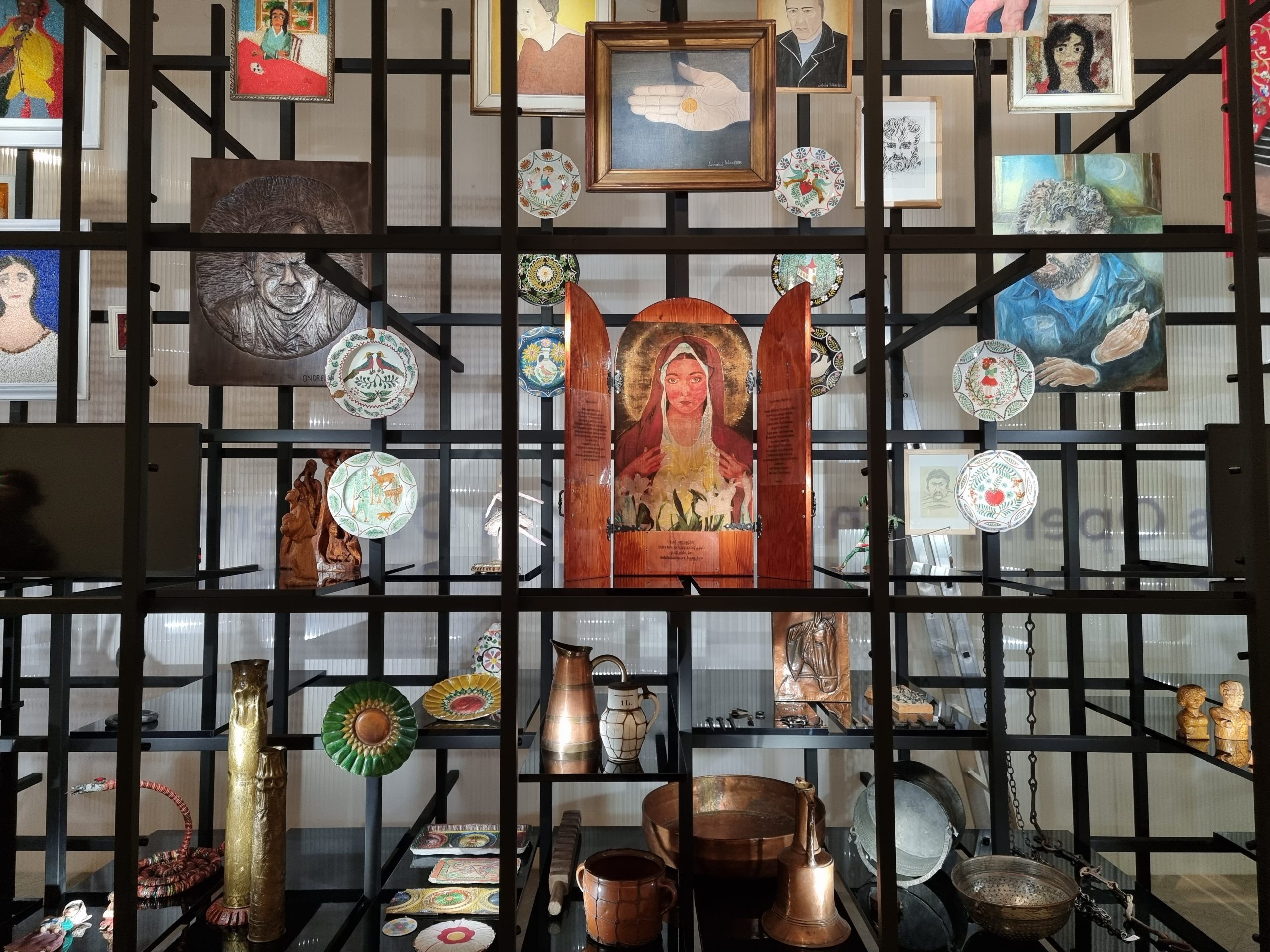
On 3 June 2022, the Museum of Romani Culture in Brno and the Ethnographic Museum of the National Museum in Prague opened an exhibition, entitled Open Road / Phundrado drom. The exhibition, curated by contemporary artist Emília Rigová and curator of the Slovak National Gallery Petra Hanáková, is part of a long-term plan to build…
Text by Denisa Tomková ›››
The Roma Biennale, an authentic festival that celebrates art, as well as its creators, was held for the second time last year. Although it was postponed in 2020 due to the coronavirus pandemic, its realisation in 2021 symbolically coincided with the 50th anniversary of the First World Roma Congress, an event at which Roma internationally…
Text by Selma Pezerović ›››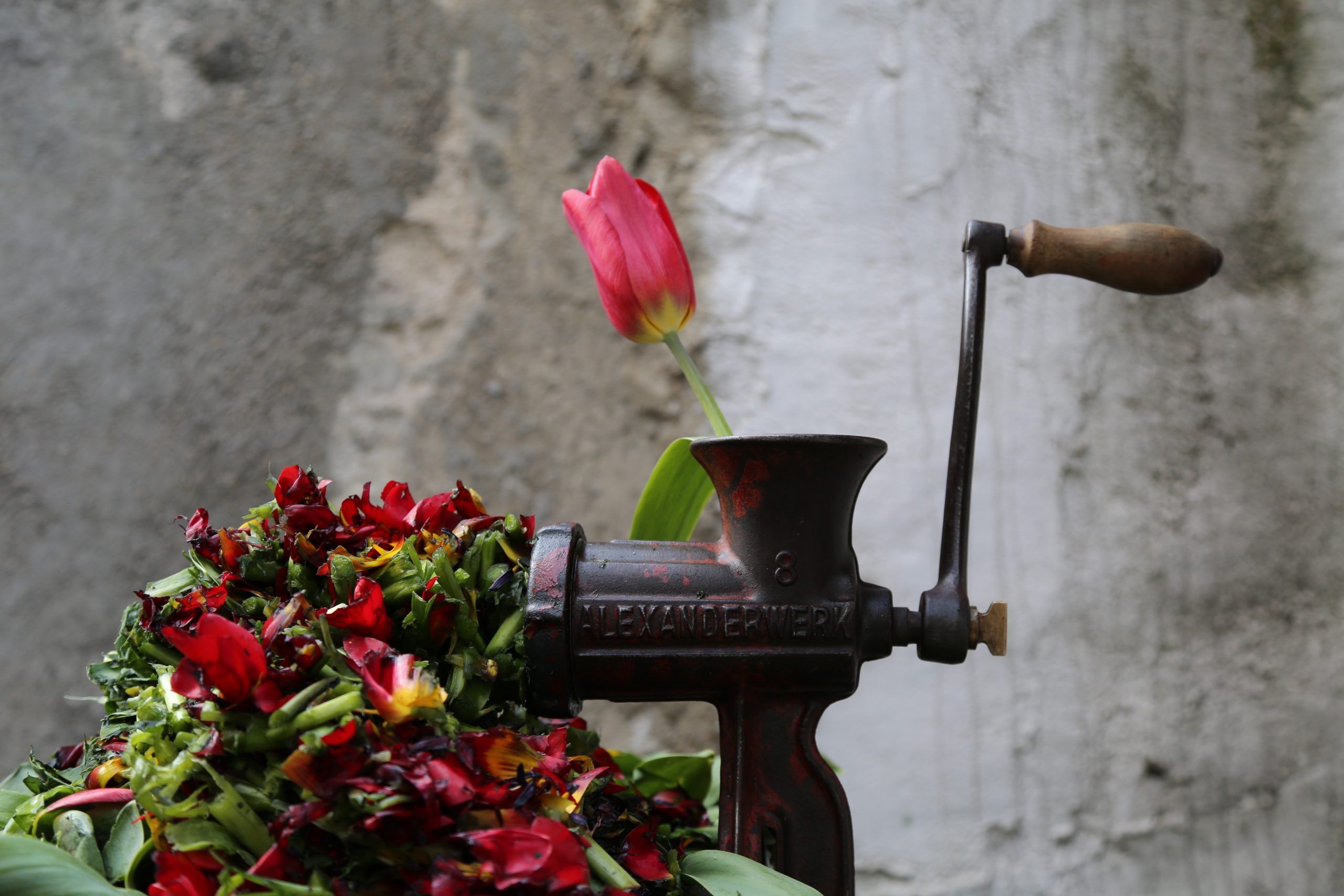
Artist Statement, Ioanida Costache Roma Exhibition Collateral Event at the 59th La Biennale di Venezia: Romani people’s experience during the Holocaust, as a racialised group persecuted under the Nuremberg Racial Laws and targeted for extermination by the Nazis, remains one of the least known aspects of the Holocaust. Ignorance surrounding the persecution of Roma is…
Text by Ioanida Costache ›››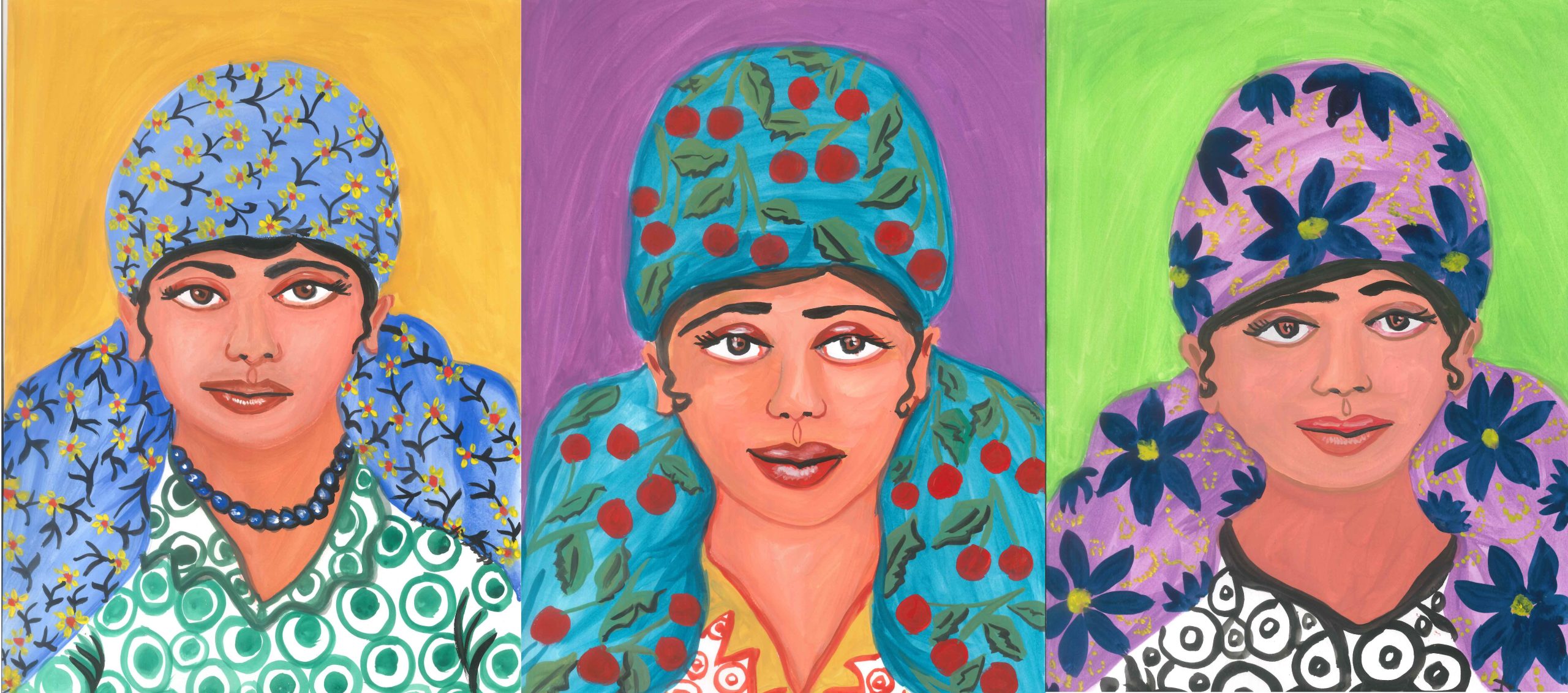
Farija, you are about to open an exhibition at Manifesta 14, a major cultural event. Can you tell us something about your background? As is the case with everyone who lives, my childhood had good and bad periods, due to a difficult economic situation: we grew up in a poor family, where most of the…
Text by Avni Mustafa ›››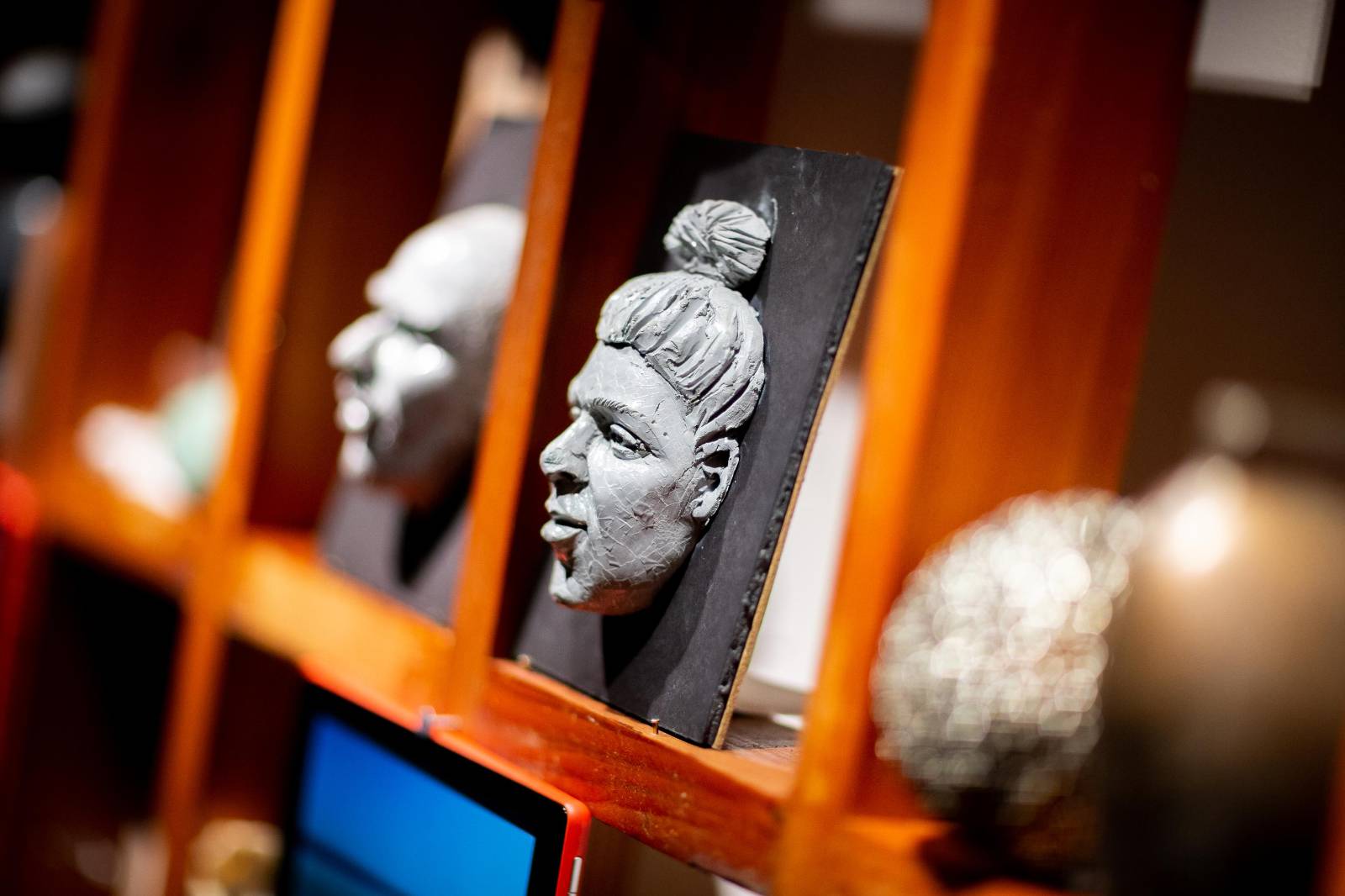
Over the course of the 99-year-long history of the Milan Triennale, the exhibition commissioned by ERIAC for the 23rd International Art Exhibition is the first occasion when a presence of Roma art is ensured. We applaud the President of Triennale Milano Stefano Boeri for his bold vision, continuous support, and opening the doors of one…
Text by ERIAC ›››
The European Roma Institute for Arts and Culture (ERIAC) is proud to present Emília Rigová: And the One Doesn’t Stir without the Other, curated by Timea Junghaus, an official Roma exhibition at the 23rd Triennale Milano International Exhibition, entitled Unknown Unknowns: An Introduction to Mysteries. The exhibition comprises installation, video, photography, found objects, and a community art project….
Text by ERIAC ›››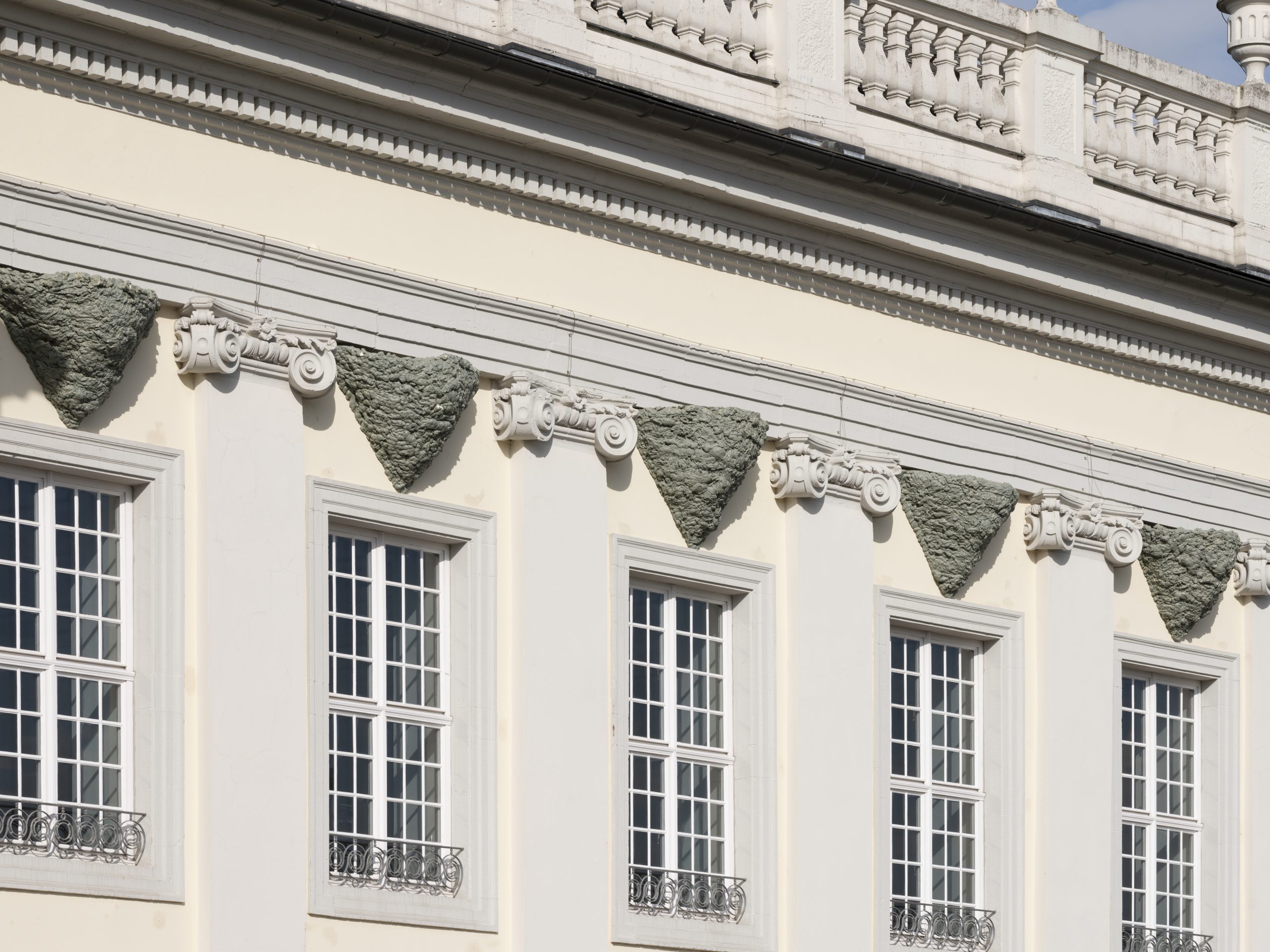
At documenta fifteen, five massive swallow’s nests have appeared on the façade of the Fridericianum. Emerging from its walls between the engaged columns of its southeastern wing, the rough surfaces and organic forms of the five polymer structures that comprise Sead Kazanxhiu’s The Nest at once challenge and compliment the Fridericianum’s neoclassical monumentality. These nests…
Text by Raino Isto ›››
With Roma Rajni: RomaMoMA Library featuring Daniel Baker and Farija Mehmeti, ERIAC brings together the painterly oeuvre of Farija Mehmeti and the RomaMoMA Library at the National Library of Kosovo. The RomaMoMA Library was created in 2021 to commemorate the fiftieth anniversary of the First World Romani Congress. It is dynamic and nomadic, engaging with…
Text by ERIAC ›››
it matters what worlds world worlds. how to tell stories otherwise… Manifesta 14 Western Balkans Expert Talk 16 May 2022 The 14th edition of Manifesta, the European Nomadic Biennial, will take place from 22 July until 30 October 2022 in Prishtina, Kosovo. Organised for the occasion of the biennial, Manifesta 14 has set up the…
Text by ERIAC ›››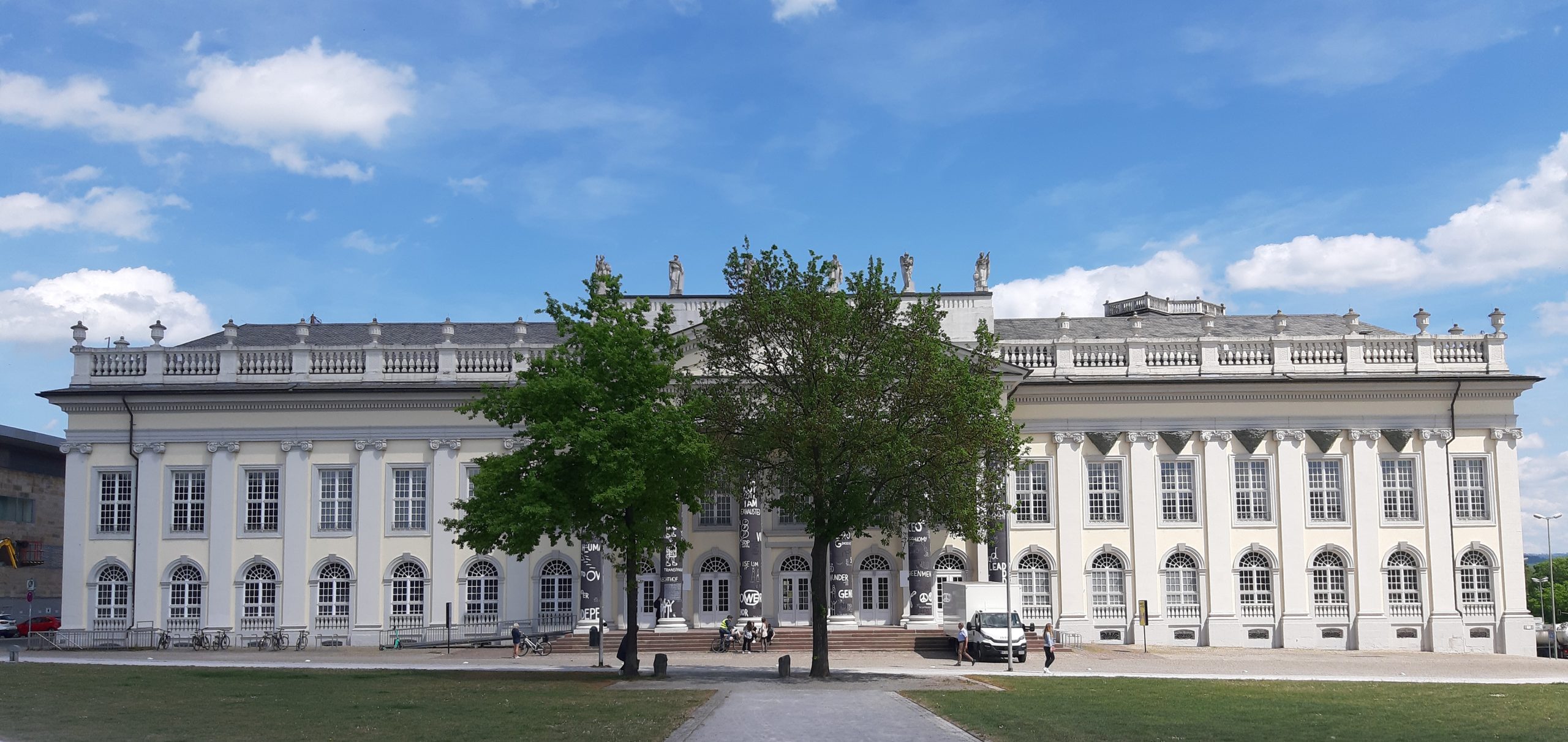
Sead Kazanxhiu is one of the most engaged protagonists of the contemporary Albanian art scene. His artworks are dedicated to the culture, problems and the status of the Roma community from which he originates. Sead’s activist and artistic practice are in symbiosis with the broader struggle for the awareness of the significance of Romani culture,…
Text by Vladan Jeremić ›››
We have relied on our own archives, our own transgenerational sharing of knowledge, our own pedagogies of practice. The beauty that we share with the world, the ways that we teach, learn, and thrive, have been built by us, for each other—and, yes, for you. We have healed each other, and, through our fortune-telling, our…
Text by ERIAC ›››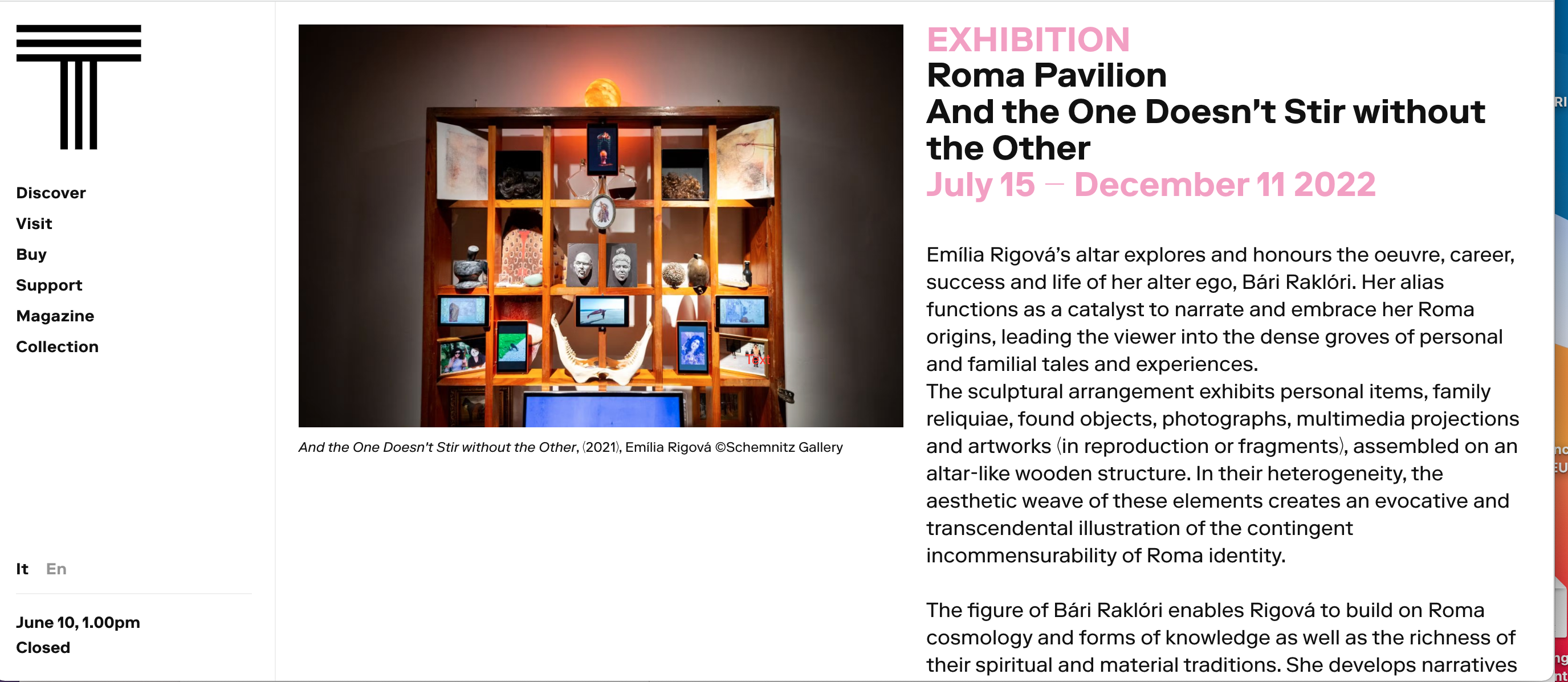
The European Roma Institute for Arts and Culture (ERIAC) presents Emília Rigová: And the One Doesn’t Stir without the Other, curated by Timea Junghaus, an official Roma exhibition at the 23rd Triennale Milano International Exhibition. The exhibition comprises installation, video, photography, found objects, and a community art project. At the centre is the altar honouring the oeuvre, career, and…
Text by ERIAC ›››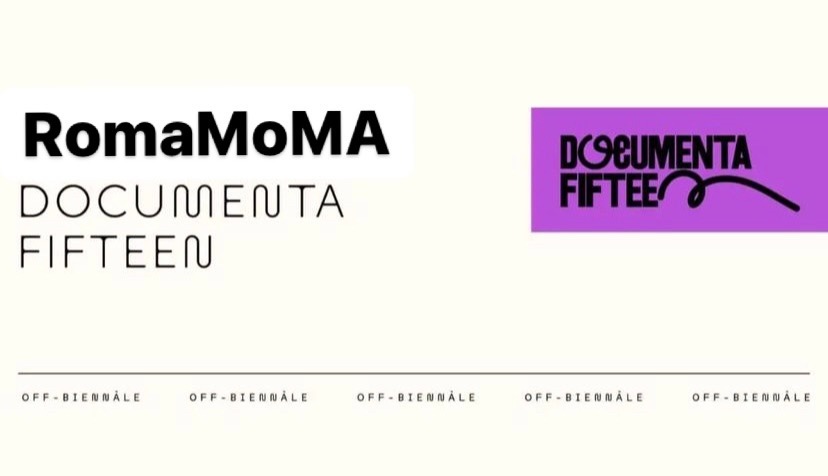
RomaMoMA is a transnational, collaborative and discursive art project of the European Roma Institute of Arts and Culture (ERIAC) and OFF-Biennale Budapest. In Kassel, the group exhibition, One Day We Shall Celebrate Again: RomaMoMA at documenta fifteen, showcases artworks in relation to the idea, question, and (im)possibilities of a “RomaMoMA” (Roma Museum of Contemporary Art). How can…
Text by ERIAC ›››
There are certain key impulses that inspire the work that the Slovak-Roma artist Emília Rigová (*1980) has produced up till now, and which guide her creative trajectory. First and most crucial is the emergence of her alter ego, Bári Raklóri (bári = big, raklóri = daughter of non-Roma parents), which has become a leitmotif of her…
Text by Nina Vrbanová ›››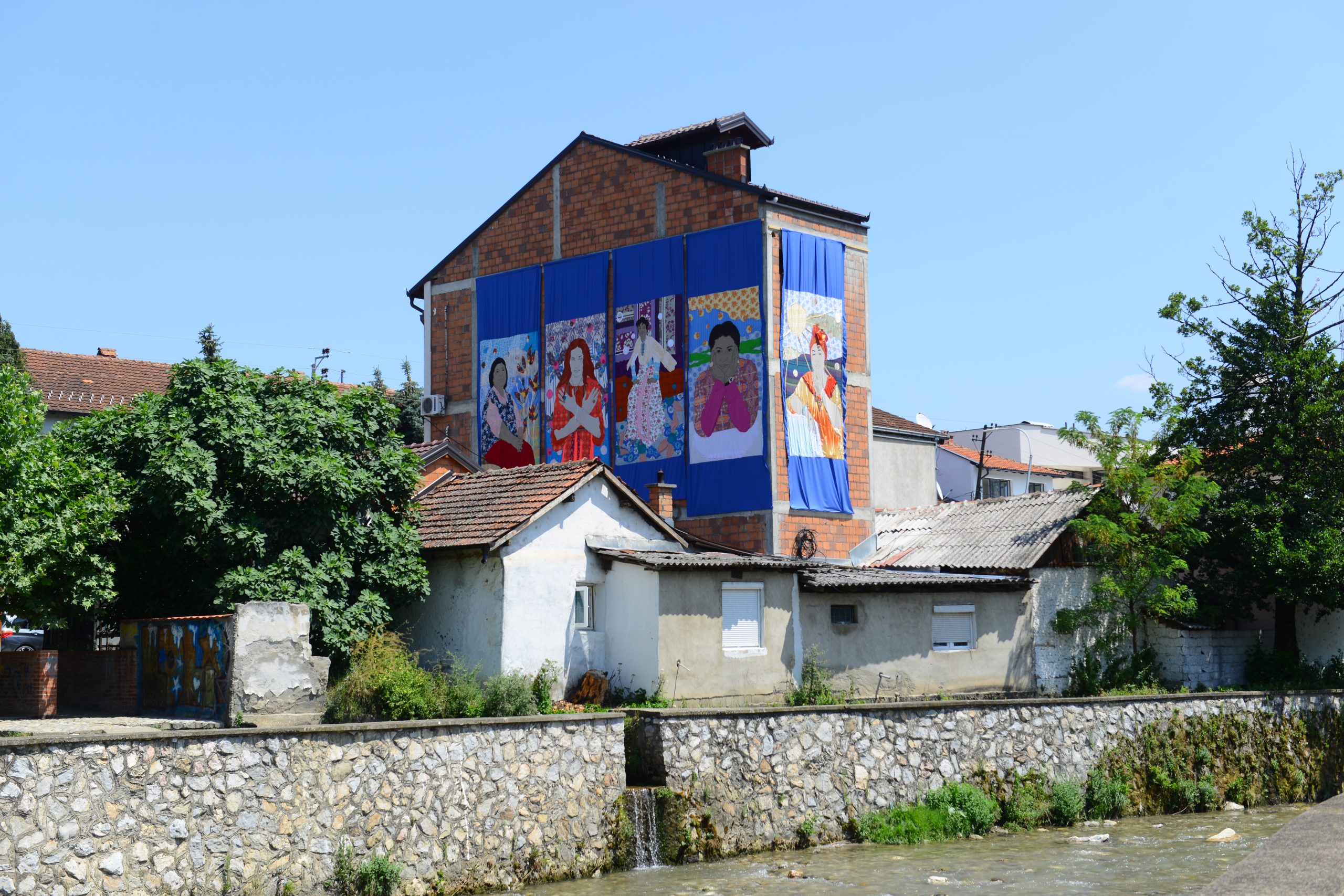
This year marks five years since the passing of the prominent American art historian, Linda Nochlin, who became world renowned for her 1971 ground-breaking article, “Why Have There Been No Great Women Artists?”[1] Unfortunately, Nochlin will not bear witness to this year’s 59th International Art Exhibition Venice Biennale[2] that promises to be a ground-breaking long-overdue…
Text by Suzana Milevska ›››
Daniel Baker’s preoccupation with the contingent nature of Roma material culture is highlighted in the conceptual artwork Getaway, an installation designed to occupy the public square at the entrance to Eugen Raportoru: The Abduction from Seraglio, & Roma Women: Performative Strategies of Resistance, at Biennale Arte 2022. Getaway is defined as: an act or instance of…
Text by Daniel Baker ›››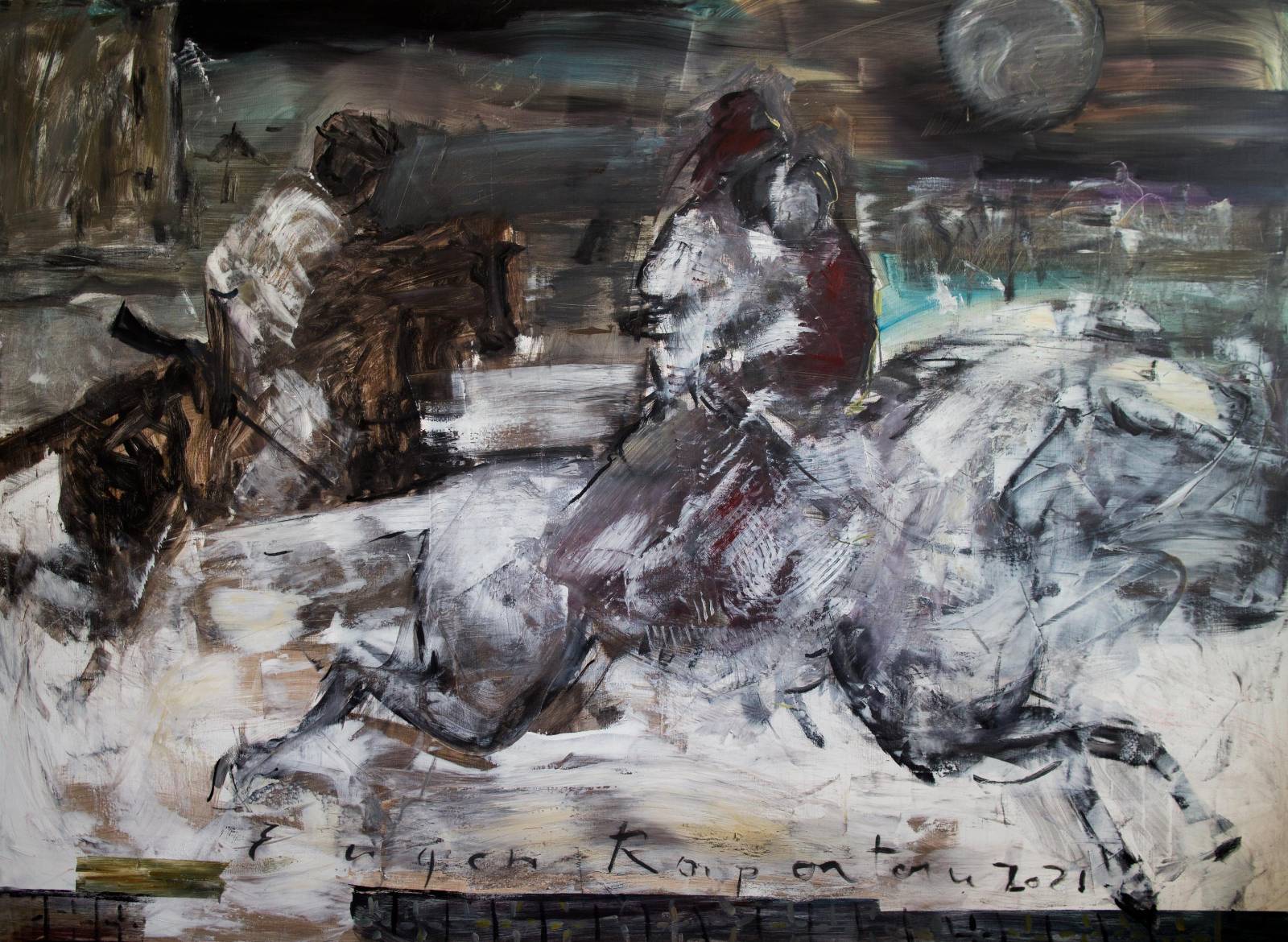
Over the course of the 127 year long history of the Biennale, the exhibition commissioned by ERIAC for the 59th International Art Exhibition is only the fourth occasion when a presence of Roma art is ensured. The current cultural underrepresentation of work made by Roma coupled with the continuing stereotypical representation of Roma by non-Roma…
Text by ERIAC ›››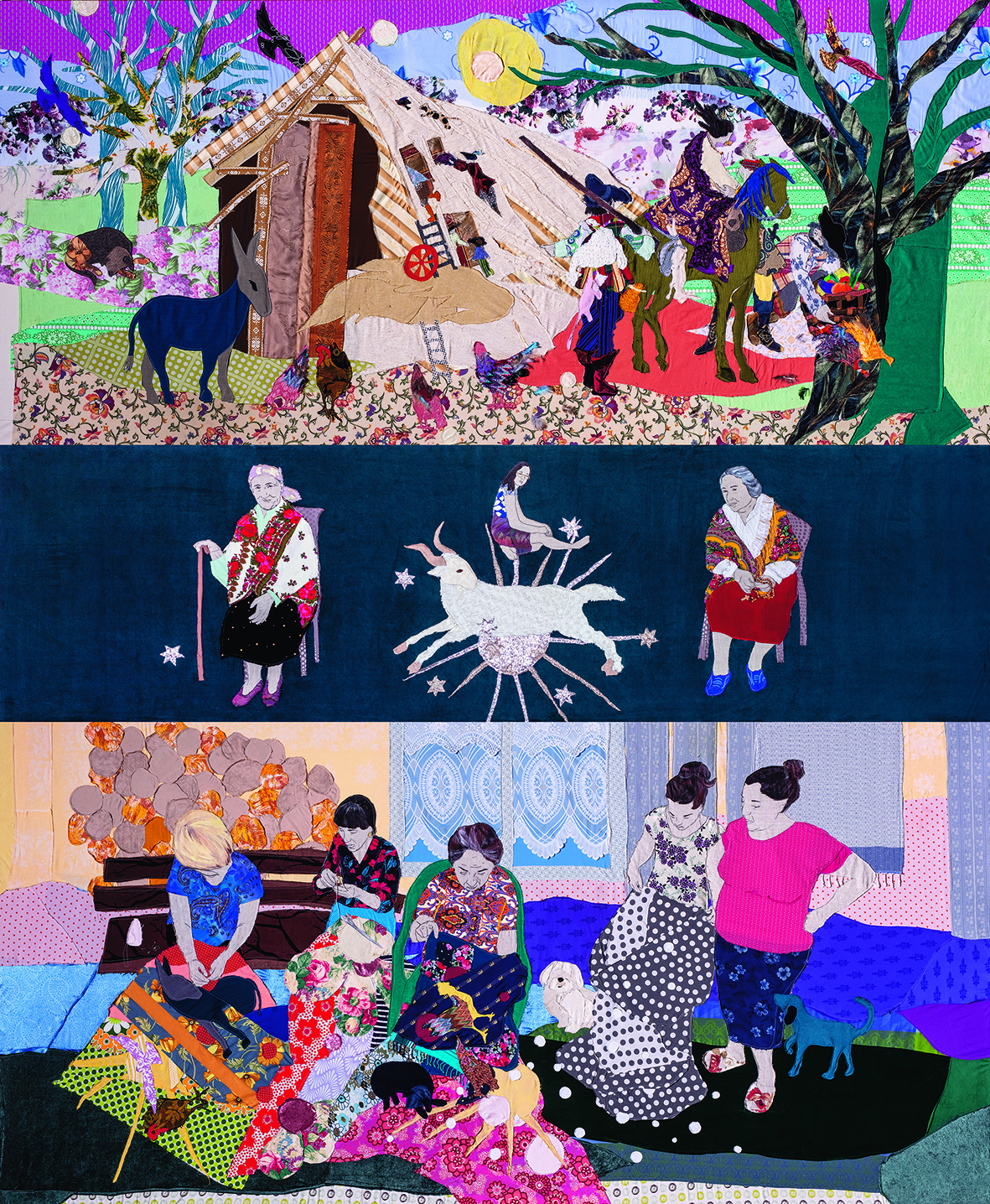
Interview with Wojciech Szymański and Joanna Warsza, co-curators of Małgorzata Mirga-Tas’s exhibition in the Polish Pavilion at the 59th Venice Biennale. What is the exhibition concept and the journey behind it? Wojciech Szymański: The concept for the exhibition Re-Enchanting the World was born late last summer. On the one hand, with its title, the exhibition refers…
Text by Katarzyna Pabijanek ›››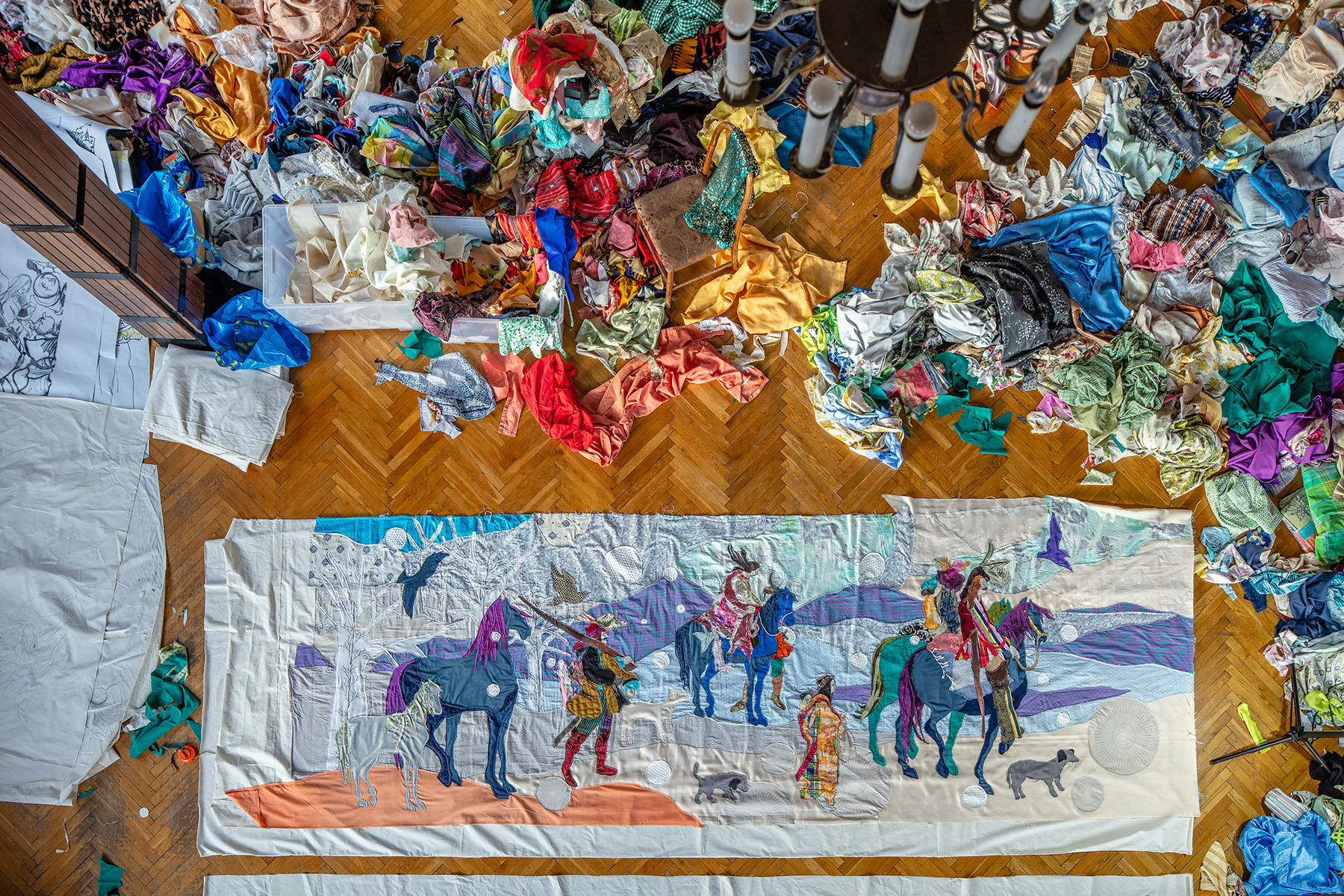
Re-enchanting the World – a conversation with Małgorzata Mirga-Tas, the artist representing Poland at the 59th International Art Exhibition Your monumental work in the Polish Pavilion refers to the famous “calendar” cycle of frescoes from the Renaissance Palazzo Schifanoia in Ferrara, Italy. How was the idea for this project born? MMT: The project is an…
Text by Katarzyna Pabijanek ›››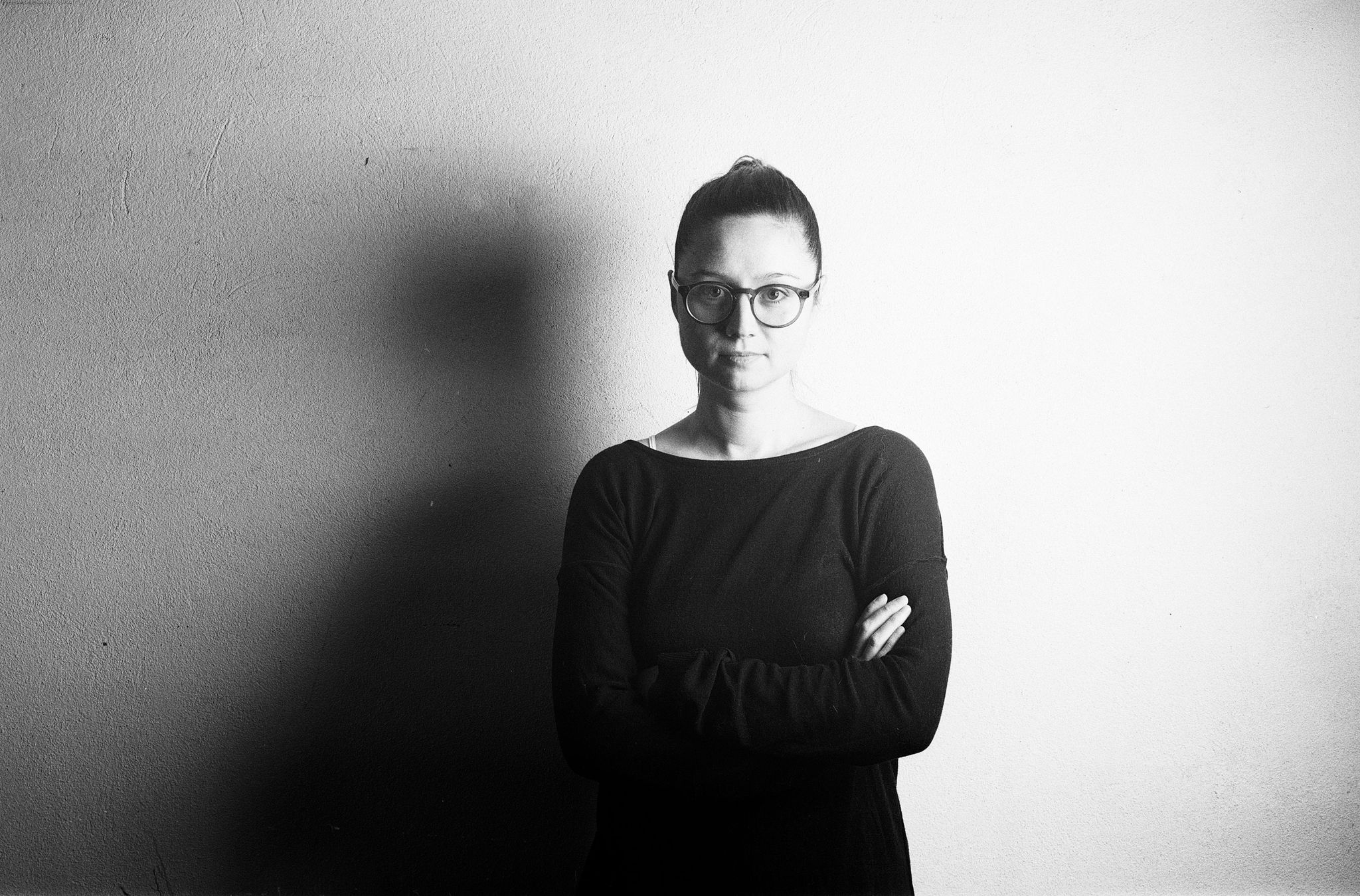
RomaMoMA interviews curator Ilina Schileru. You are both an artist and a curator. How have these two practices influenced each other within you? Ilina Schileru: It all started with my need to create a community as an artist, and I envisioned it as an artist-led community. That is when I began negotiating for a space…
Text by Etelka Tamás-Balha ›››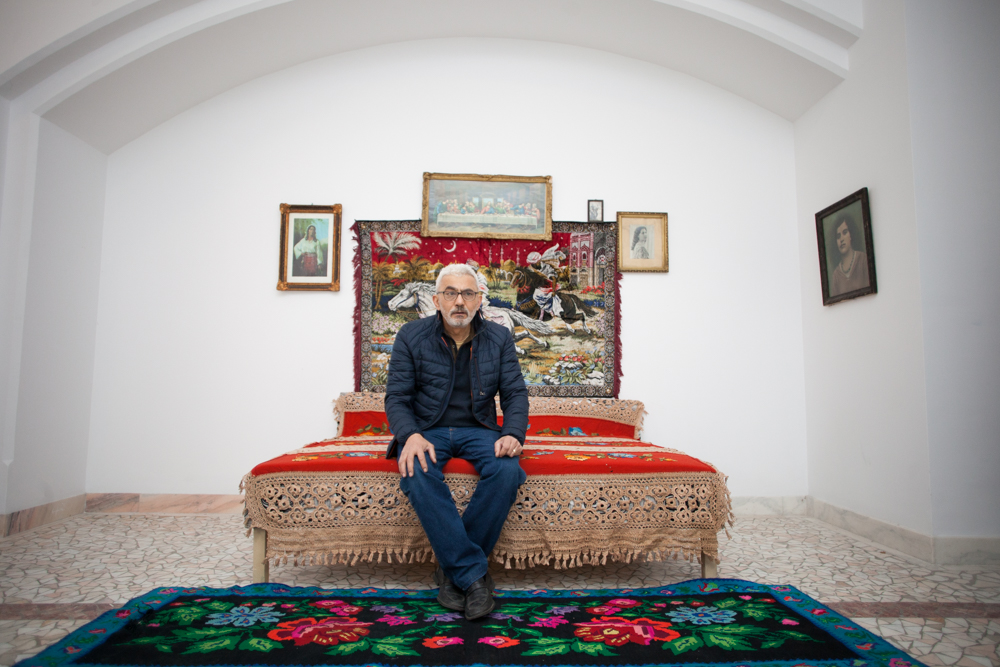
RomaMoMA interviews Eugen Raportoru. Among the most recognised painters of his generation in his country of origin, Eugen Raportoru (Bucharest, 1961) has always taken pride in his Roma origins. His recent experiments in installation narrate past memories from his childhood and often contain self-referential elements through which he creates a hidden genealogy of the unspoken…
Text by Etelka Tamás-Balha ›››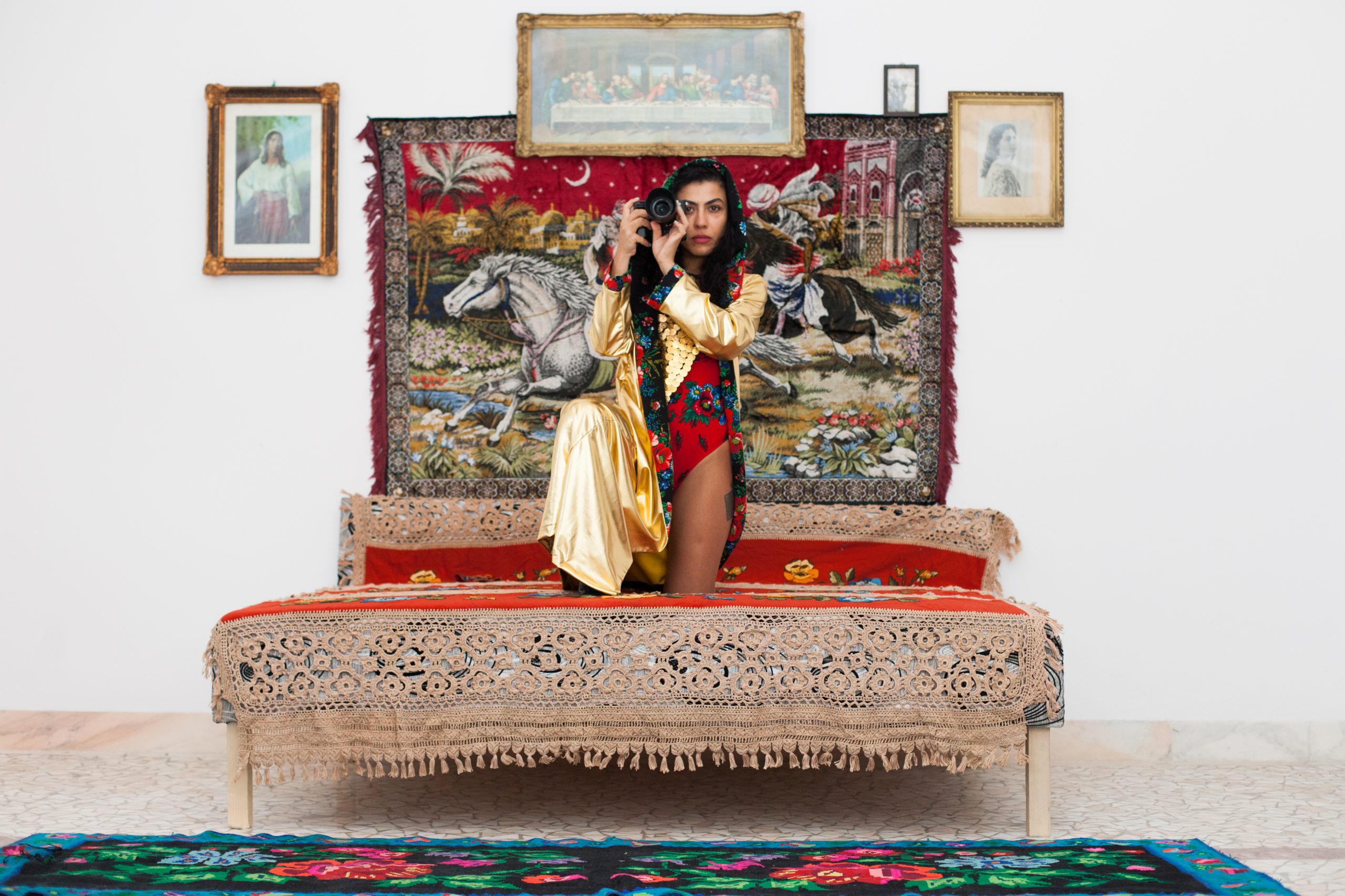
Interview with the Commissioners of the Roma Exhibition at the 59th Biennale Arte: Abduction from the Seraglio: Timea Junghaus, Executive Director of ERIAC, and Zeljko Jovanovic, Director of the Open Society Roma Initiatives Office, and Chairman of the Board of ERIAC RomaMoMA: What is the history of the presence of Roma art at the La…
Text by ERIAC ›››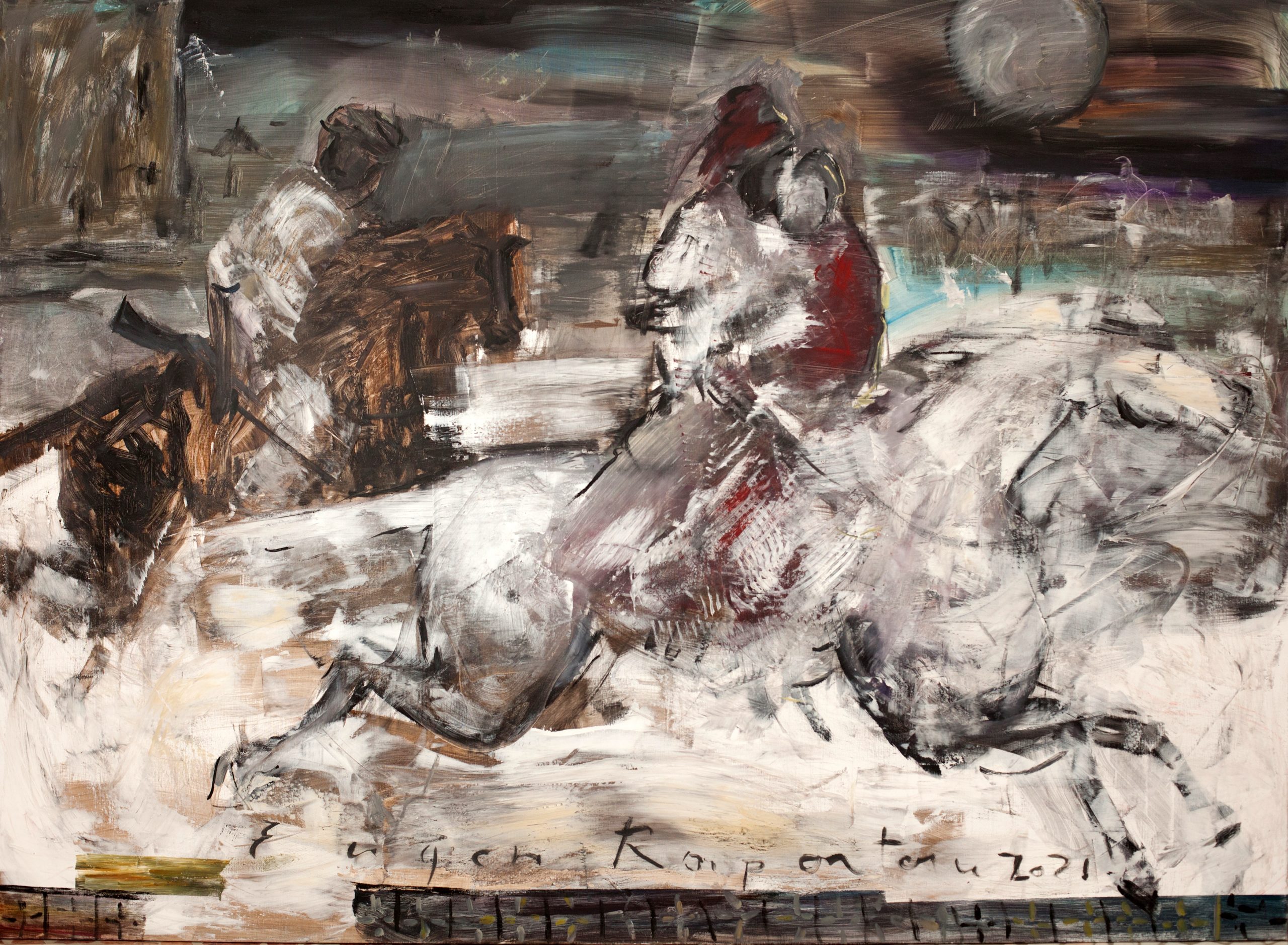
Collateral Events of the 59th International Venice Biennale. Curated by Ilina Schileru. Commissioned by Zeljko Jovanovic and Timea Junghaus on behalf of the European Roma Institute for Arts and Culture (ERIAC). With special contributions from: Ethel Brooks, Ioanida Costache, Mihaela Drăgan, Carmen Gheorghe, Delia Grigore, Angéla Kóczé, Dijana Pavlovic, Erasma Vicenzina Pevarello, Alina Șerban The…
Text by ERIAC ›››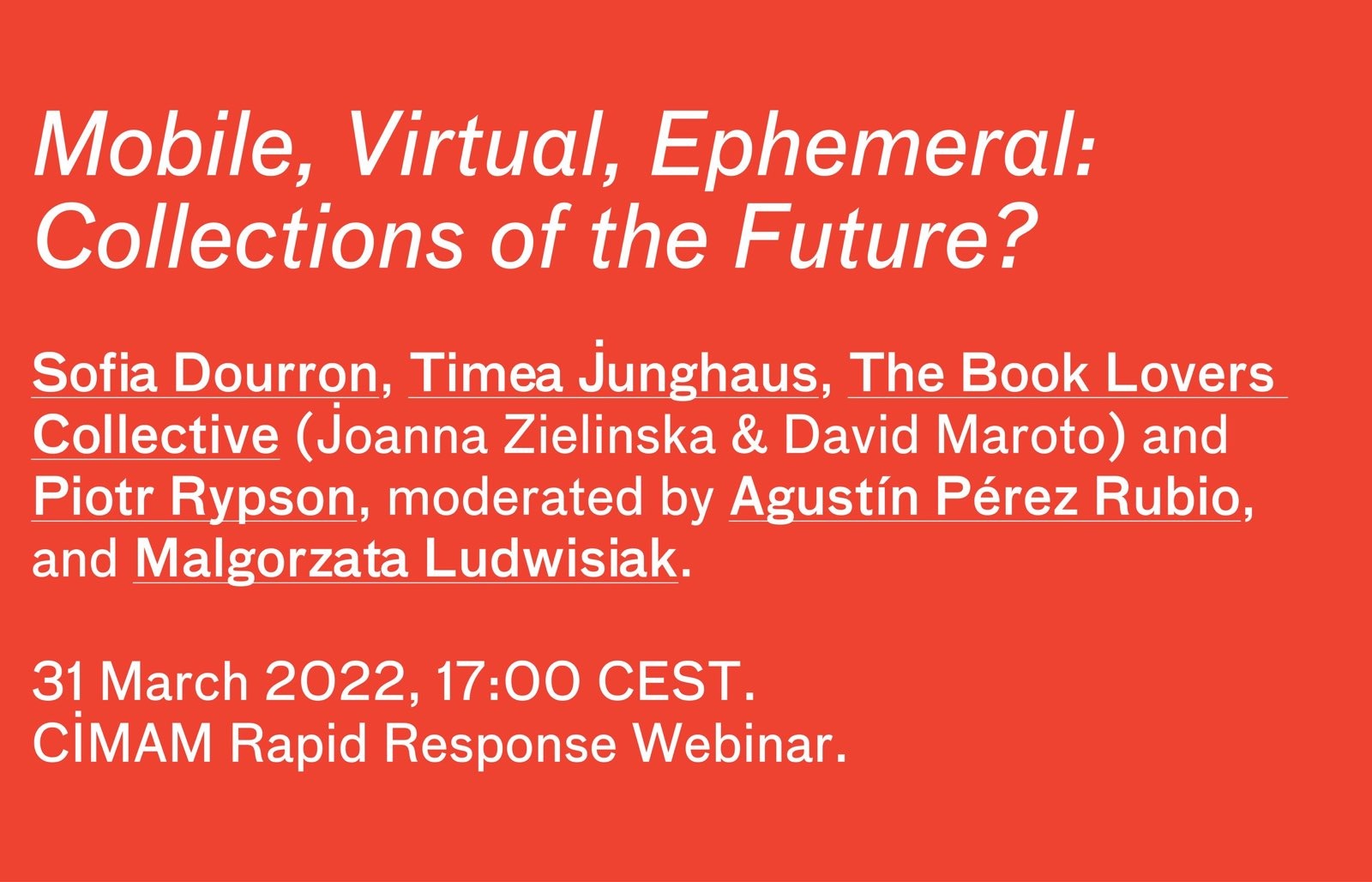
In the times of museums being burned down because of war or put at risk because of climate disaster effects – what is a meaning of a public art collection? Could we imagine a different definition of collecting, an alternative circulation of objects, or an art museum without art objects? What if museums start collecting…
Text by ERIAC ›››
The European Roma Institute for Arts and Culture (ERIAC) is proud to present Eugen Raportoru: The Abduction from the Seraglio, accompanied by Roma Women: Performative Strategies of Resistance, an official collateral event at the 59th International Art Exhibition, curated by Ilina Schileru. In the long history of La Biennale, this is only the fourth occasion when a presence of…
Text by ERIAC ›››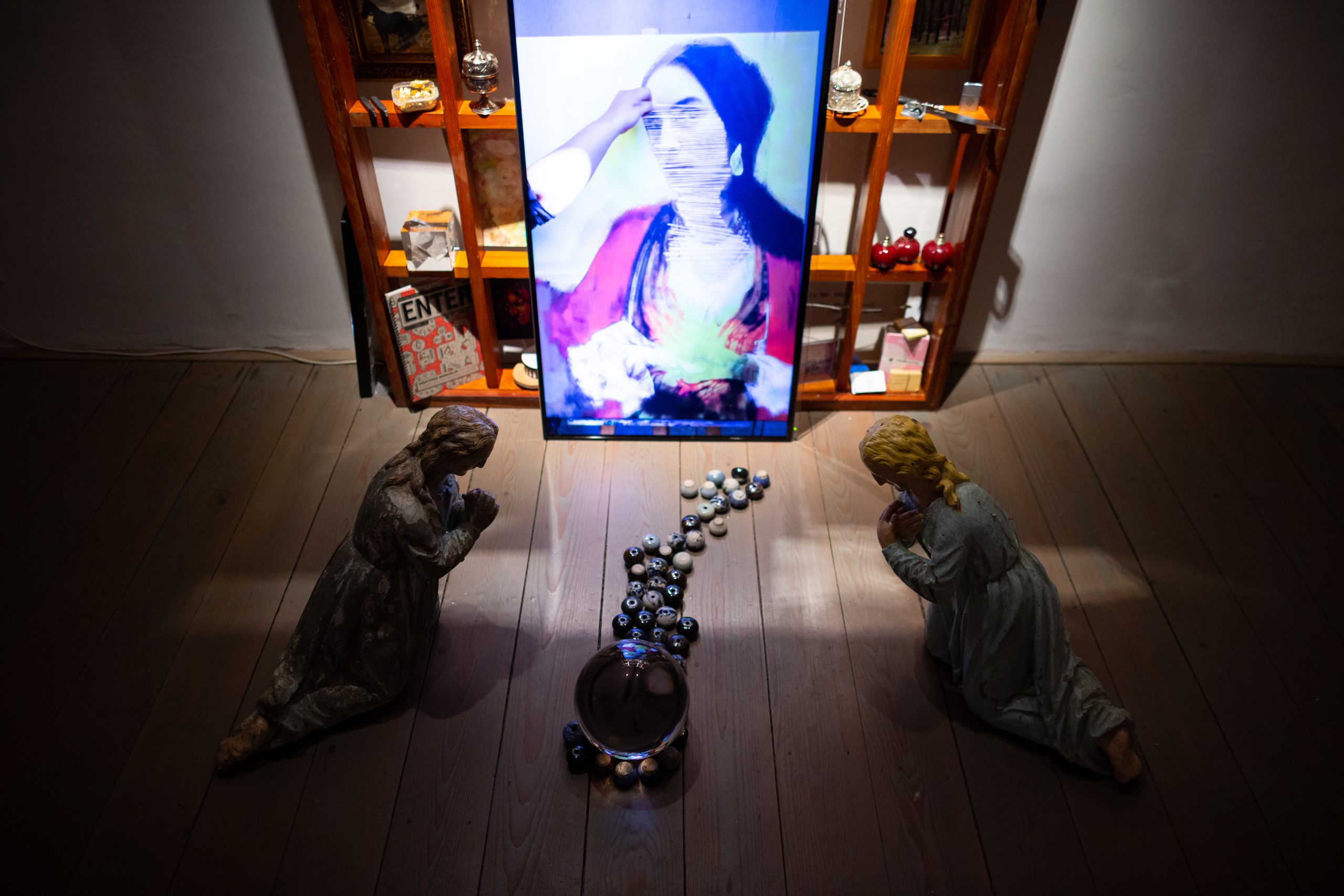
The European Roma Institute for Arts and Culture (ERIAC) is proud to present Emília Rigová: And the One Doesn’t Stir without the Other, curated by Timea Junghaus, an official Roma exhibition at the 23rd Triennale Milano International Exhibition. The Triennale takes place 15 July – 11 December 2022, under the title Unknown Unknowns. An Introduction…
Text by ERIAC ›››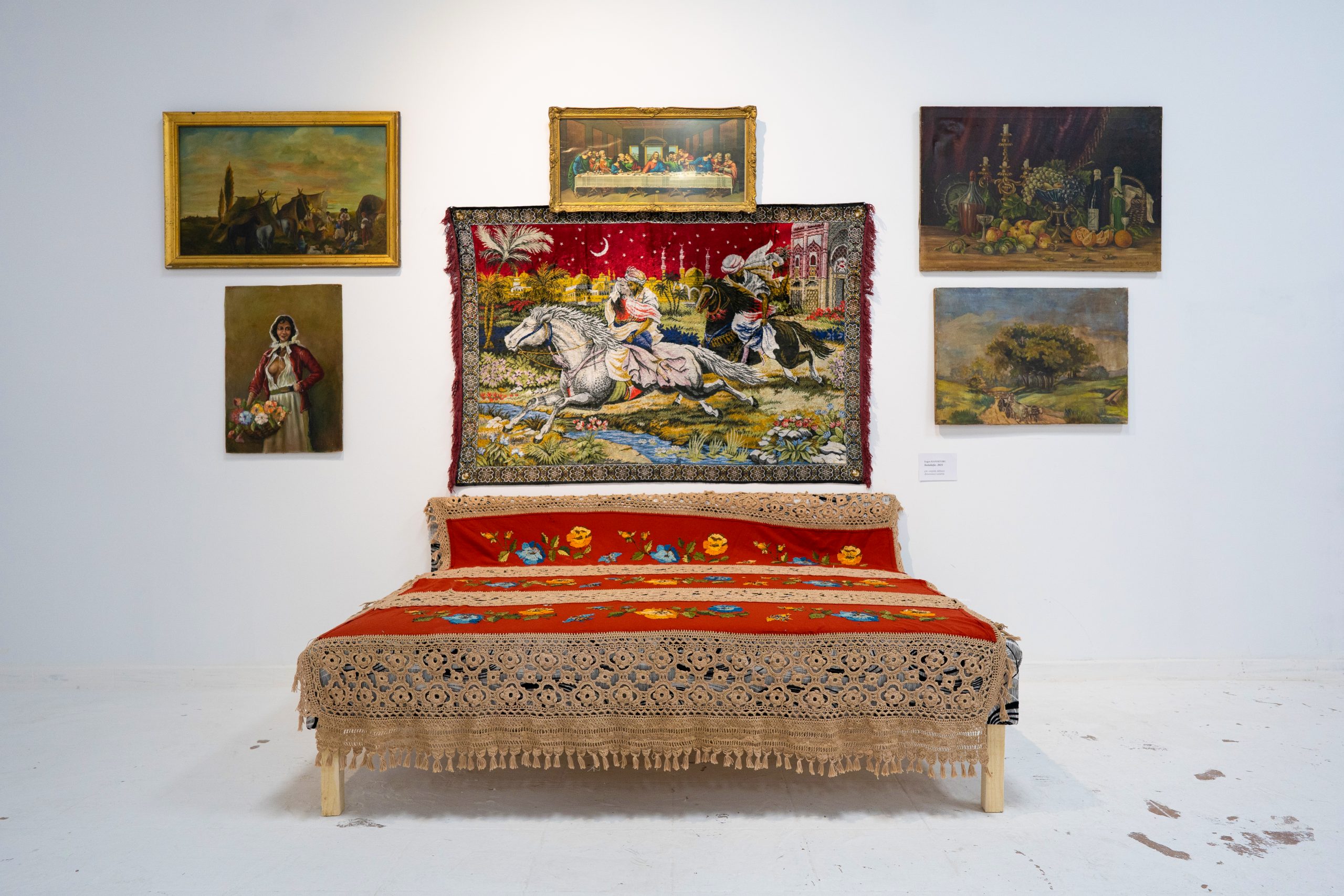
Collateral Event of the 59th International Art Exhibition – La Biennale di Venezia Curated by Ilina Schileru Commissioned by the European Roma Institute for Arts and Culture (ERIAC), Željko Jovanović, Timea Junghaus Exhibition Venue: Istituto Veneto di Scienze, Lettere ed Arti | Campo S. Stefano 2945 Opening Event: 22 April 2022, 6–7pm Istituto Veneto di Scienze, Lettere…
Text by ERIAC ›››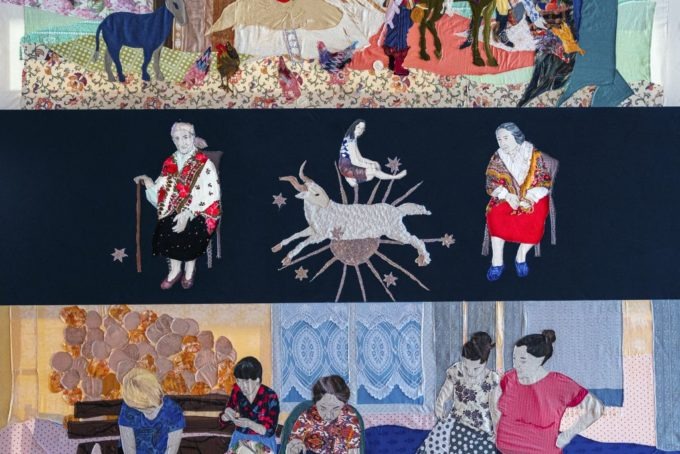
The Re-enchanting the World project by the Polish-Roma artist for the Polish Pavilion at the 59th International Art Exhibition is an attempt to expand the Polish and European iconosphere and art history with representations of Roma culture. Adhering to the title of this year’s edition of the Biennale Arte (The Milk of Dreams), the artist will create…
Text by labiennale.art.pl ›››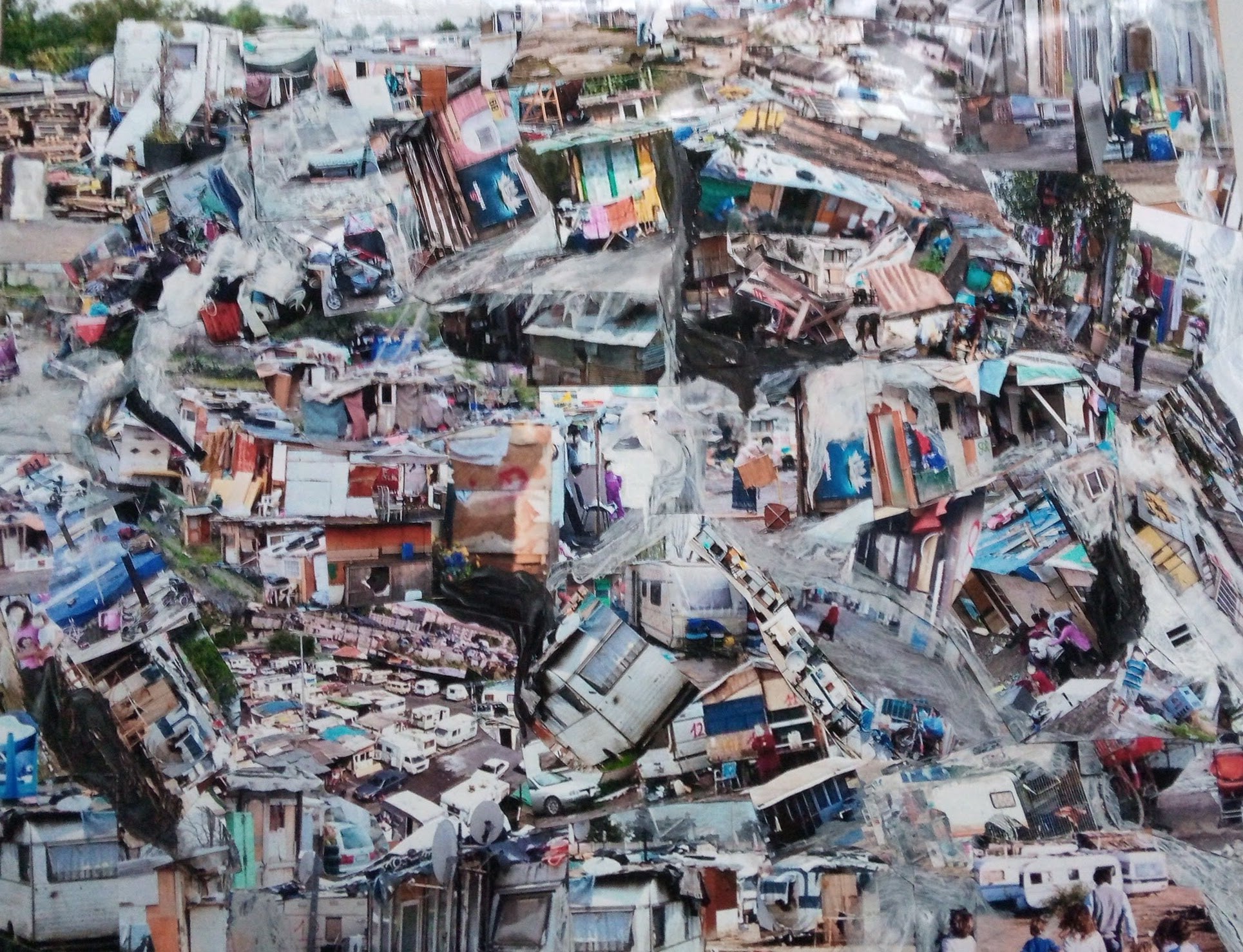
International Guest Artists 2022: Dariya Kanti and Luna De Rosa A cooperation between the European Roma Institute for Arts and Culture (ERIAC) and Villa Romana, Florence Villa Romana is a site of contemporary artistic production and international exchange. Founded in 1905 by artists and patrons, it continues to operate as a non-profit association. Every year,…
Text by ERIAC ›››
Last October, I participated in a joint artist residency with a stipend offered by ERIAC and Villa Romana. The scholarship grants the opportunity for young European Roma artists to travel, build networks and broaden their knowledge by educating themselves in Florence, one of Europe’s most ancient and illustrious art centres. Villa Romana is situated on…
Text by Norbert Oláh ›››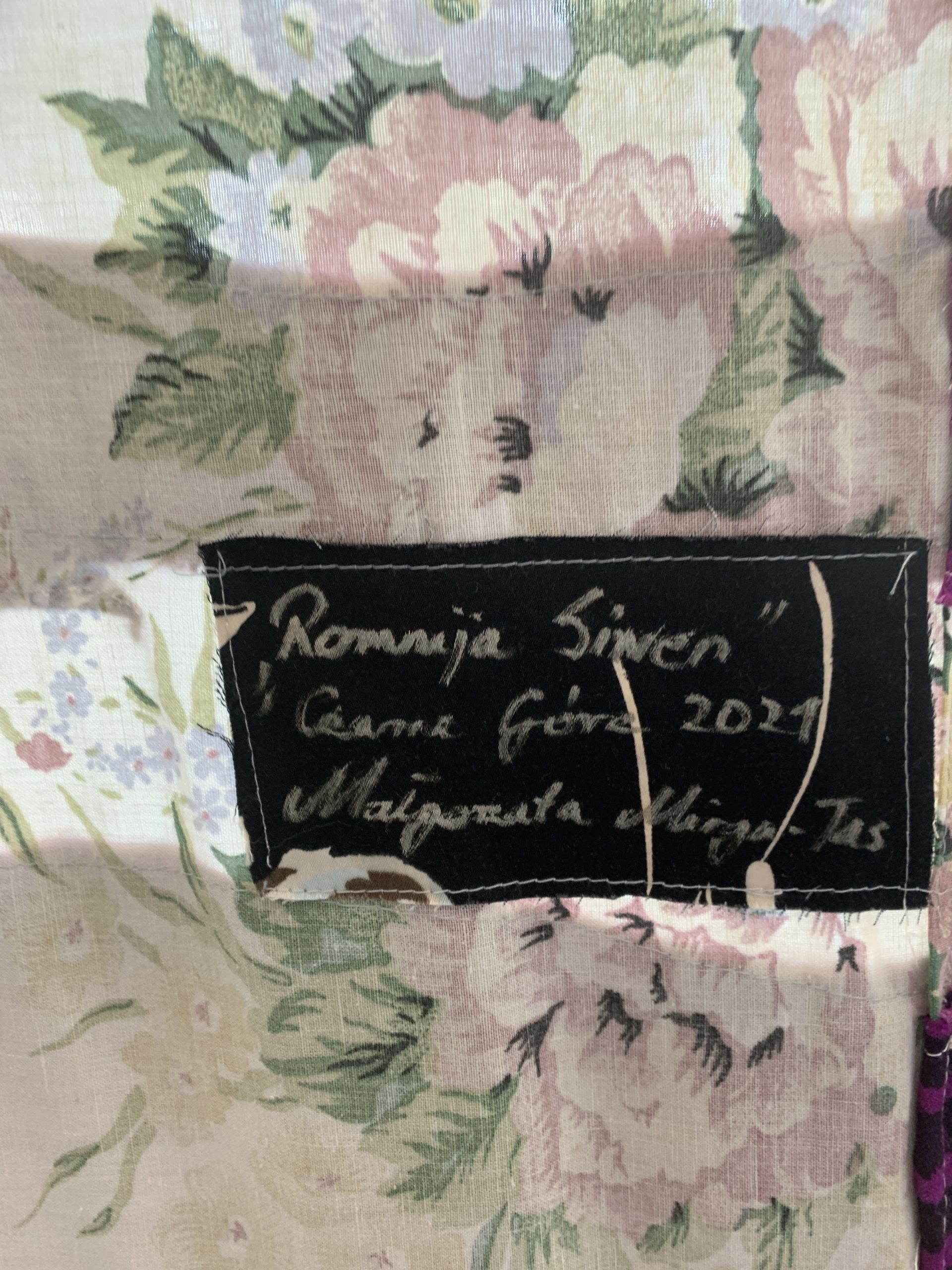
Art most definitely speaks for itself, but La Biennale di Venezia is not just about art: it is also political, and the political language it speaks is not exactly democratic (in the sense we think of in the 21st century) or grassroots. At La Biennale, nations converse and compete, displaying their developments and achievements, hopes…
Text by Agata Czarnacka ›››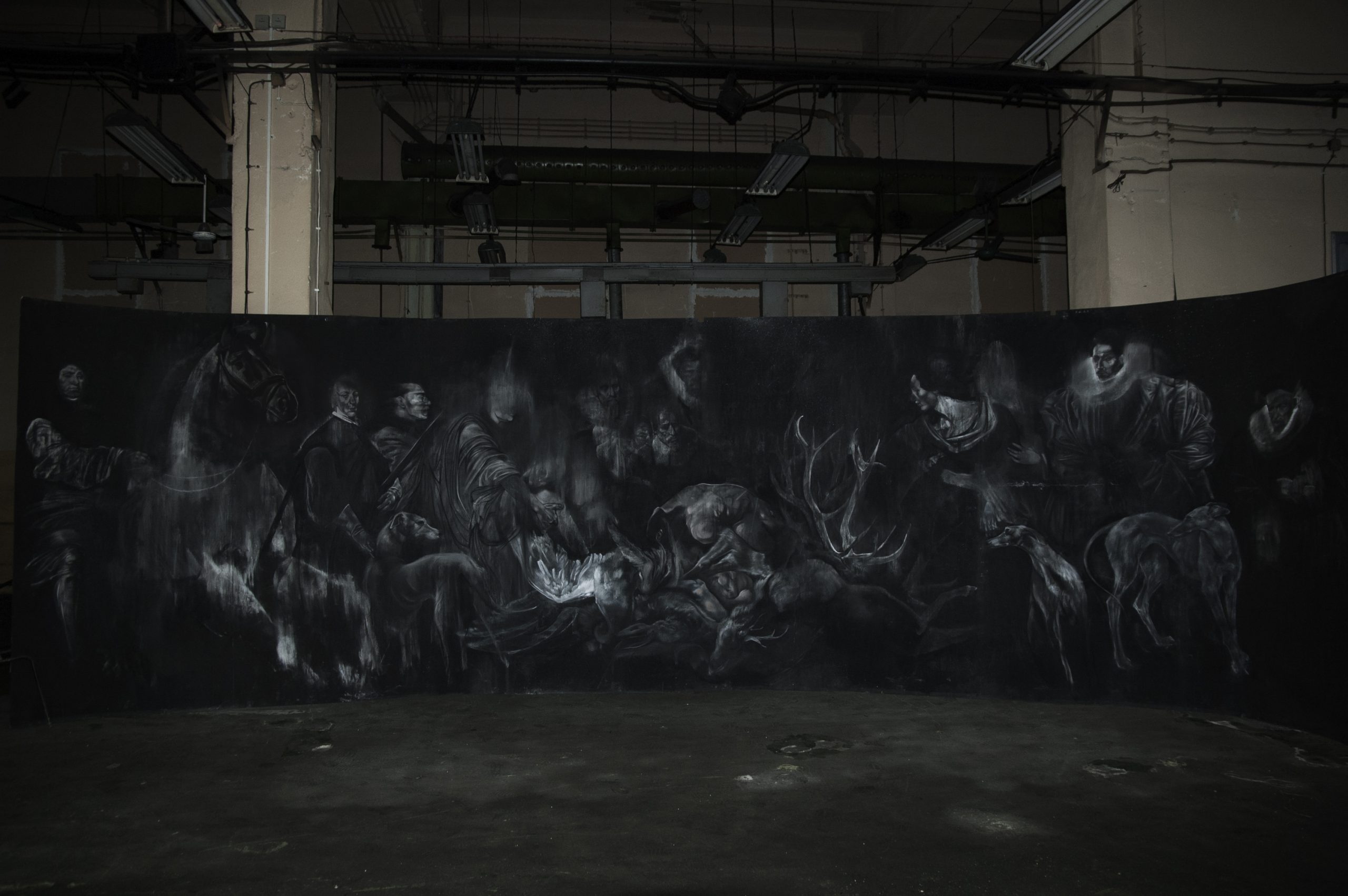
I had planned to discuss here the art of emancipation, an original perspective, and the starting point taken by an artist who brings a breath of fresh air. Drawing on the works of Krzysztof Gil, I had intended to analyse his visual strategies, which decolonise canonical art in an original and personal way, exploring elements…
Text by Joanna Synowiec ›››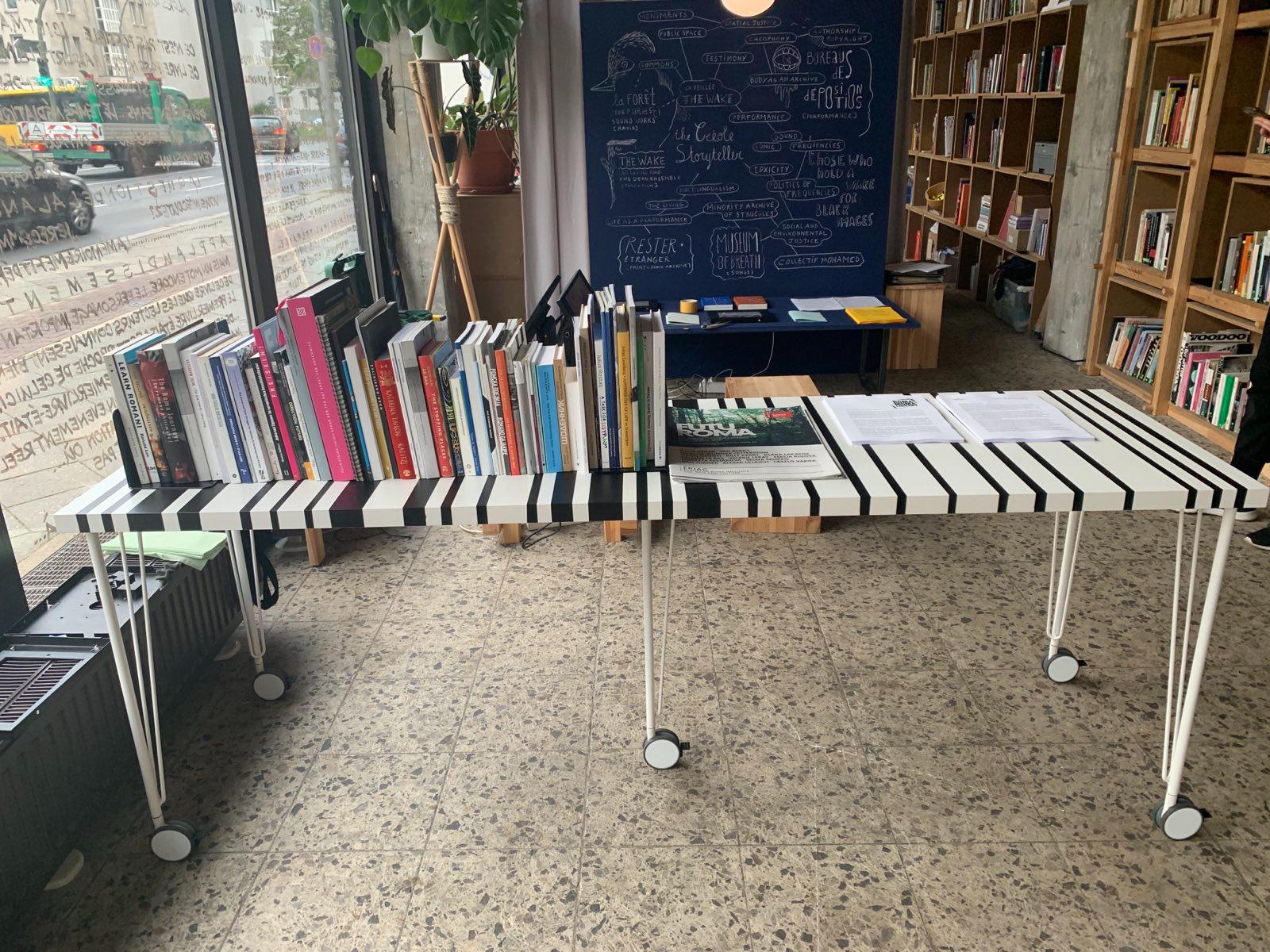
“But don’t worry, coz you won’t rule any more, the future is ours”.[1] Undermining the modernity/coloniality strategy of situating other knowledges and identities in a disempowered past through the act of labelling communities as “traditional” and “primitive” and denying them the right to participate in the present, Mihaela Drăgan, with her performance, Roma Futurism: The…
Text by Elena Quintarelli ›››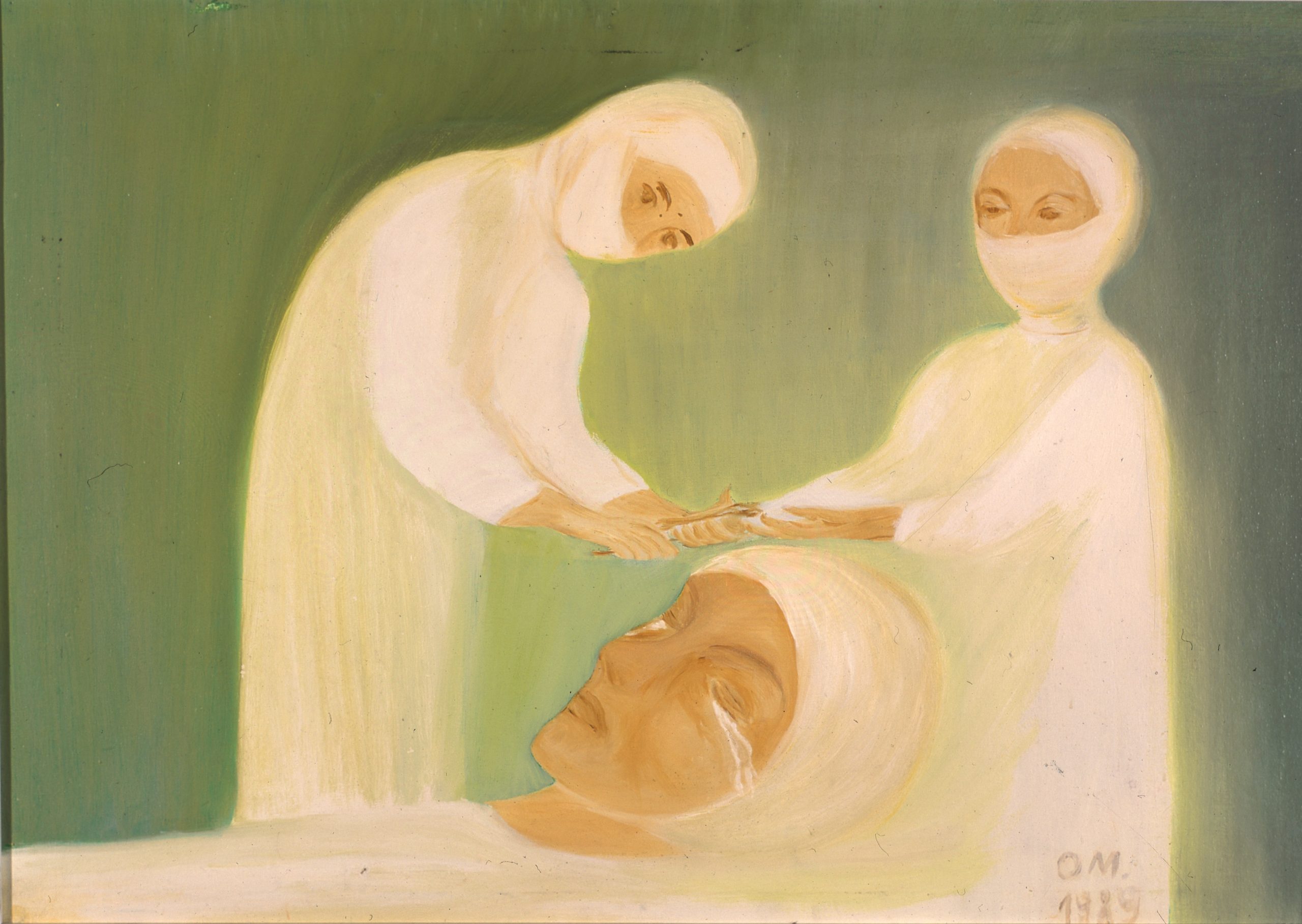
Starting at the End: Unknowing OFF-Biennale Budapest was about to end in late April, when one of its most prestigious and yet under-recognised artworks, Péli Tamás’s Birth arrived in Budapest, to the Budapest History Museum in the Castle.[1] Shortly after closing the Mara Oláh exhibition[2] at the Glove Factory Community House (Kesztyűgyár Közösségi Ház), I…
Text by Andrea Pócsik ›››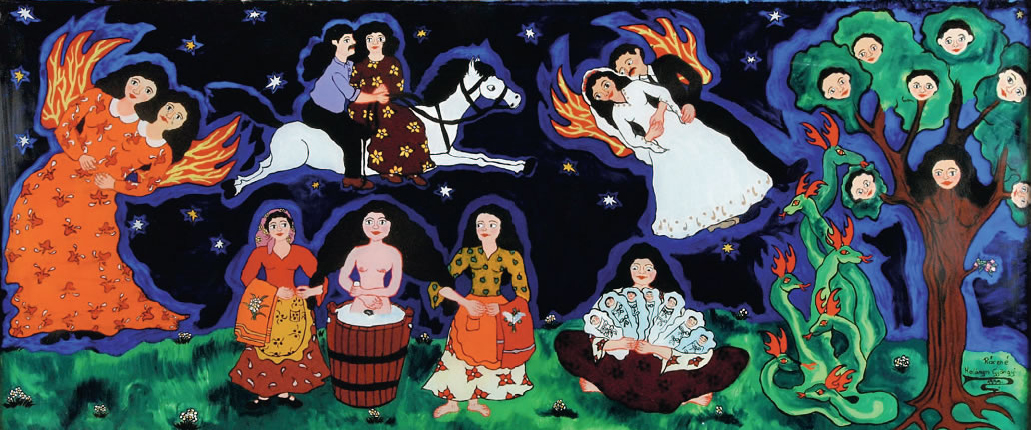
The present text[1] presents a brief overview of the cultural and communal mission of Romano Kher from Hungary, especially focusing on their summer camps where significant artworks were displayed and made a major impact on generations of Roma youth. I argue here that due to a lack of proper institutional background, Roma cultural and art…
Text by Eszter György ›››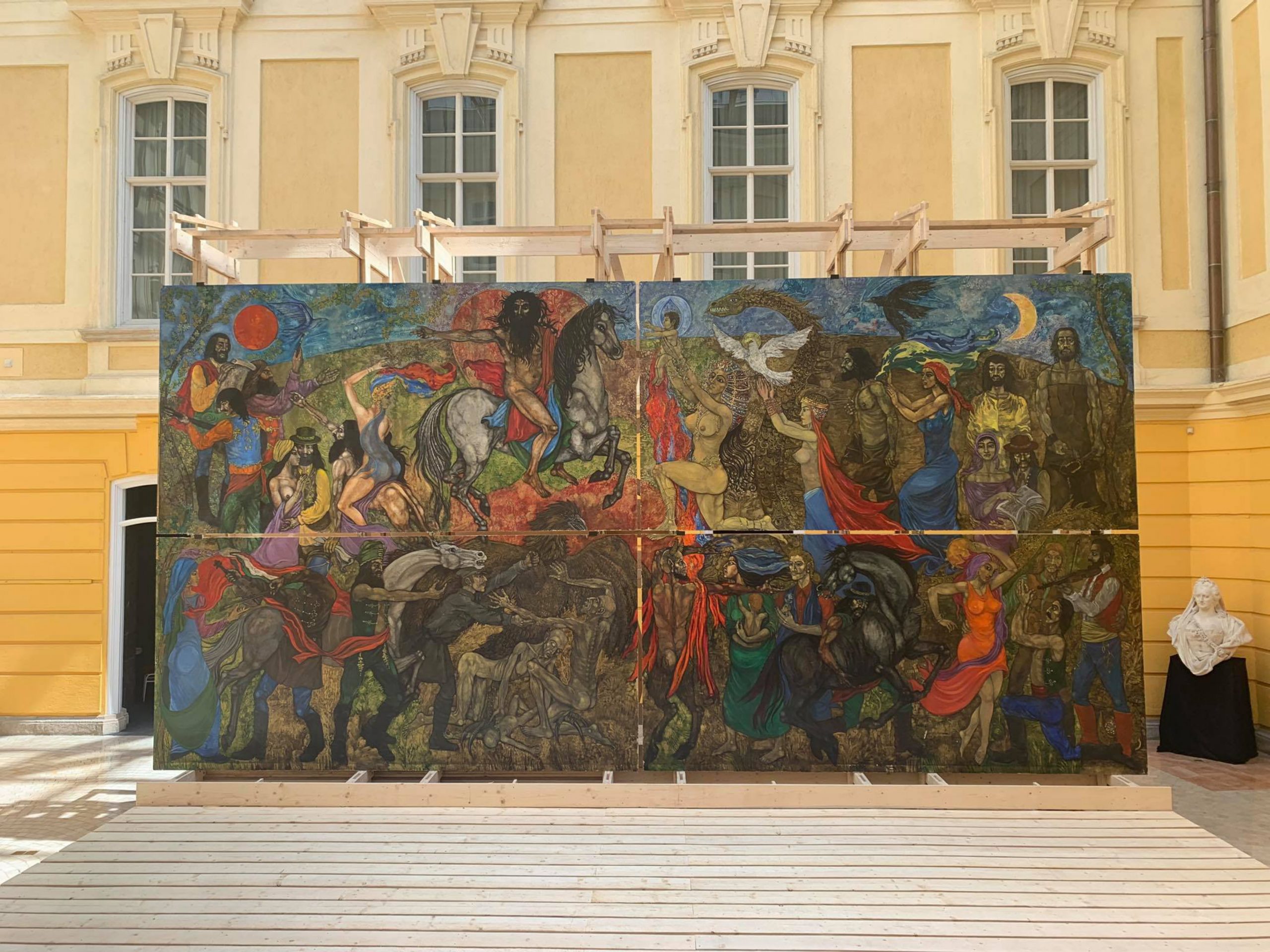
This week we present the film documenting the opening of the exhibition, Collectively Carried Out: Tamás Péli’s Birth. ERIAC Executive Director Tímea Junghaus takes you on an exclusive art historian-guided tour of the exhibition. Entitled Birth, Tamás Péli’s monumental artwork is of unparalleled significance in many respects. Painted on fibreboard, the panel painting of…
Text by Off-BIennale Budapest, video by Kornél Szilágyi ›››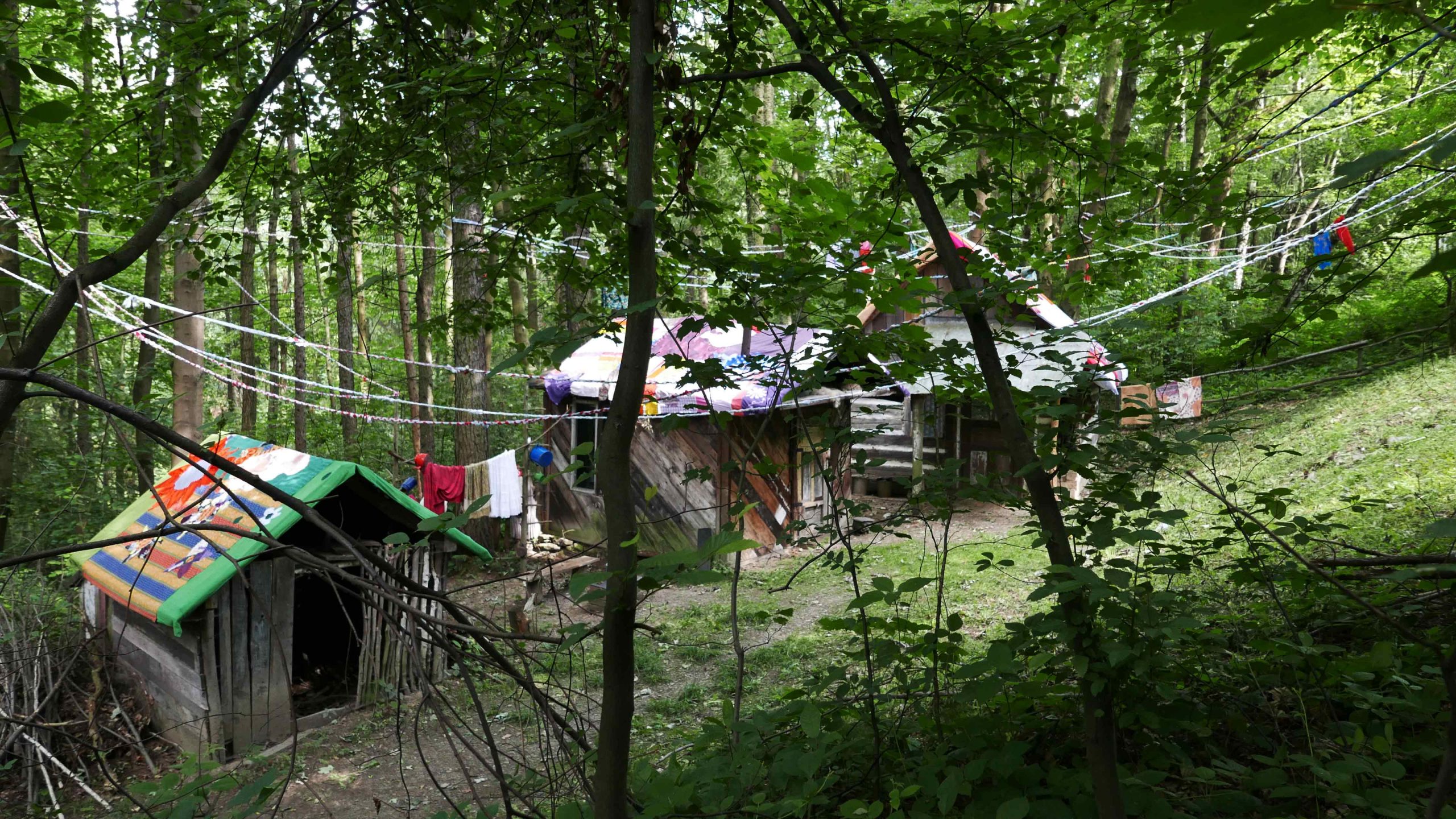
There is no doubt that for some time now we have been witnessing two cultural processes in Europe, that are simultaneously complementary and competitive. On the one hand, the last decades of the twentieth century and the first decades of the twenty-first century can be characterised as a period of unprecedented growth of interest in…
Text by Wojciech Szymański ›››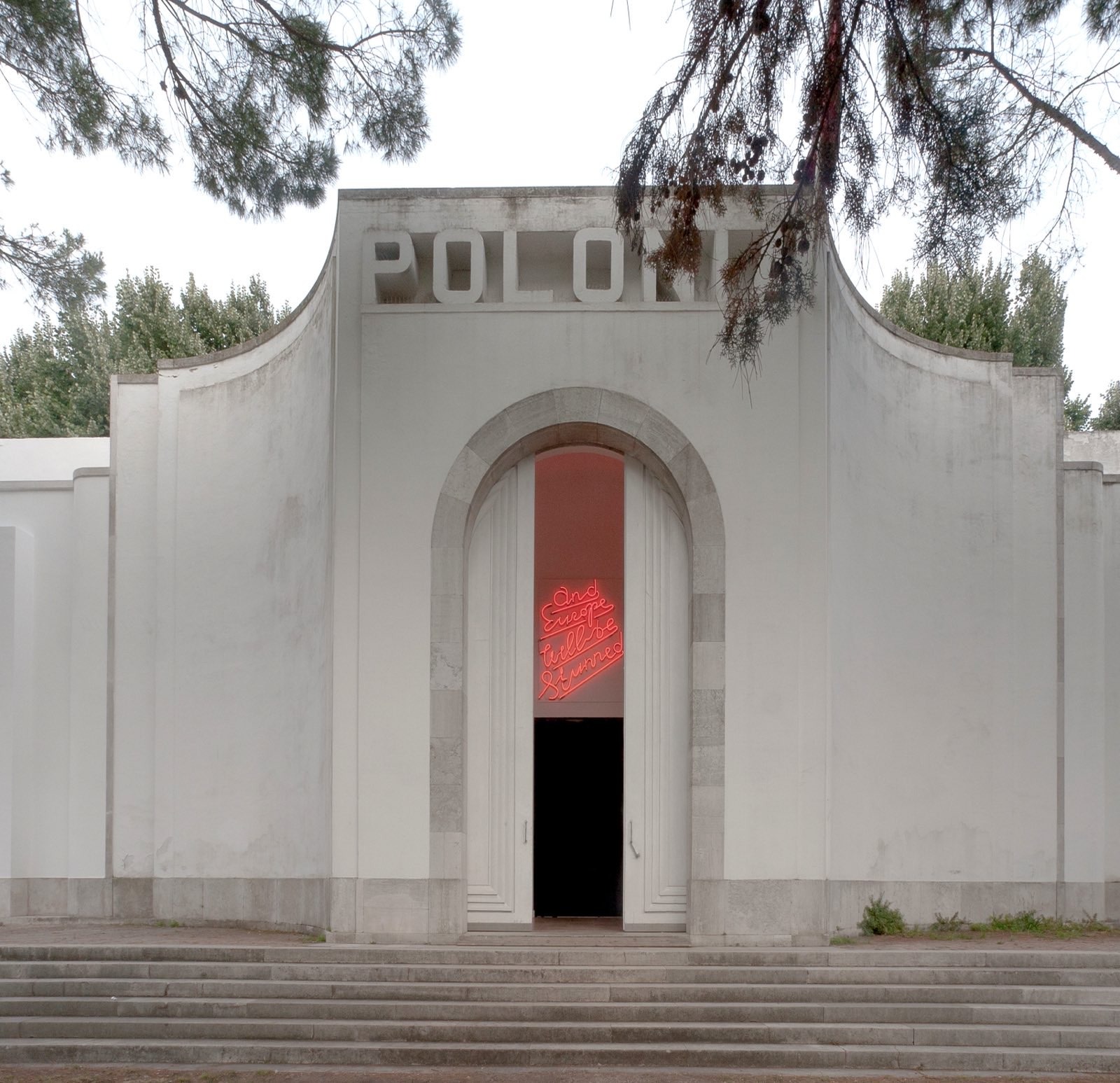
On 28 September 2021, a jury assembled at the Zachęta – National Gallery of Art to select the winning curatorial project for an exhibition to be held at the Polish Pavilion as part of the 59th International Art Exhibition in Venice in 2022 (La Biennale di Venezia, 23 April – 27 November 2022, curated by…
Text by Monika Weychert ›››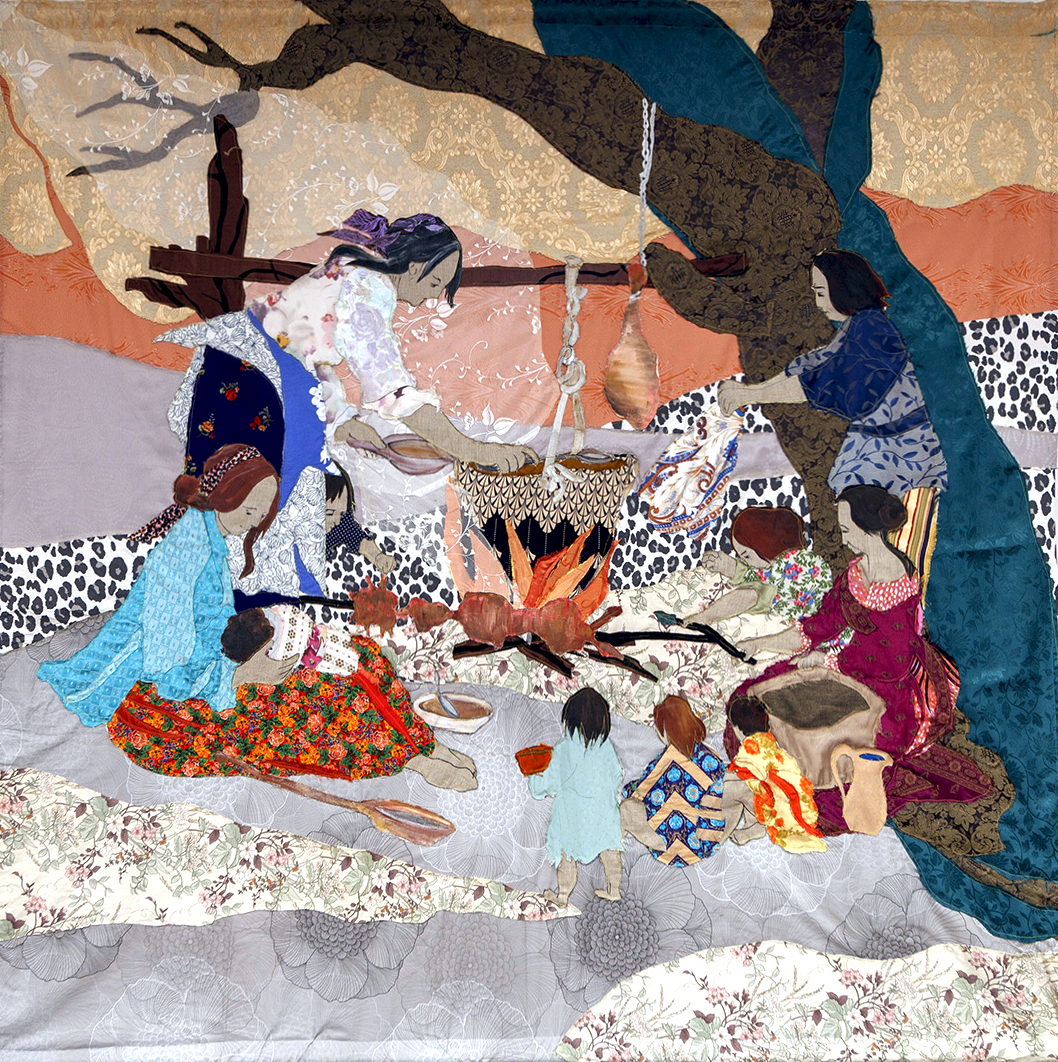
The selection of Małgorzata Mirga-Tas to represent Poland at the 59th International Art Exhibition at the Venice Biennale is a great step forward for Roma contemporary art, Roma recognition and for the Roma people. Mirga-Tas has been exhibiting internationally for many years to great acclaim, and this opportunity is a fitting milestone in the artist’s…
Text by Daniel Baker ›››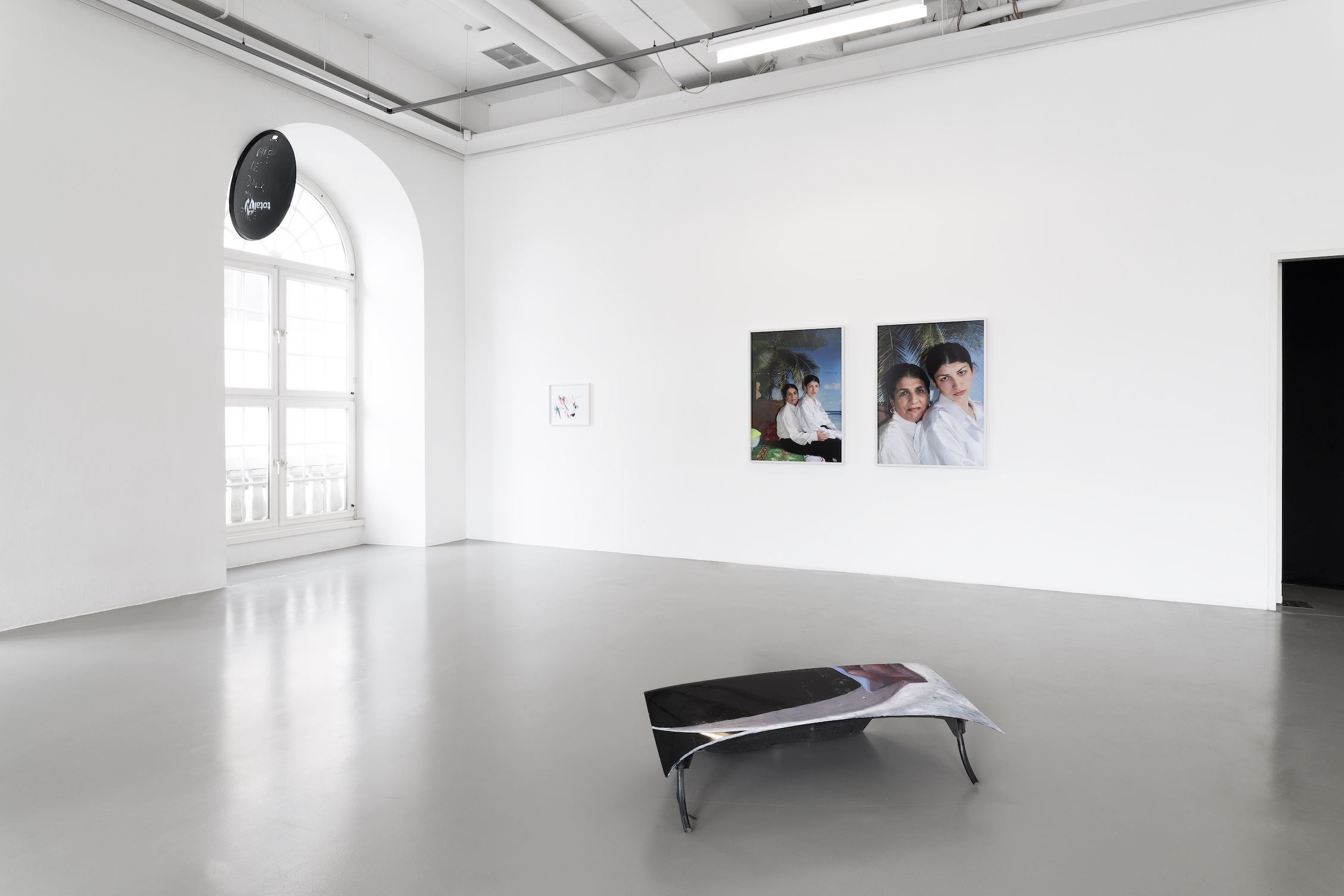
As I reflect upon how to synthesise ideas of a possible Roma museum, exhibiting the work of artists in a decolonised way, and on the work of Selma Selman in the context of her solo exhibition at the Kasseler Kunstverein in Kassel, Germany, which I co-curated with Olga Holzschuh, the following notions come to mind:…
Text by Boshko Boskovic ›››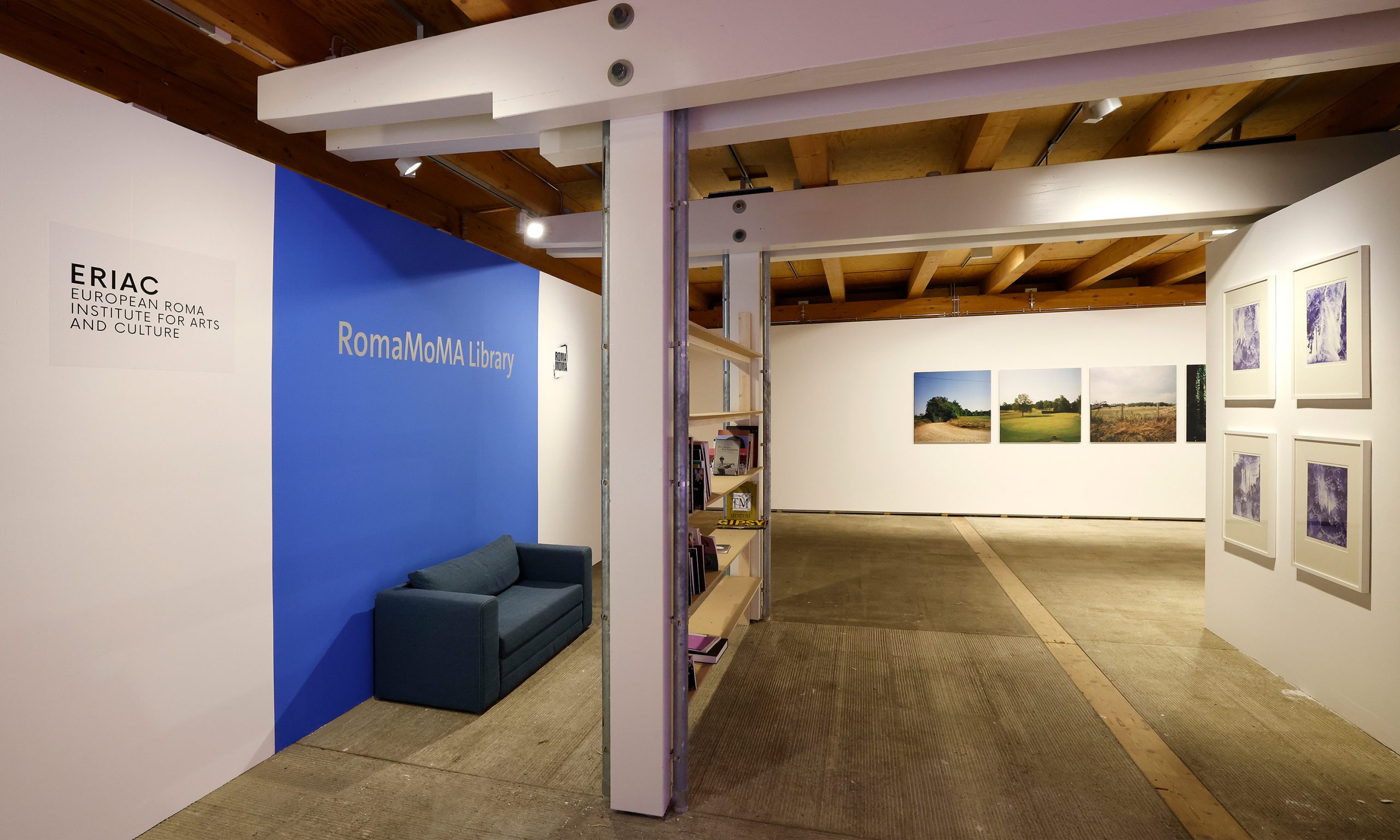
Alfred Ullrich’s pictures are irritating. Is this abstract art, or are they floral patterns, wallpapers, curtains? What is this? Moreover, what does this have to do with the culture of the Roma, to which the exhibition Art and Healing at the Schafhof European Centre for Art Upper Bavaria is dedicated, and in which, among others,…
Text by Björn Vedder ›››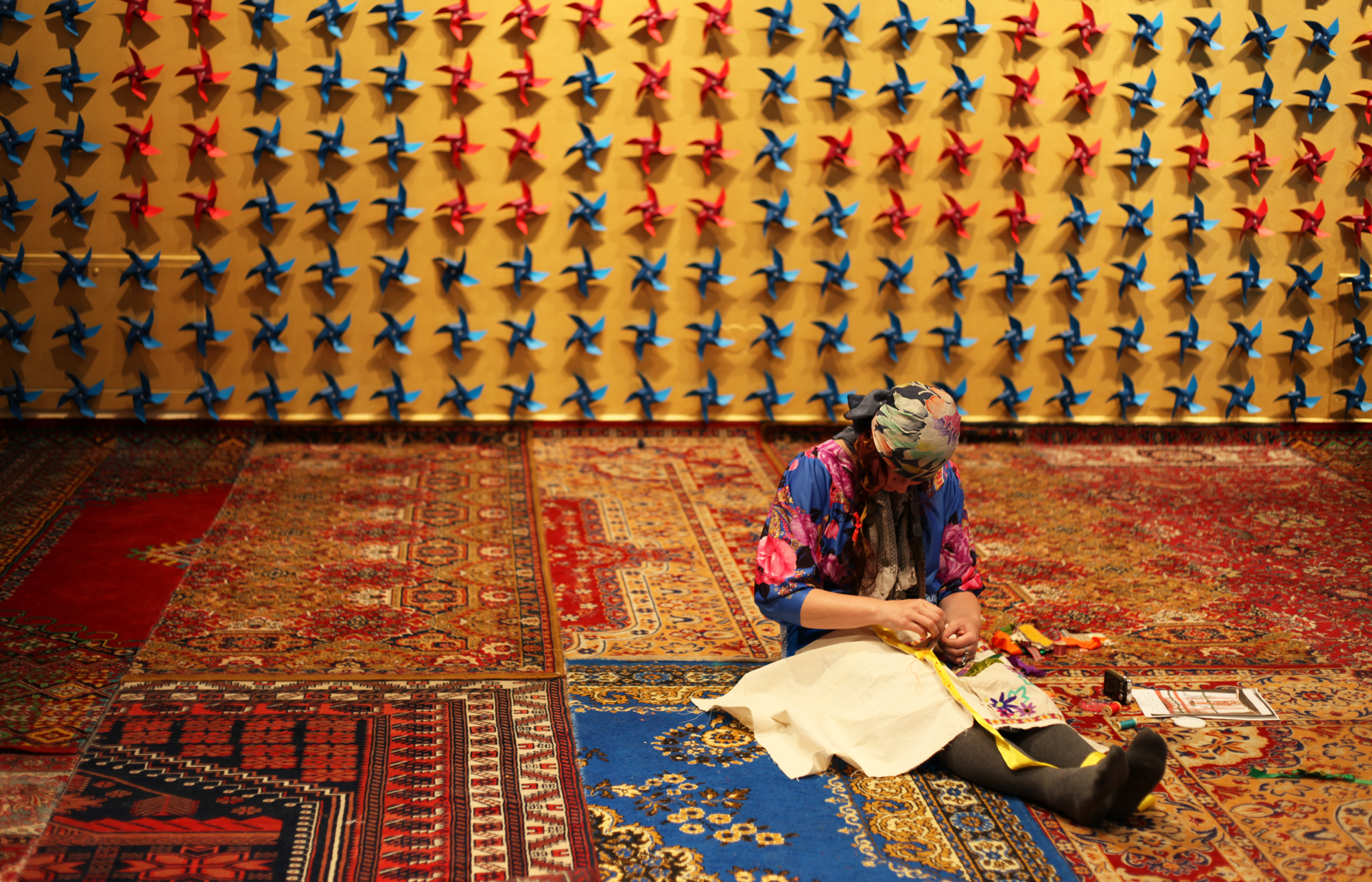
The 2014 exhibition, Tajsa, which I curated together with Katarzyna Roj, presented me with a great challenge. Up to that point, I had been putting on humble independent shows in places that did not have the status of a public institution. In my world, everything happened in real time: there was no long-term project schedule,…
Text by Joanna Synowiec ›››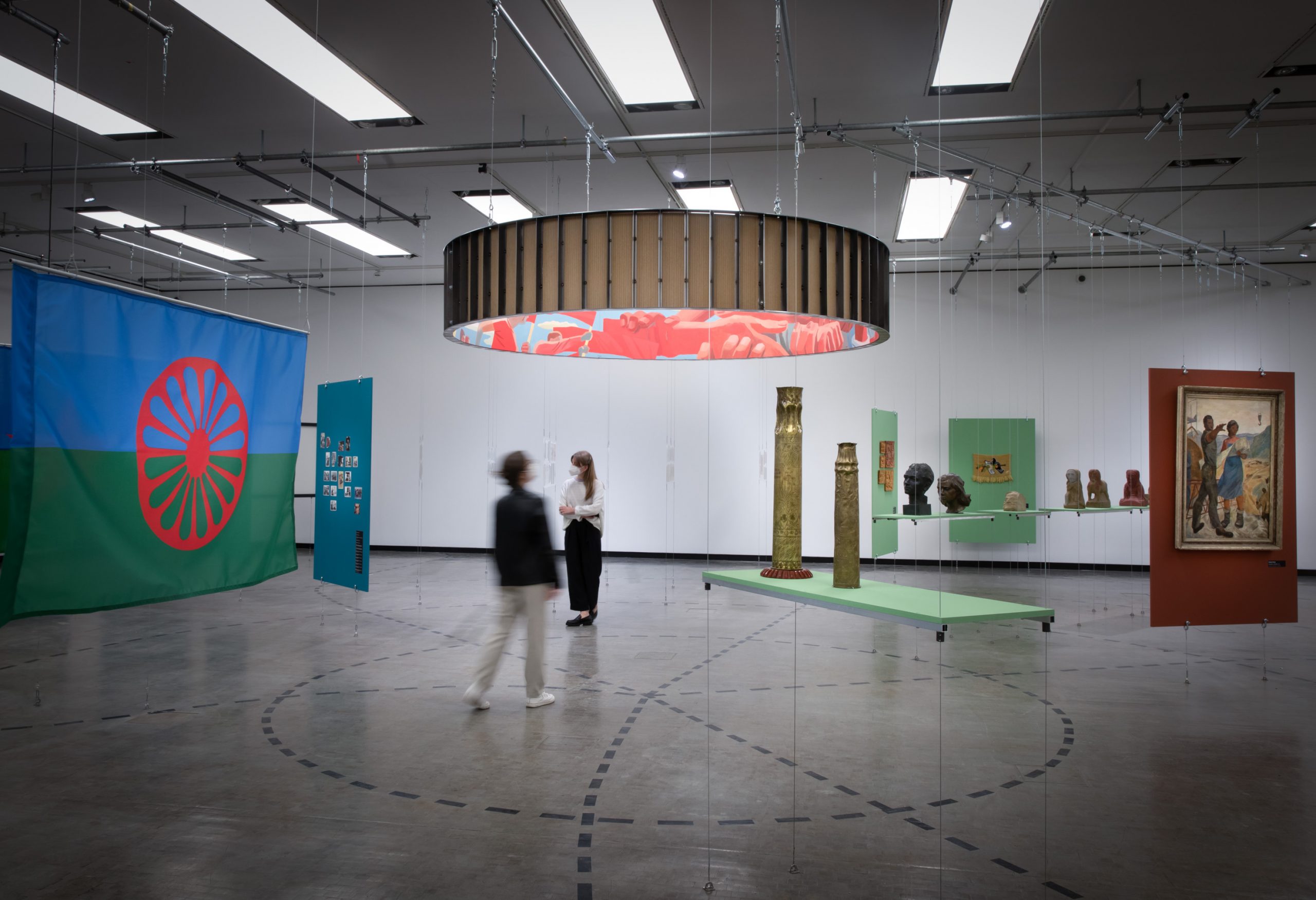
Blue on the top, green on the bottom, a red star in the centre. At first glance, the poster for the exhibition, Manuš heißt Mensch – Manuš means human, seems to aim for a clear connection to the Romani flag, and therefore a perspective on Romani activism and politics. On closer examination, however, the question…
Text by Samuel Mago ›››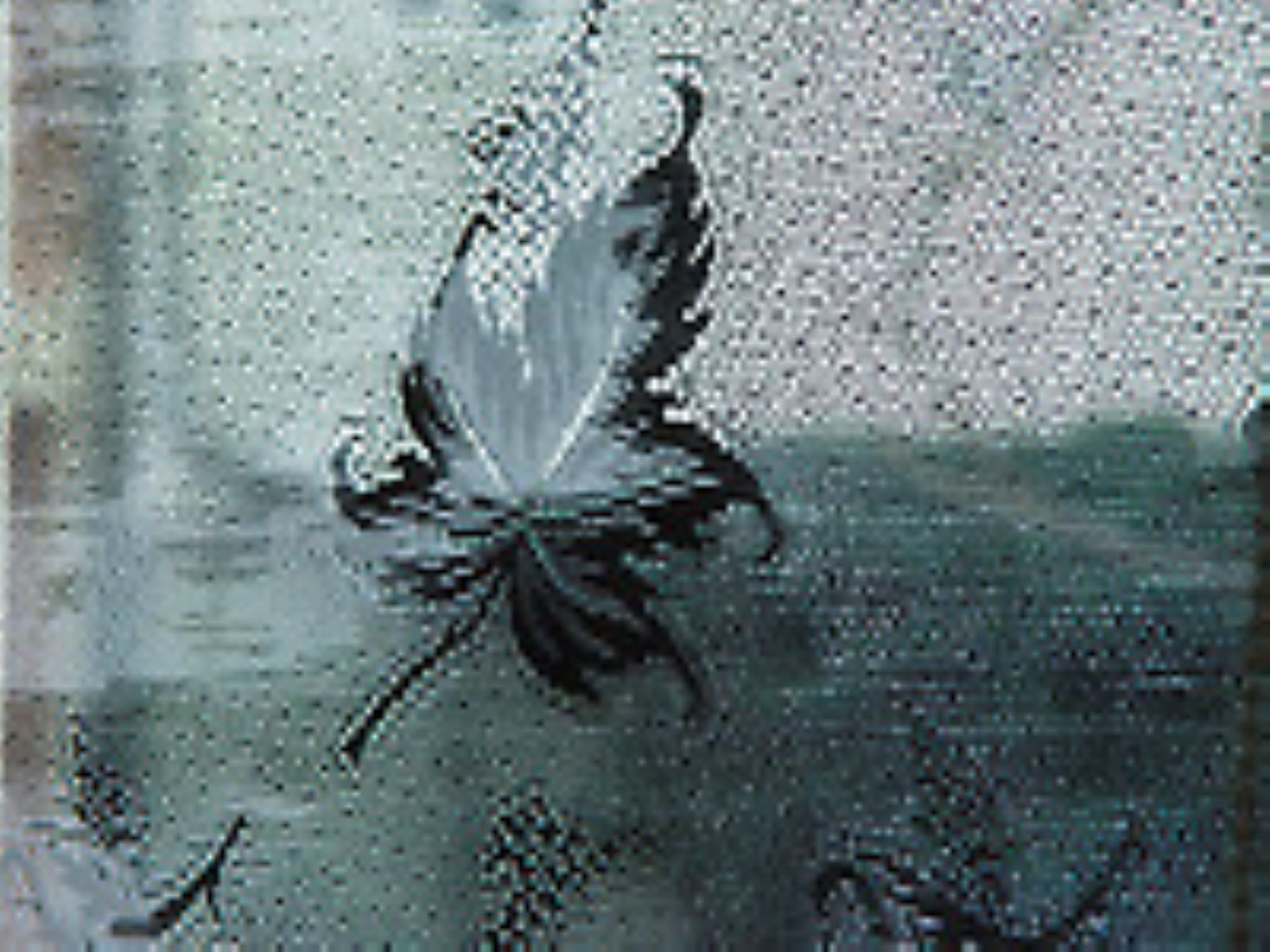
The exhibition Art and Healing – A Roma Contribution for Europe, on view at Schafhof – European Center for Art Upper Bavaria until 26 September, featured the nomadic RomaMoMA Library and works by Valérie Leray (F), Selma Selman (BIH), Dan Turner (UK), and Alfred Ullrich (D). Following our post on the RomaMoMA Library display at Schafhof and…
Text by Alfred Ullrich ›››
The ADJACENT design concept marries the barcode of a book from the RomaMoMA Nomadic Library with a functional object. In this case, ADJACENT is a white mobile table painted with black lines to form the barcode of We Roma: A Critical Reader in Contemporary Art. The concept title refers not only to the parallel lines…
Text by Daniel Baker ›››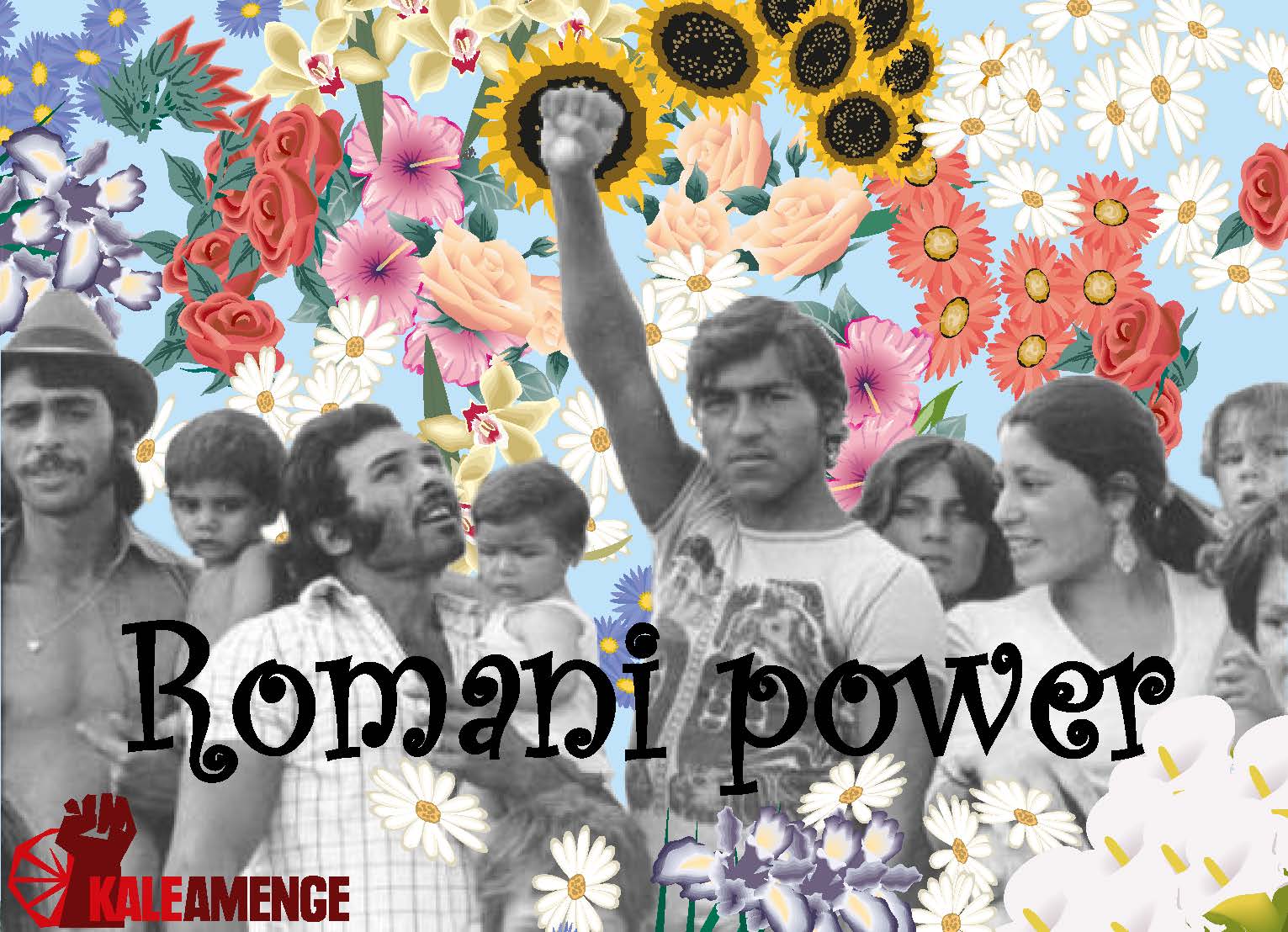
Even as I sit to write this short piece, I seek to find my voice through writing. For me, as a Romani woman, writing has become one of those forms that have allowed me to tell the history of anti-Roma Europe: the unspoken history. The embedded European racial terror against Roma and other racialised people…
Text by Sebijan Fejzula ›››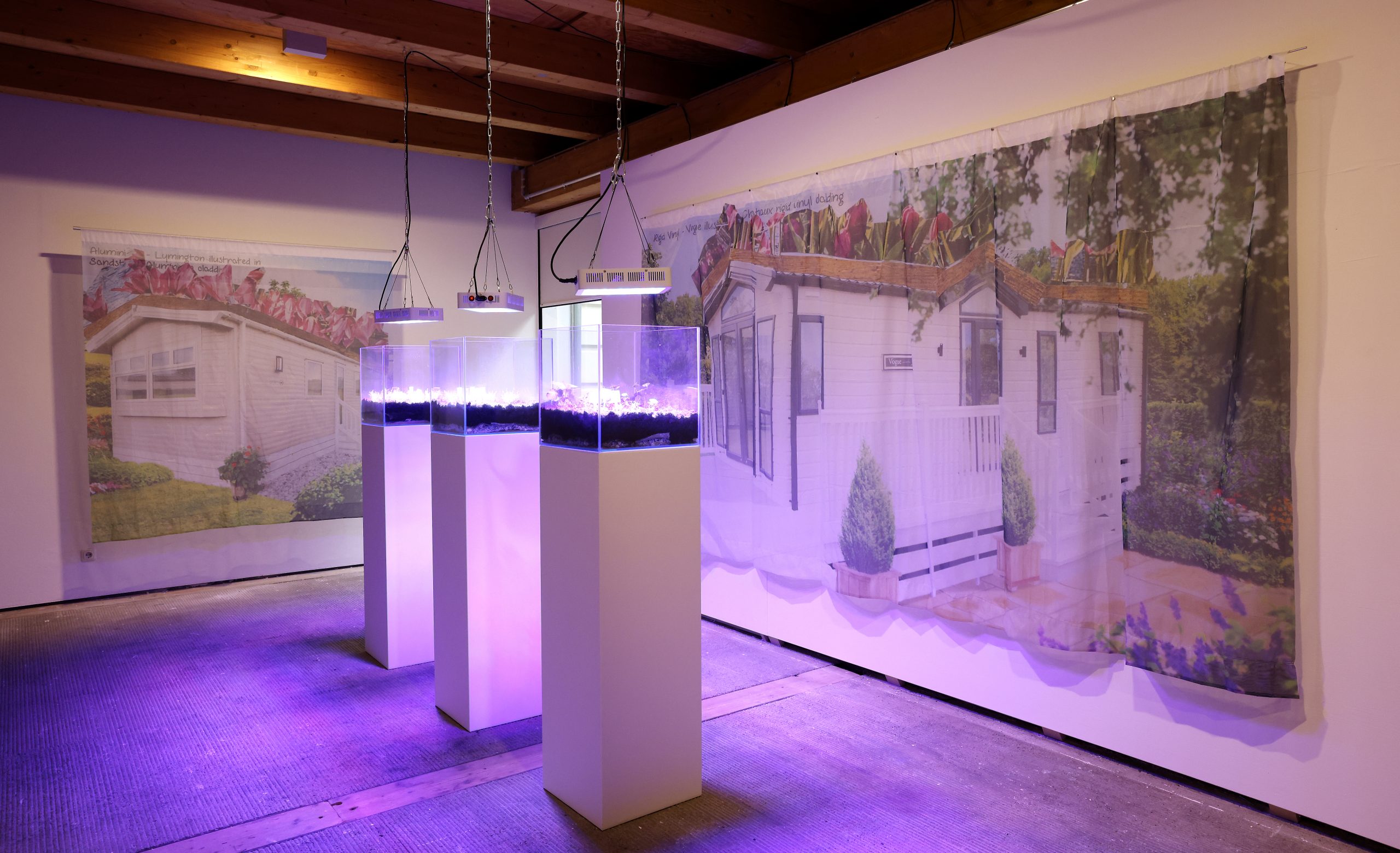
In my consideration for RomaMoMA, I have chosen an entire exhibition, Art and Healing – A Roma Contribution for Europe, currently on view at Schafhof: the European Center for Art Upper Bavaria. To choose a singular artwork would not fairly represent the wide range of works homogenised by the term ‘Roma Art’. This exhibition is…
Text by Dan Turner ›››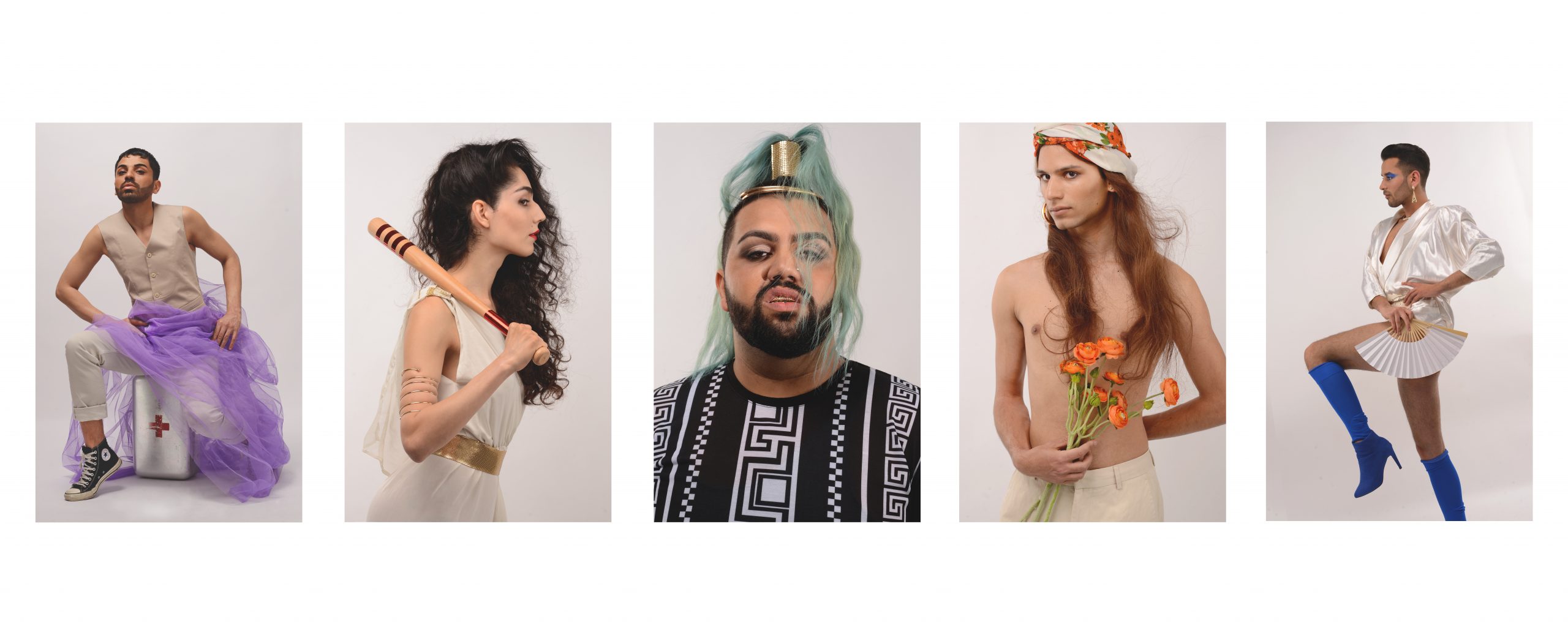
Introduction Representation matters. The great majority of those who will not feel the weight of this are those who do not suffer its absence. It is truly difficult to explain this type of absence to those who see themselves everywhere – in magazine columns, on the TV, and even in exhibition spaces. Nor is it…
Text by Joci Márton ›››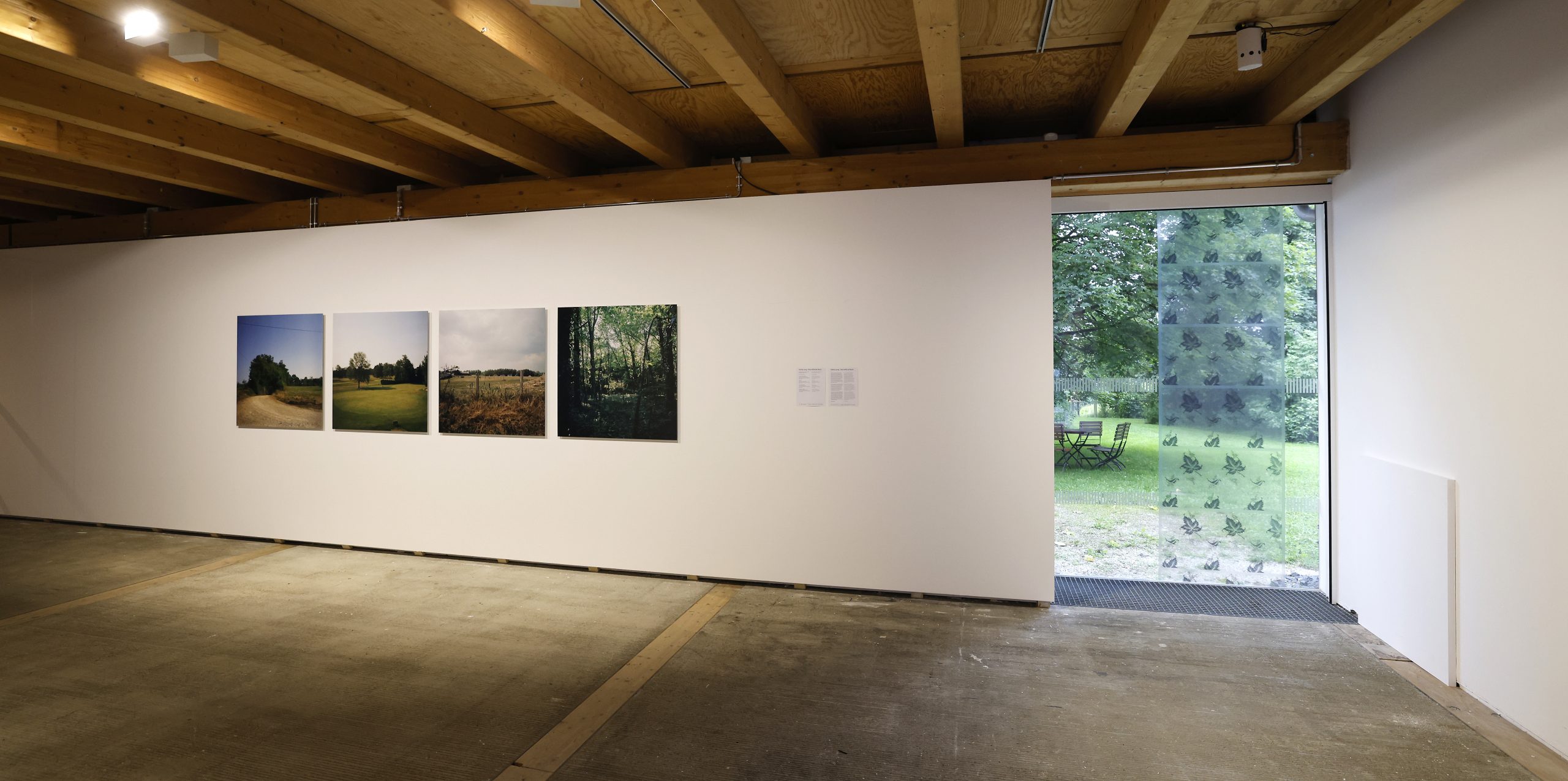
The exhibition Art and Healing – A Roma Contribution for Europe opened in Schafhof – European Center for Art Upper Bavaria on 24 July. The exhibition features works by Valérie Leray (F), Selma Selman (BIH), Dan Turner (UK), Alfred Ullrich (D), and the nomadic RomaMoMA Library, consisting of approximately 100 English-language books focusing on Roma Art History and…
Text by ERIAC ›››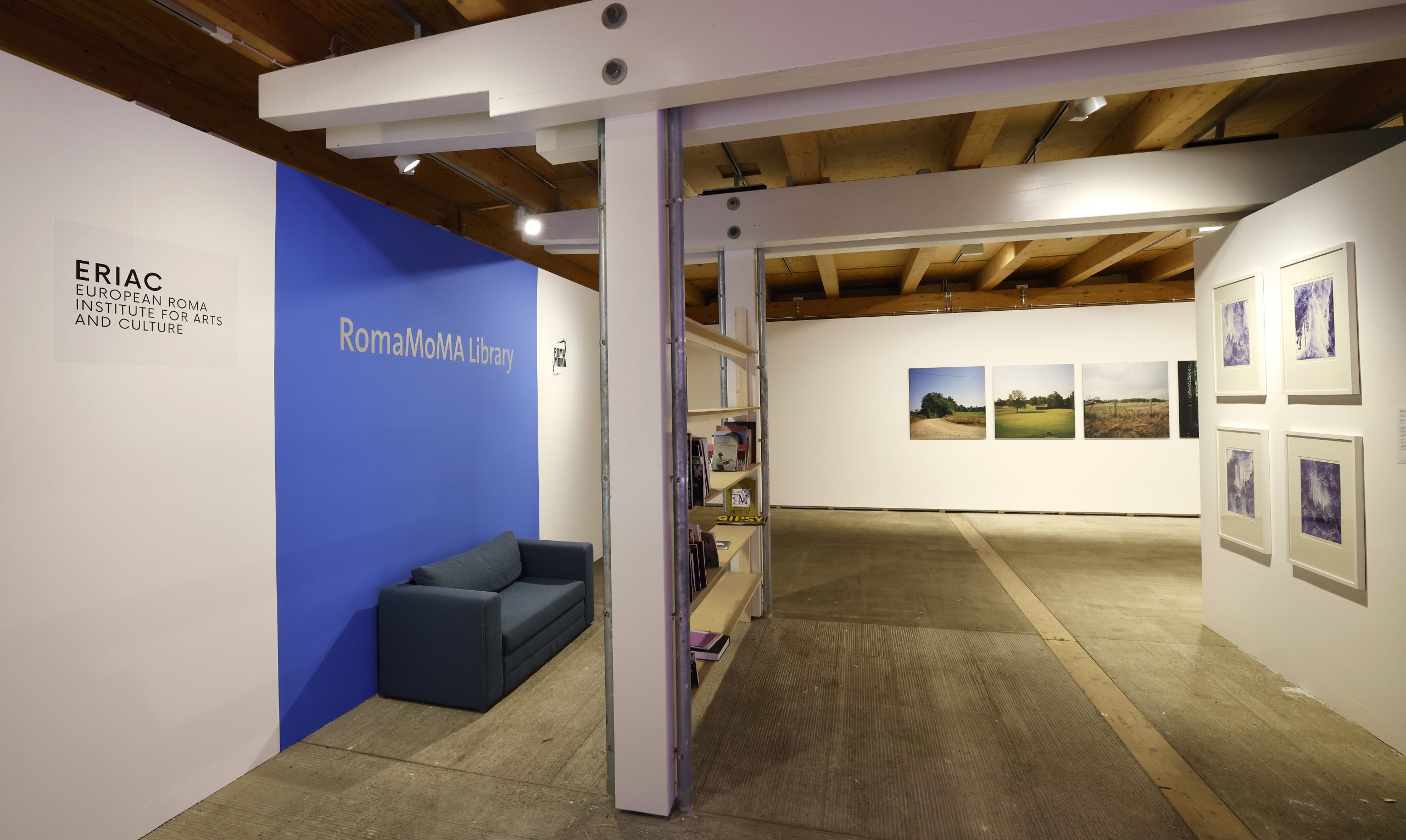
The RomaMoMA Nomadic Library, initiated on the 50th anniversary of the First World Roma Congress, on International Roma Day, 8 April 2021, is currently on view at Schafhof: the European Center for Art Upper Bavaria, within the framework of the exhibition, Art and Healing – A Roma Contribution for Europe. Alongside the RomaMoMA Library, featured artists…
Text by ERIAC ›››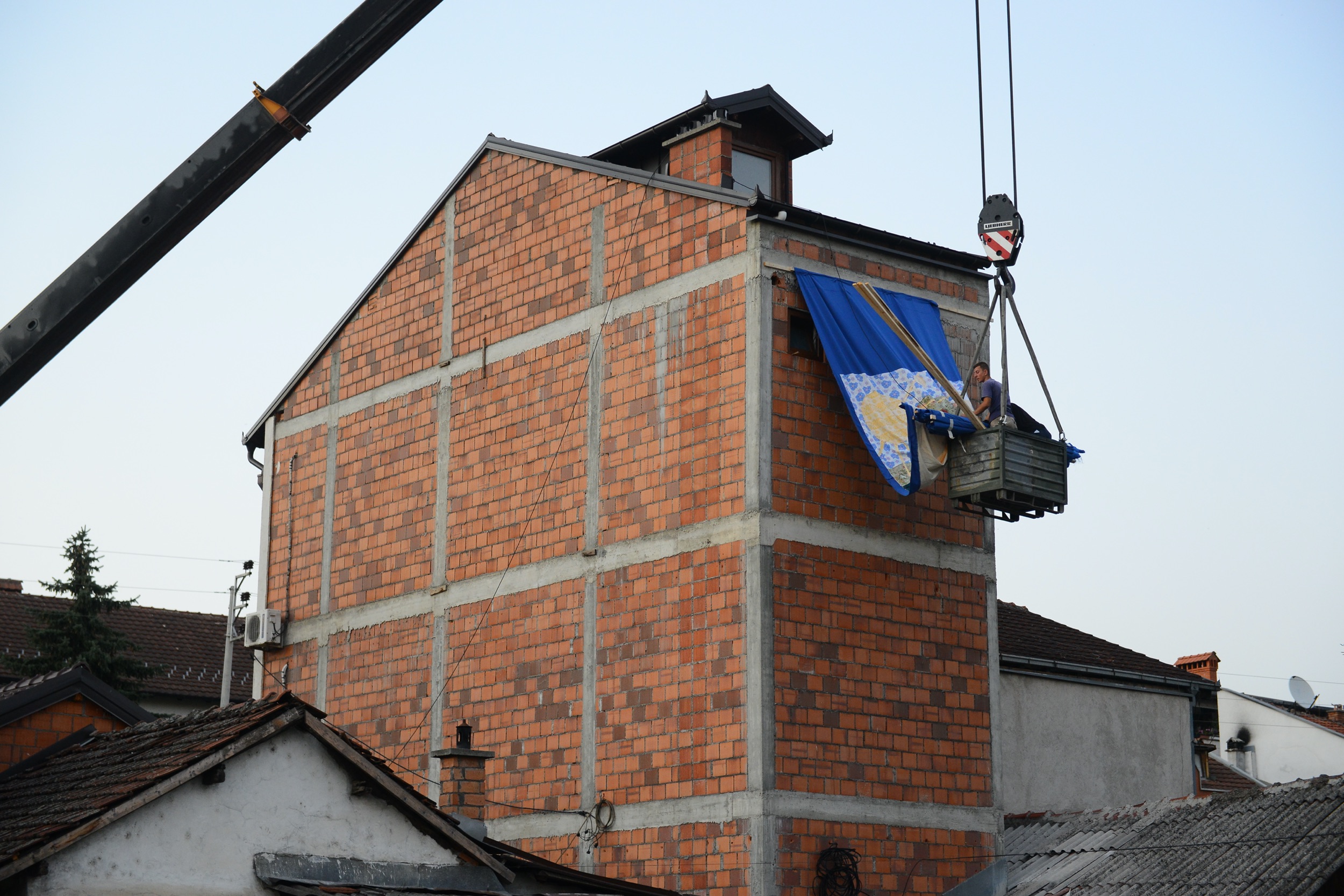
The third edition of the Autostrada Biennale launched 17 July in Kosovo. Extending between the cities of Prishtina, Prizren and Peja, What if a Journey… was curated by the Berlin-based curators Övül Durmusoglu and Joanna Warsza, and features Romani artist Małgorzata Mirga-Tas’s work, HERSTORIES. For the installation, supported by ERIAC, Mirga-Tas worked with Romani artist…
Text by Joanna Warsza ›››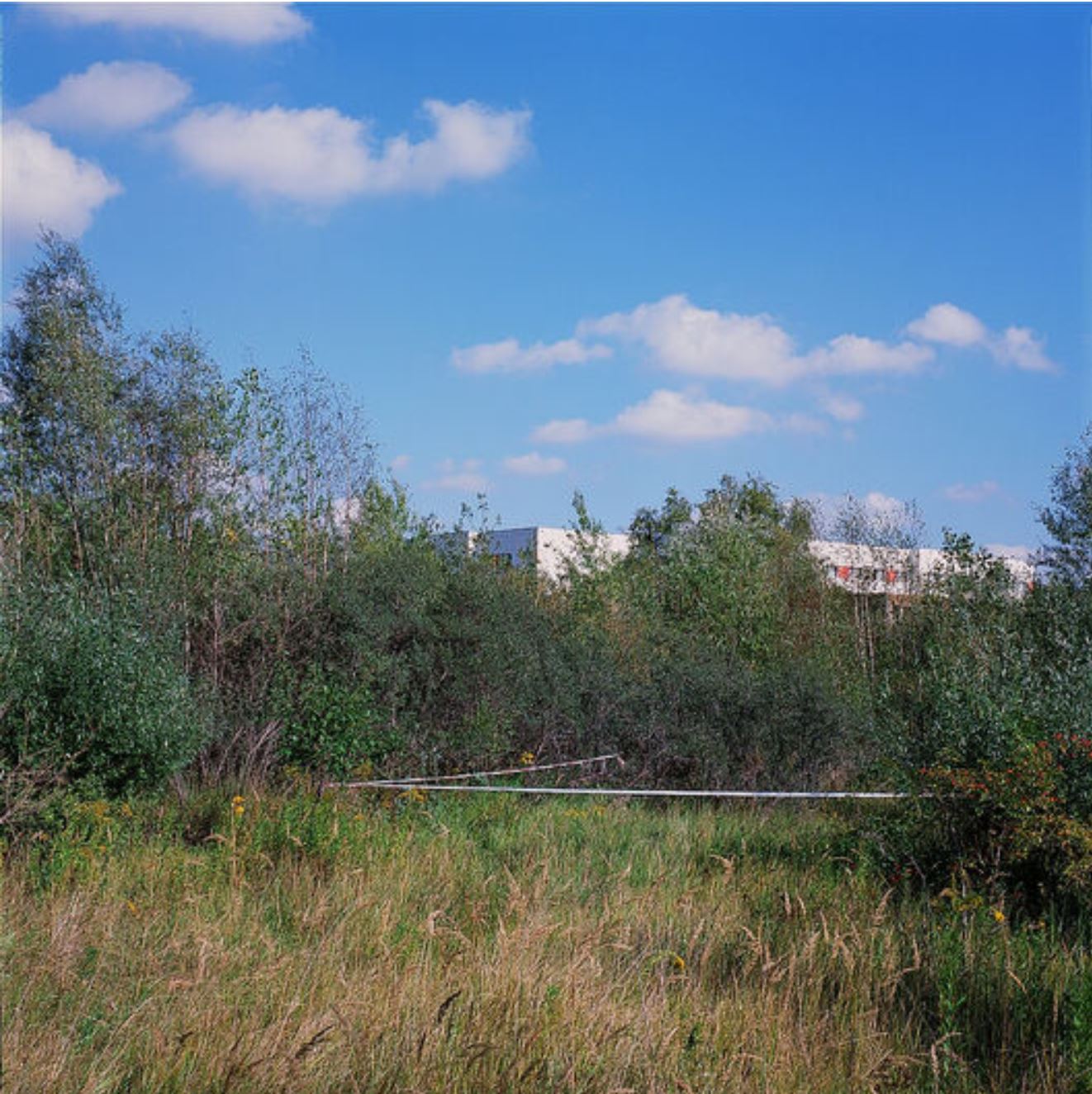
This week we feature the solo exhibition of Valérie Leray, No Innocent Landscape, currently on view at the ERIAC Gallery Space in Berlin, opened on 2 August as part of the commemorations of the Roma Holocaust. On view 2 August – 29 October 2021. No Innocent Landscape Valérie Leray’s landscapes are marked by abandoned, neglected, contested or…
Text by ERIAC, video by Kornél Szilágyi ›››
Helios F. Garcés, in his brilliant analysis published in Spanish in 2016, “El racismo antirom/antigitano y la opción decolonial”, which translates as “Anti-Roma/anti-Gypsy racism and the decolonial choice”, situates anti-Roma racism through a decolonial perspective at the very foundation on which modernity is built. The severe processes of racialisation have historically and materially displaced Roma…
Text by Marina Gržinić ›››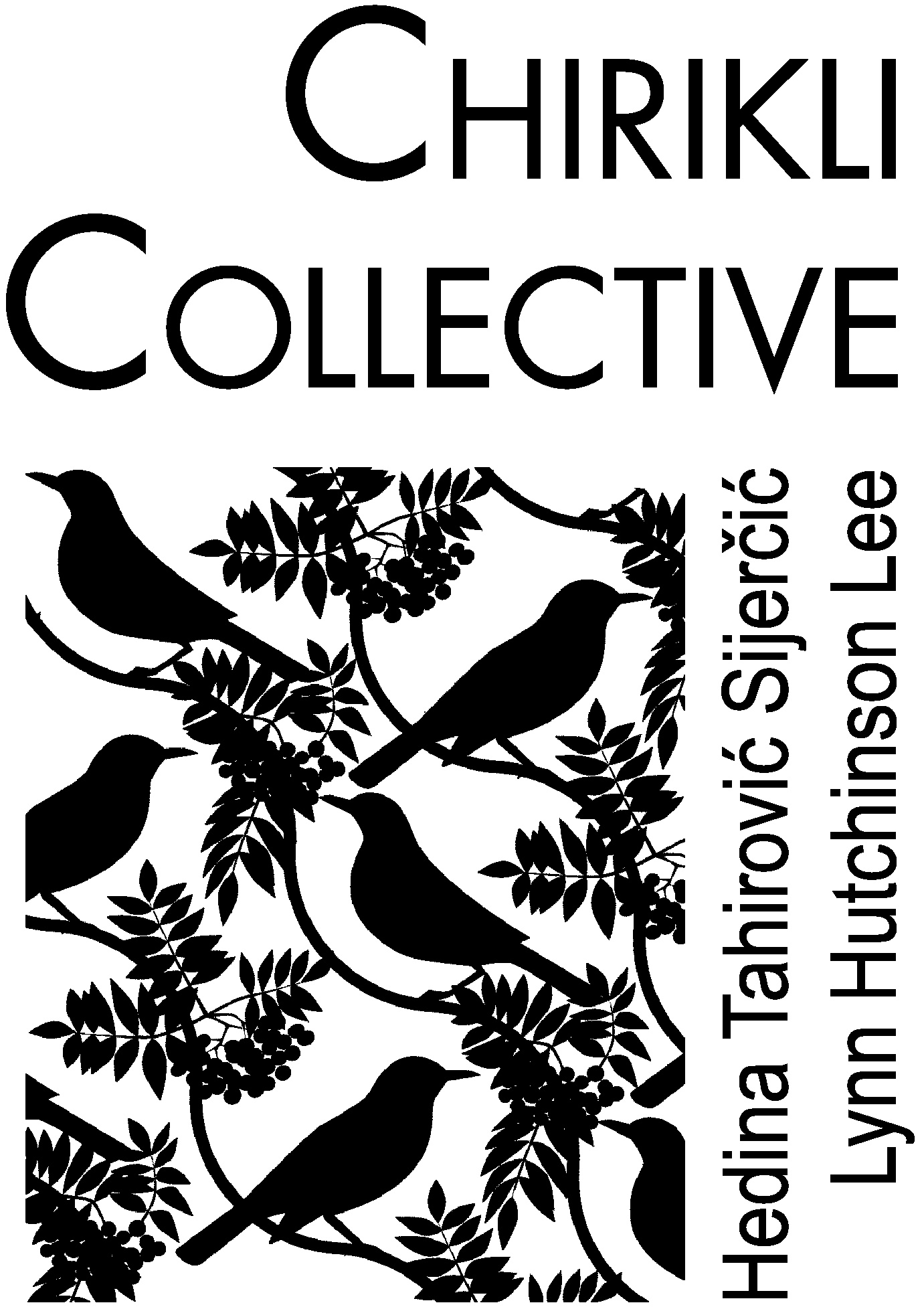
It is a great privilege to have been approached to share my thoughts on the RomaMoMA blog.[1] Nevertheless, my initial reaction was very personal and hesitant. I had to ask myself: who am I to be given this great opportunity to suggest, propose, advise, or simply share my personal scepticism, discomfort, and disenchantment about the…
Text by Suzana Milevska ›››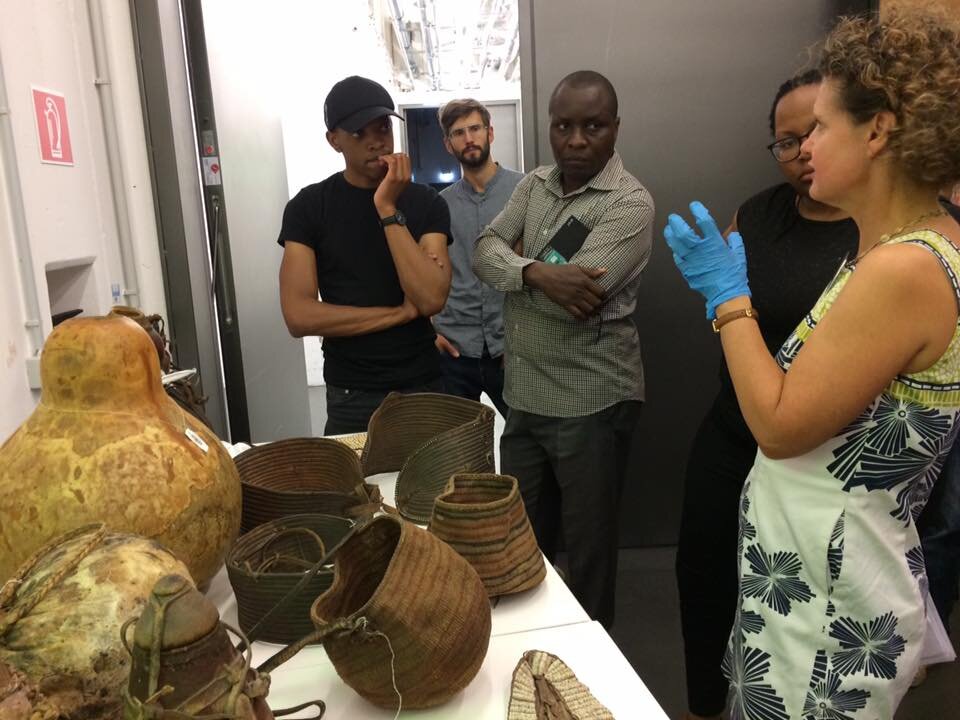
Two weeks ago, we posted the video documentation of the Restitution panel discussion within the online conference, Critical Approaches to Romani Studies, organised by the Romani Studies Program at Central European University (CEU), in partnership with ERIAC and OFF-Biennale Budapest, 31 May 2021. Last week, we posted Part 1 of the transcript. Today we post…
Text by ERIAC ›››
Last week we posted the video documentation of the Restitution panel discussion within the online conference, Critical Approaches to Romani Studies, organised by the Romani Studies Program at Central European University (CEU), in partnership with ERIAC and OFF-Biennale Budapest, 31 May 2021. Today we post Part 1 of the transcript. The panel was introduced by…
Text by ERIAC ›››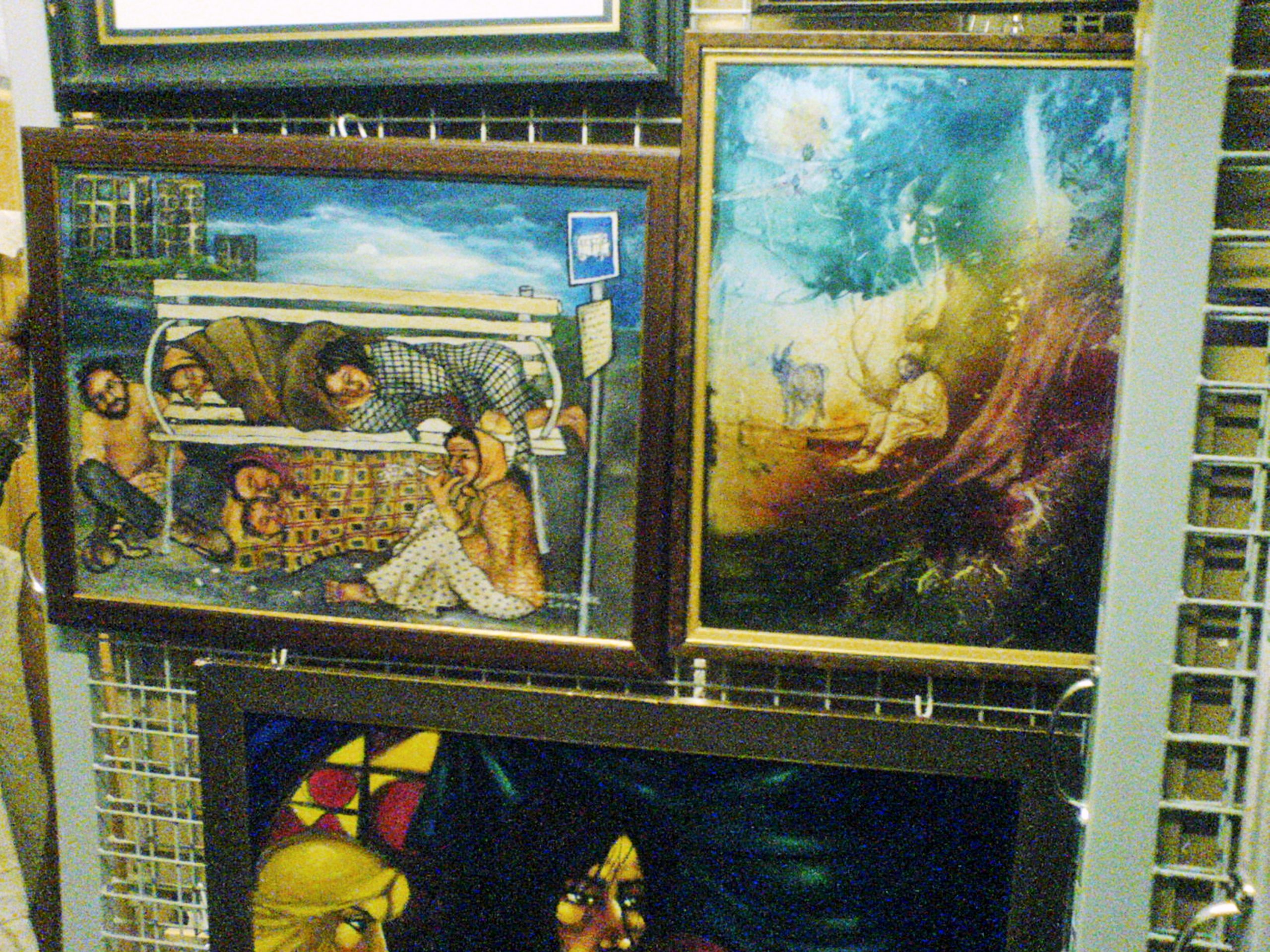
Panel discussion within the online conference, Critical Approaches to Romani Studies, organised by the Romani Studies Program at Central European University (CEU), in partnership with ERIAC and OFF Biennale Budapest, 31 May 2021. Recent struggles for racial justice and decolonisation have forced cultural institutions, museums, and galleries all over the world to critically reflect upon their…
Text by CEU Romani Studies Program, ERIAC and OFF Biennale Budapest, video by CEU Romani Studies Program ›››
The evolving concept of a Roma Museum has a crucial role to play in reclaiming access to our cultural histories, but questions remain regarding its future form. Possibilities range from a mobile museum to a dedicated building, but while debate continues, perhaps a more oblique take on the subject—a Roma MetaMuseum—might move us closer toward…
Text by Daniel Baker ›››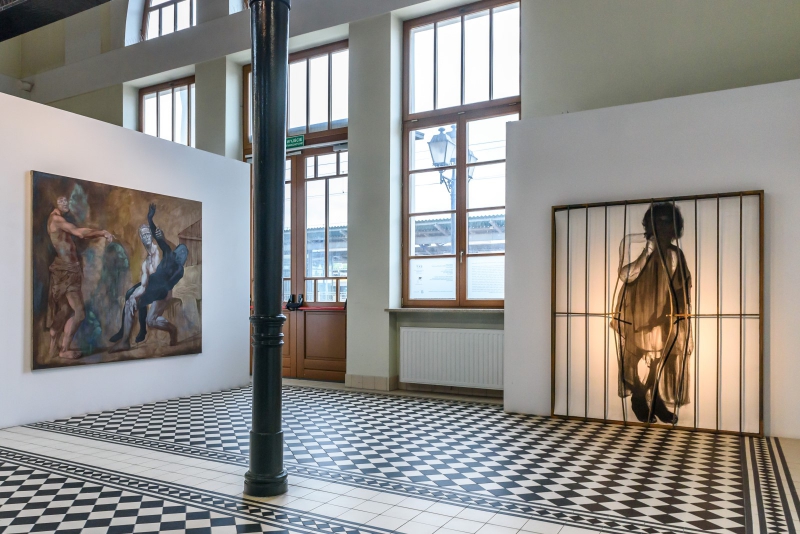
I have been asked to offer my opinion regarding the concept of RomaMoMA, an institution putting on display contemporary art. Mine is an opinion that comes from a seasoned non-Roma observer of contemporary Roma art scene, a Poland-based critic and curator. The emergence of an establishment like this poses a number of questions, the first…
Text by Monika Weychert ›››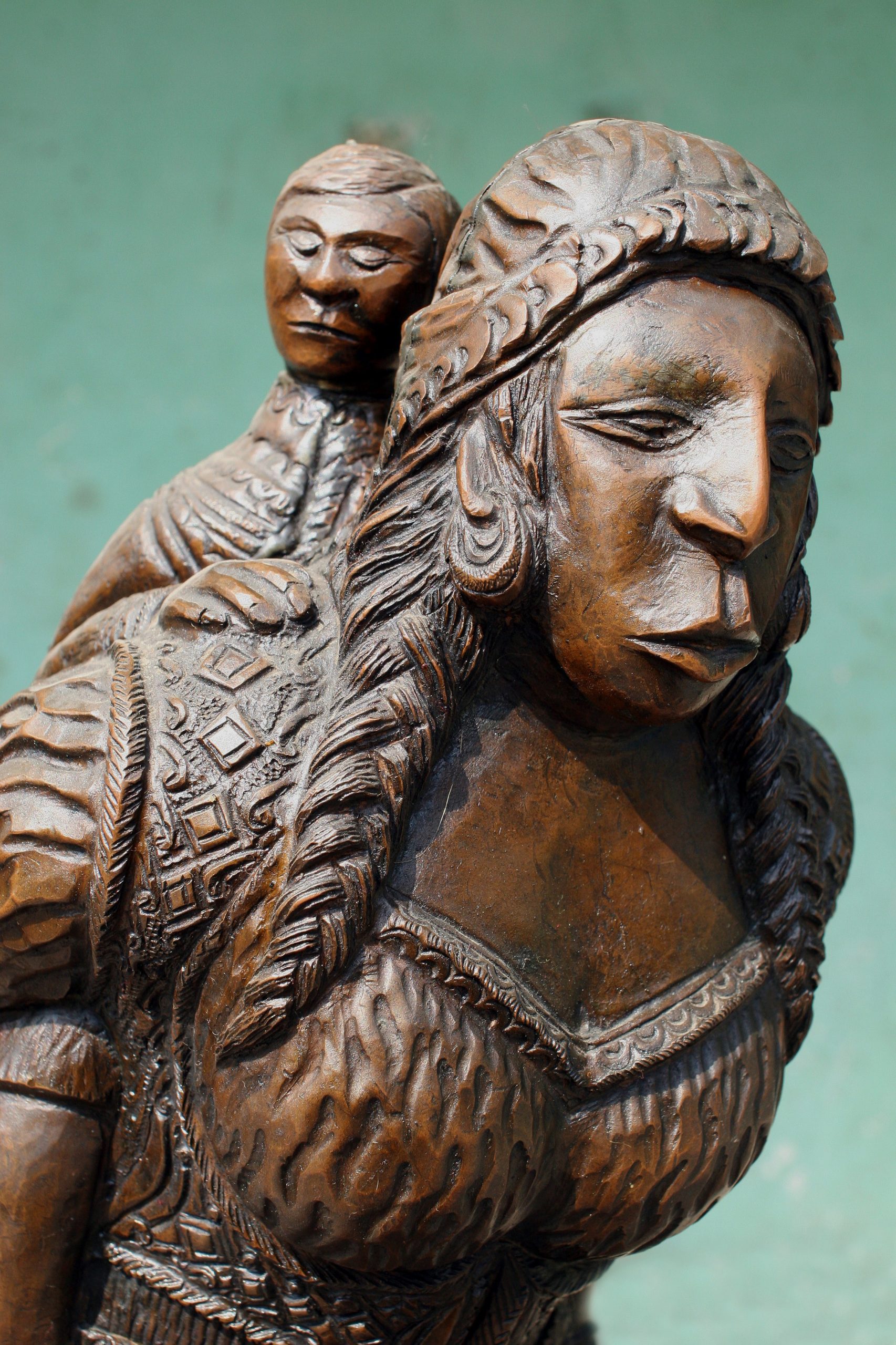
This week, we feature the Roma Resistance and Resilience exhibition, currently on view at ERIAC Art Space Berlin, with another version of the show on view at the newly opened ERIAC Serbia in Belgrade. We can only comprehend the 600 years of resilience and survival of the Roma minority in Europe if we recognise the…
Video by Kornél Szilágyi ›››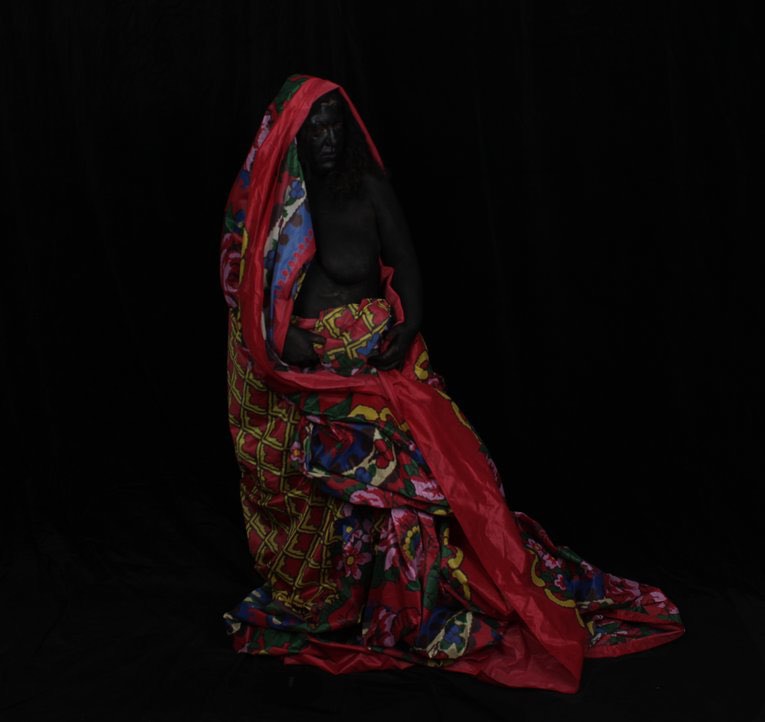
RESIST![1] illuminates 500 years of anti-colonial resistance in the Global South, shining a light on colonial oppression and its effects up to the present day. The exhibition pays homage to all the women, men and children who have resisted in multifaceted ways and whose stories remain mostly untold or unheard. Numerous works by contemporary artists…
Text by Tímea Junghaus, introduction via Rautenstrauch-Joest Museum Cologne ›››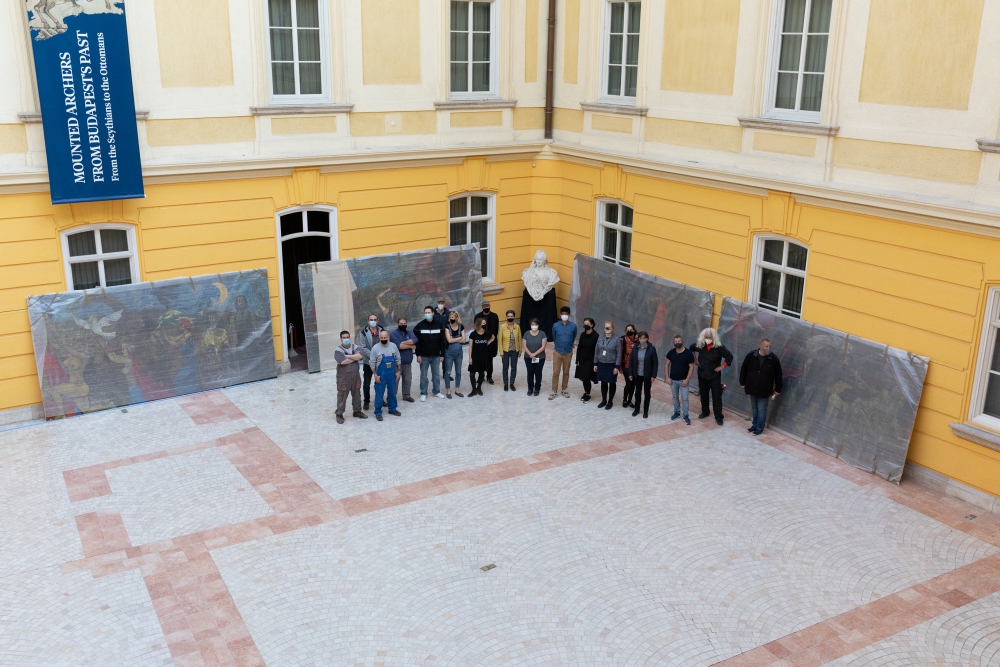
The First National Exhibition of Self-Taught Artists in Hungary was already organised by Ágnes Daróczi in 1979, in order to bring into the limelight talented Roma artists; yet, the third such display, in 2000, continued to be held in the Museum of Ethnography (Budapest), rather than an institute of contemporary art, as if the exhibits were manifestations…
Text by Emese Révész, introduction by Anna Lujza Szász ›››
The works of Mara Oláh (1945-2020), internationally acclaimed contemporary Hungarian Roma painter of outstanding talent, are presented at the current edition of OFF-Biennale Budapest, within the framework of the RomaMoMA programme. The selection on view forms the basis of a small, yet clamorous (!) event series. Omara (her artist name, or nom de guerre(!)) was…
Text by Kata E. Fris, introduction by Andrea Pócsik ›››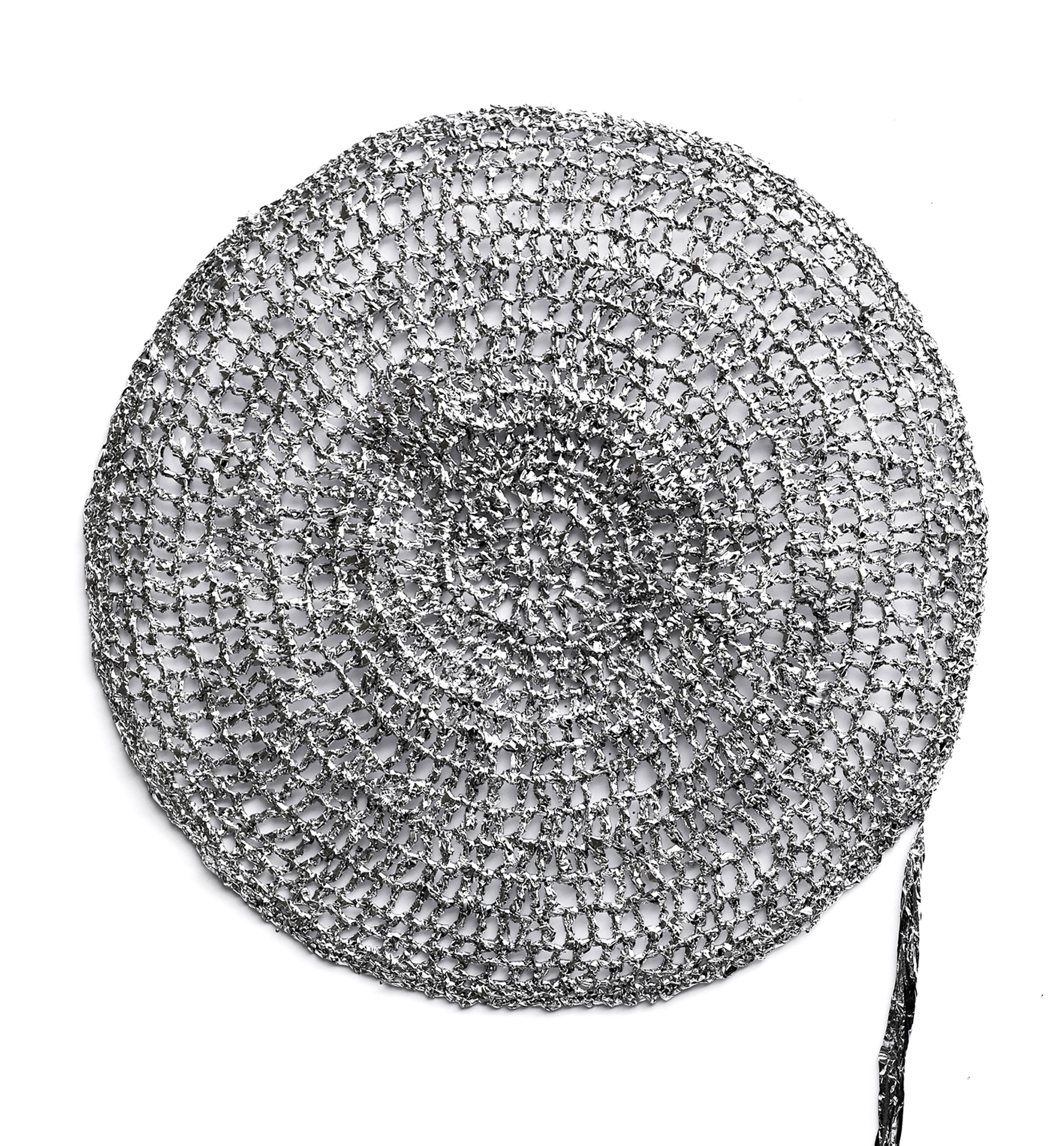
The third edition of OFF-Biennale Budapest, INHALE!, takes the seminal political poem “A Breath of Air!” (1935) by 20th-century Hungarian poet Attila József as its starting point. The research and online exhibition project, Order and Dreams, a cooperation between OFF-Biennale and the Vera and Donald Blinken Open Society Archives, presents the political and social context of the…
Text by Katalin Székely ›››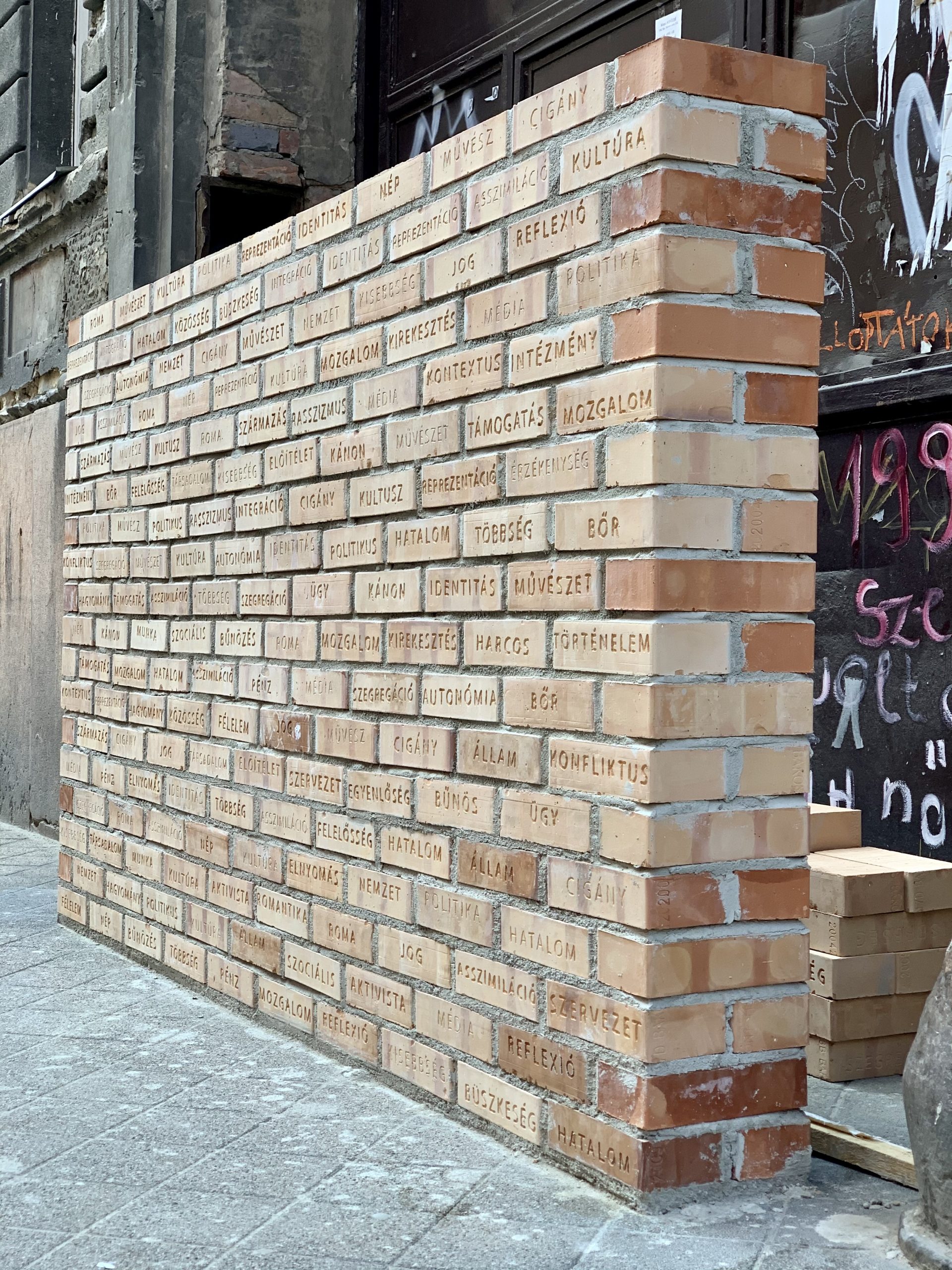
The following text accompanies Norbert Oláh’s installation during OFF-Biennale Budapest (on view 23 April – 30 May) in front of the former building of the Roma Parliament. The bricks of his wall have clearly legible words on them, representing concepts and perceptions that are ingrained and instilled into us. These comprise the wall of anxiety….
Text by Norbert Oláh and OFF-Biennale intro ›››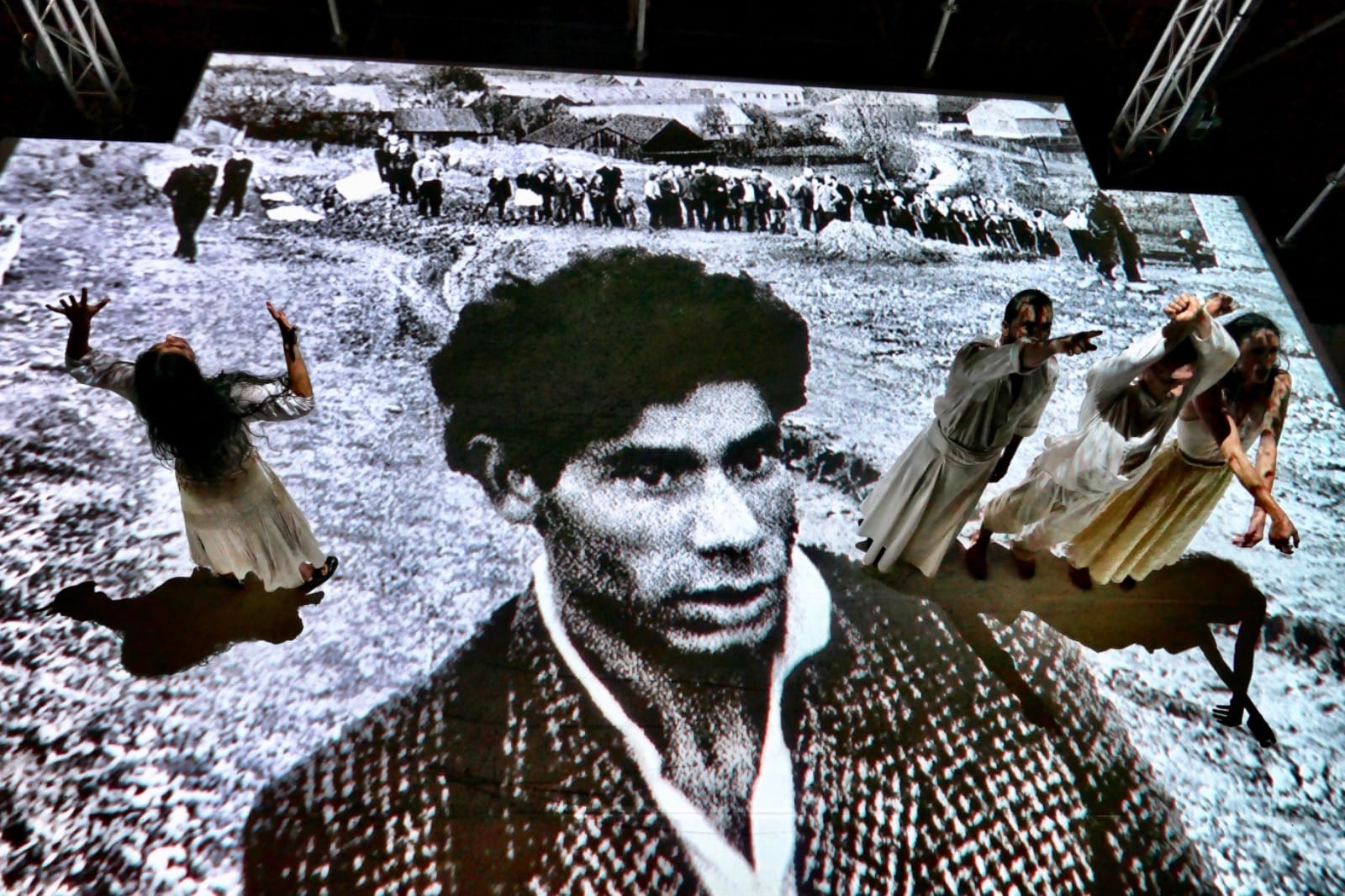
A Spanish Roma at the front of the stage In many Romani theatrical experiences, there is an unconscious desire to get out of Modernity, out of that public space that forces you to choose a competitive representation of an identity. Of any identity. It is lived, or wants to be lived, as a betrayal of…
Text by Miguel Ángel Vargas ›››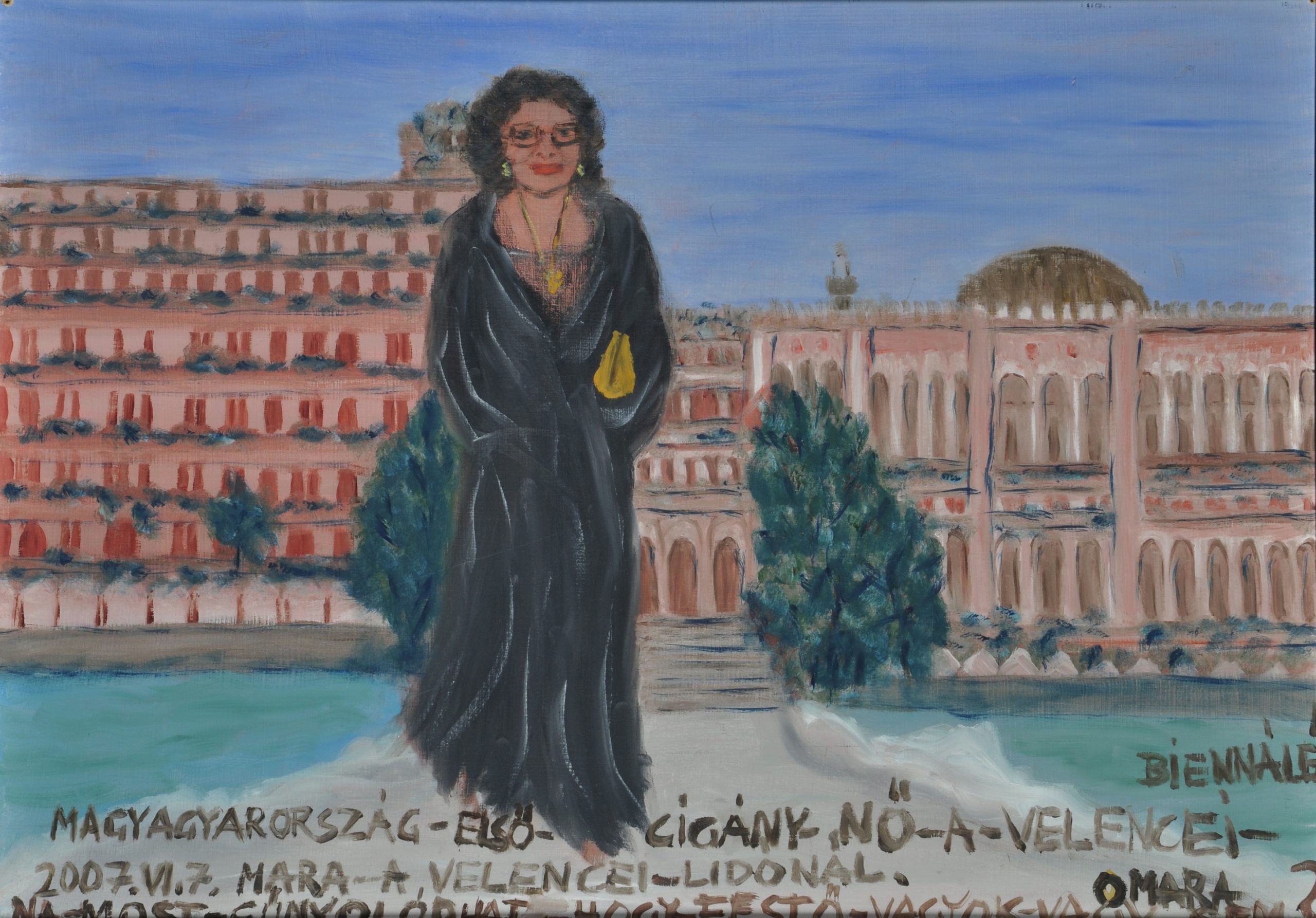
The 3rd edition of OFF-Biennale opens Friday, 23 April 2021. Due to Covid-19 restrictions, this edition will take a hybrid format, with the opening streamed online, 8pm CET. For up-to-date information on all programmes throughout the third edition, 23 April to 30 May 2021, please see: https://offbiennale.hu/en/2021 Here, the OFF-Biennale team offers an outline of…
Text by OFF-Biennale team ›››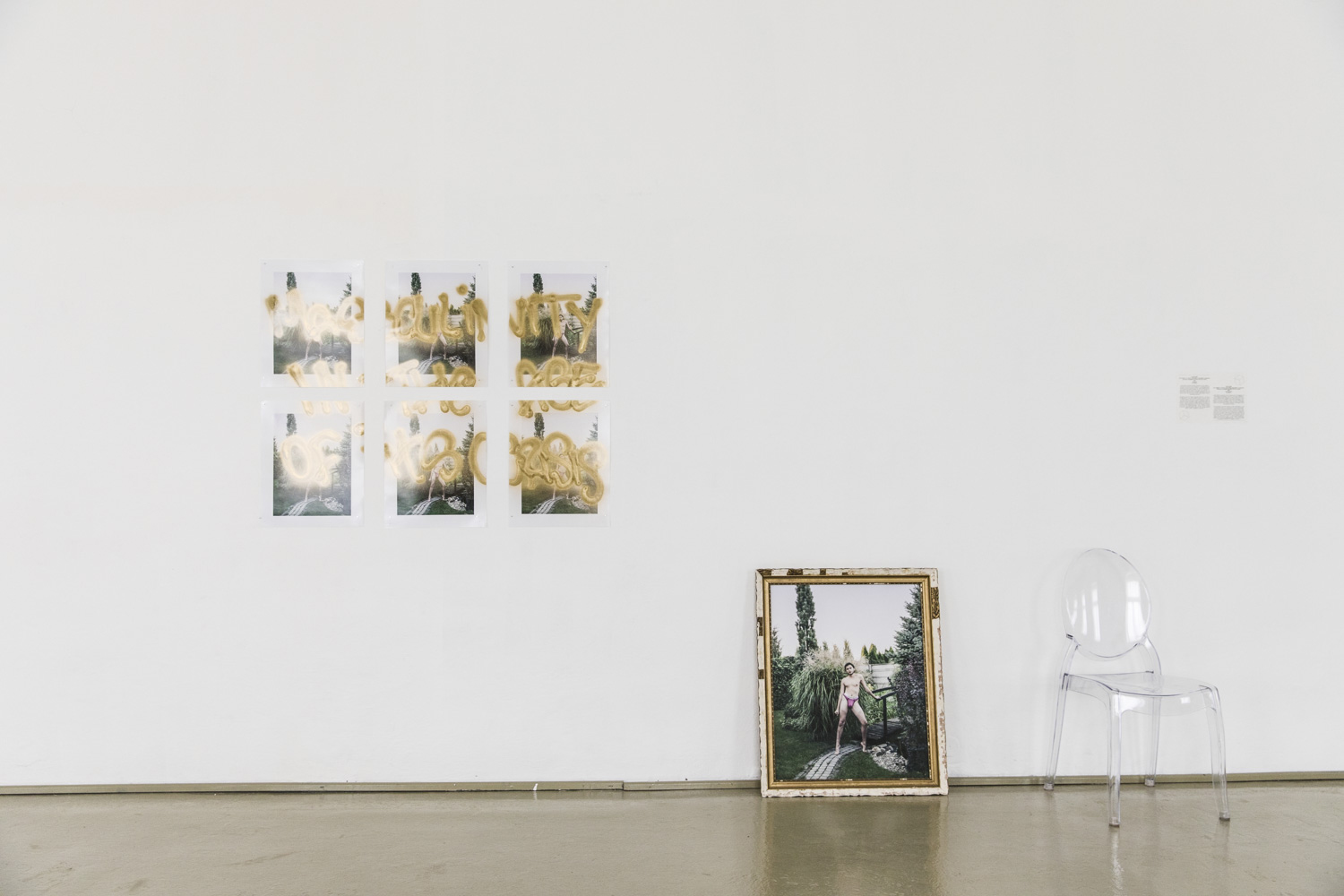
International Guest Artists 2021: L’uboš Kotlar and Norbert Oláh A cooperation between the European Roma Institute for Arts and Culture (ERIAC) and Villa Romana, Florence Villa Romana is a site of contemporary artistic production and of international exchange. Founded in 1905 by artists and patrons, it continues to operate as a non-profit association. Every year,…
Text by ERIAC ›››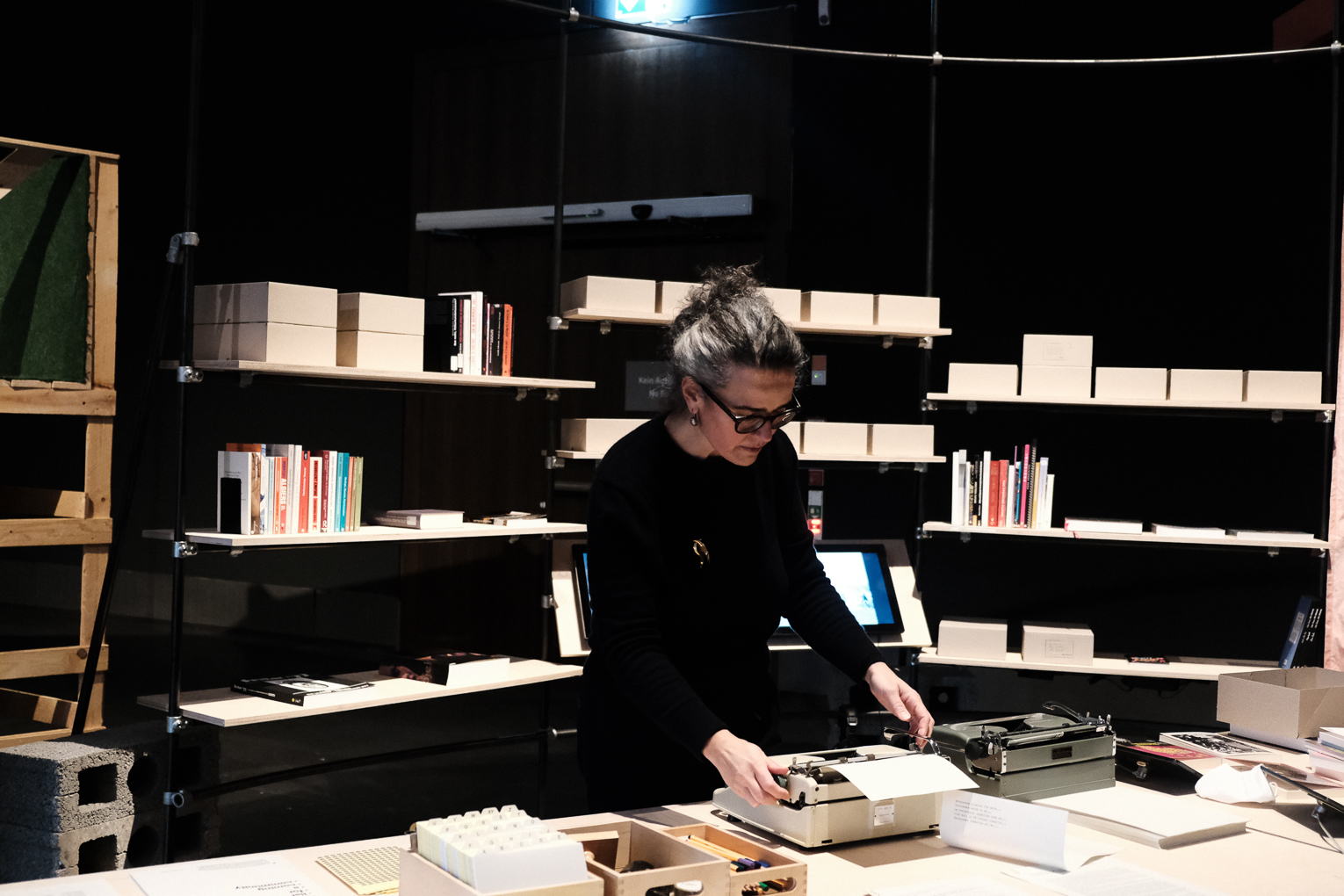
On this 50th anniversary of the First World Roma Congress, on International Roma Day, 8 April, we present a large-scale, on-going project, which is becoming a centrepiece of RomaMoMA, in various locations where we will have a presence. If you and your institution have an interest in providing a location and/or occasion for the RomaMoMA…
Text by ERIAC ›››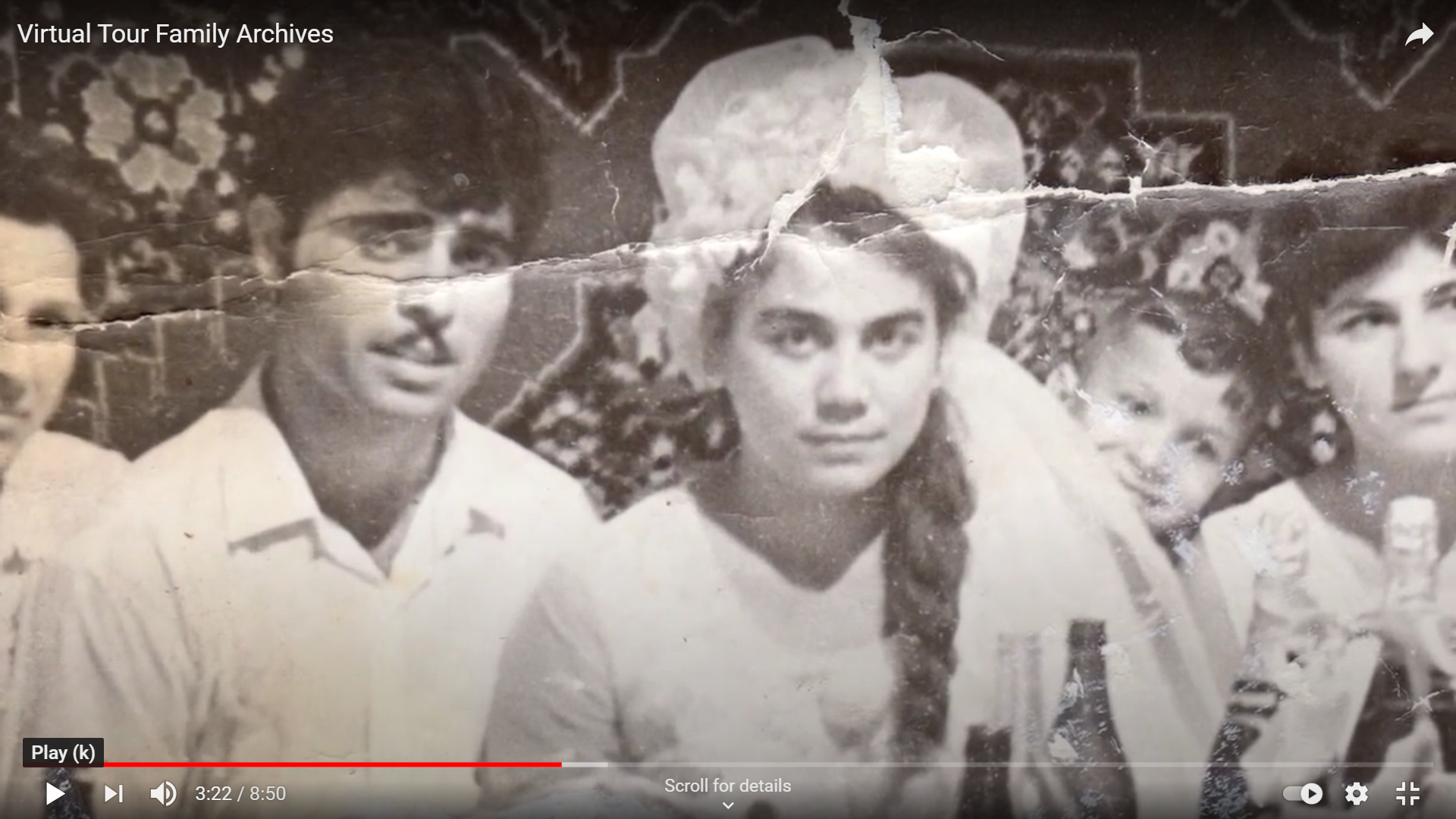
This week, we feature the Family Archives exhibition, currently on view at ERIAC Art Space Berlin, adapted from the exhibition originally curated within Diaspora Europe at the Volksbühne Berlin in December 2020. The Family Archives exhibition is a subjective counterpoint to research into the public and institutional archives. This research is carried out with the participation of European…
Video by Kornél Szilágyi ›››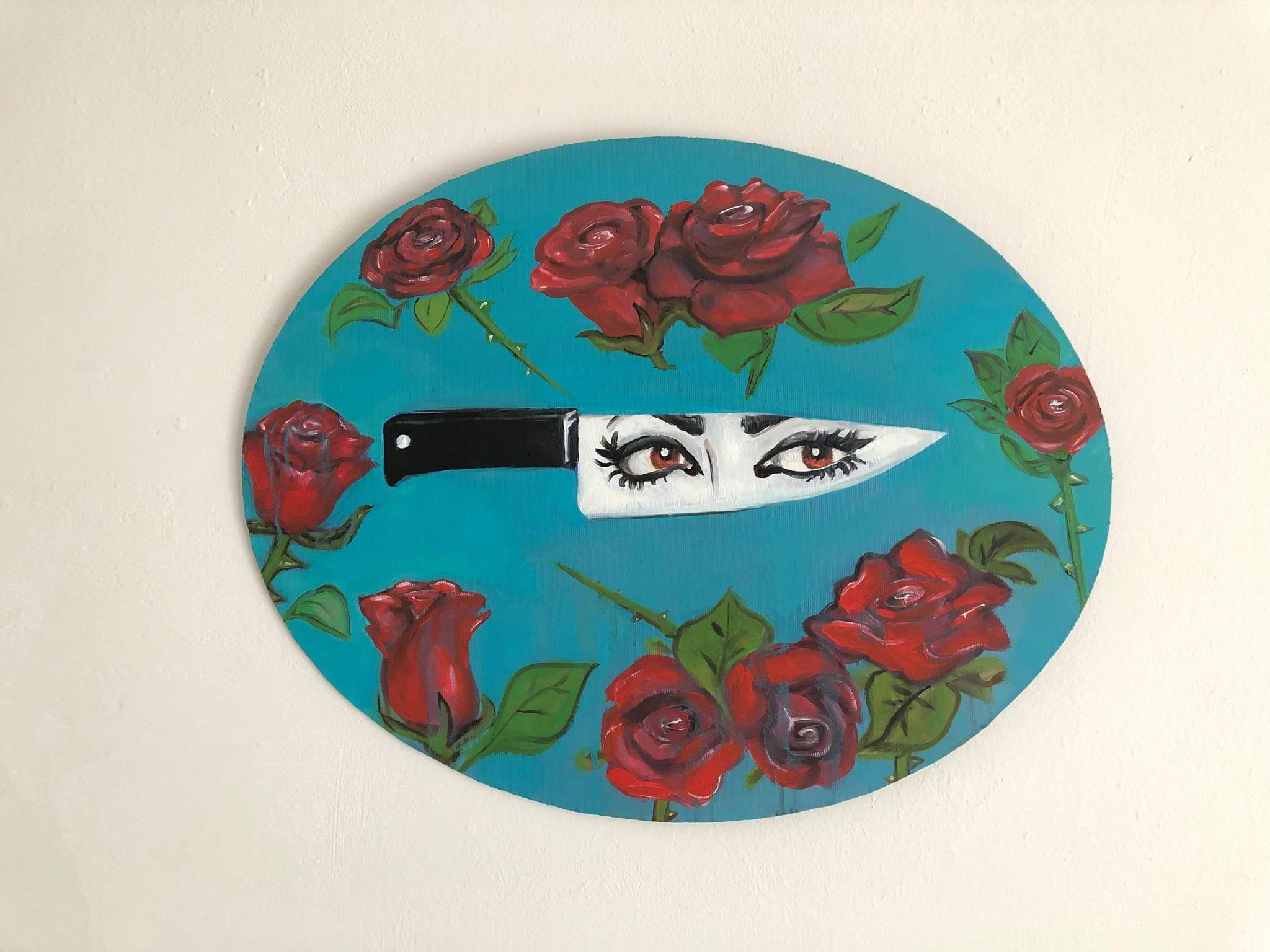
Long gone are the times When Roma wandered around, But I still see them. They are like running water Always running away […] (Papusza: Water that always wanders)[1] I think I became a feminist the moment I started to defend my mother and aunts from the violence they suffered. I have learned that I am…
Text by Nicoleta Bitu ›››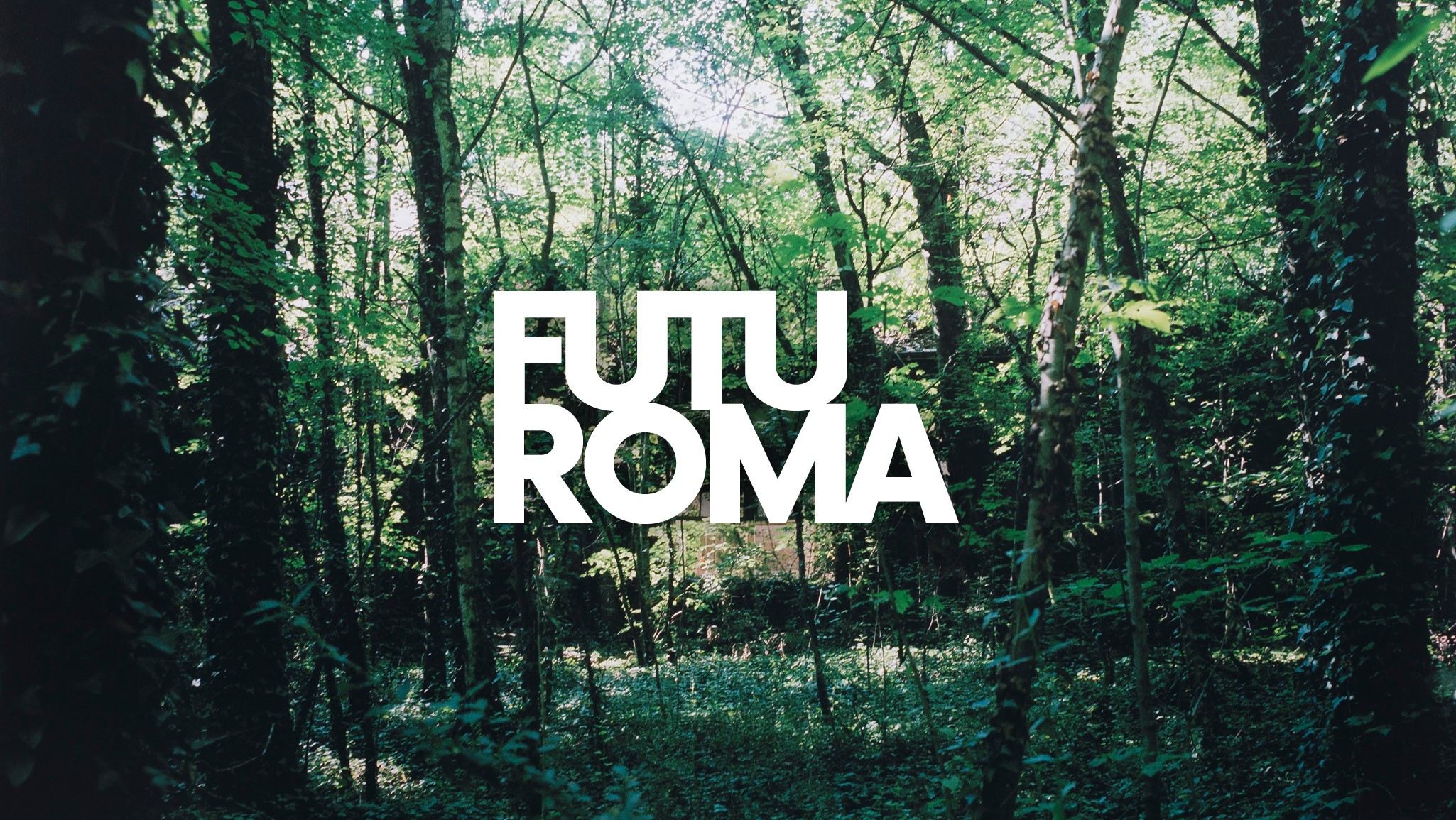
This week, we are excited to share an unreleased video tour through the FUTUROMA exhibition with curator Daniel Baker, in person! The group exhibition FUTUROMA, curated by Daniel Baker and commissioned by ERIAC, was a collateral event of the 58th International Art Exhibition La Biennale di Venezia in 2019. The exhibition then travelled to Florence,…
Video by ERIAC ›››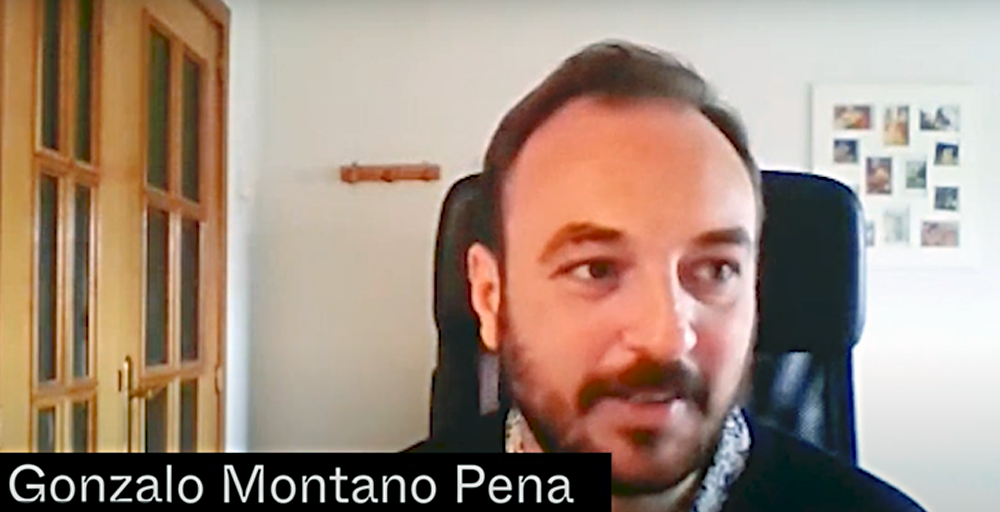
RomaMoMA shares a radical, visionary and subversive project this week: the Romanistan Monologues! ERIAC has made video interviews with Roma arts professionals and experts since last July, in an open and free discussion on the idea of Romanistan. This creative adventure is built on a discourse with numerous European Roma intellectuals, public figures, politicians, artists, citizens and youth,…
Video by Jozsef Halmen ›››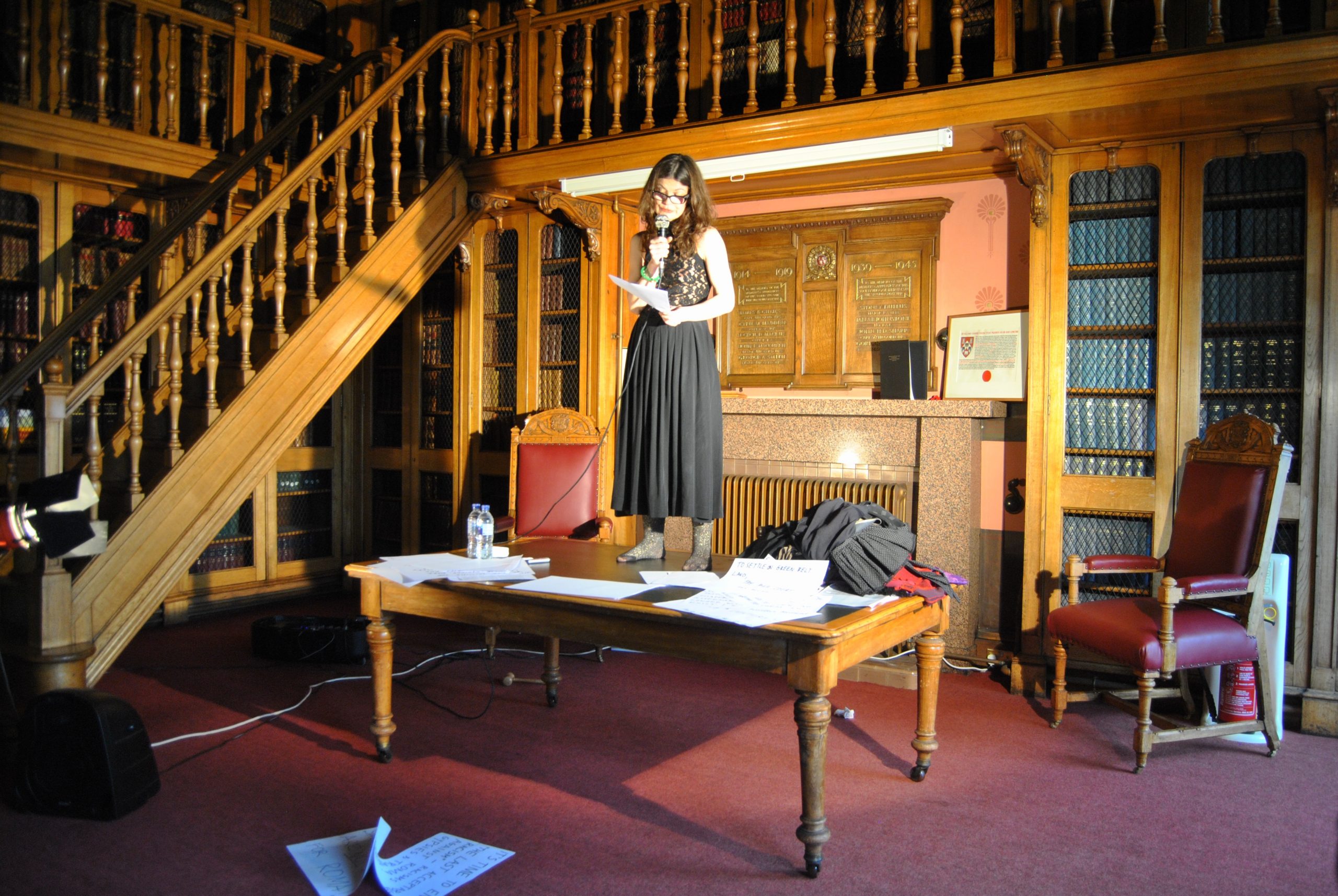
Taking as its point of departure research from the United Nations Human Rights Commission’s reports on violent deportations of Roma from the European Union, my project, Naked Life (2004-16) addresses the fate of Balkan, German, Scandinavian, Scottish, Irish and British Roma, Sinti, Gypsy and Traveller populations. In this framework, I produced a number of multimedia…
Text by Tanja Ostojić ›››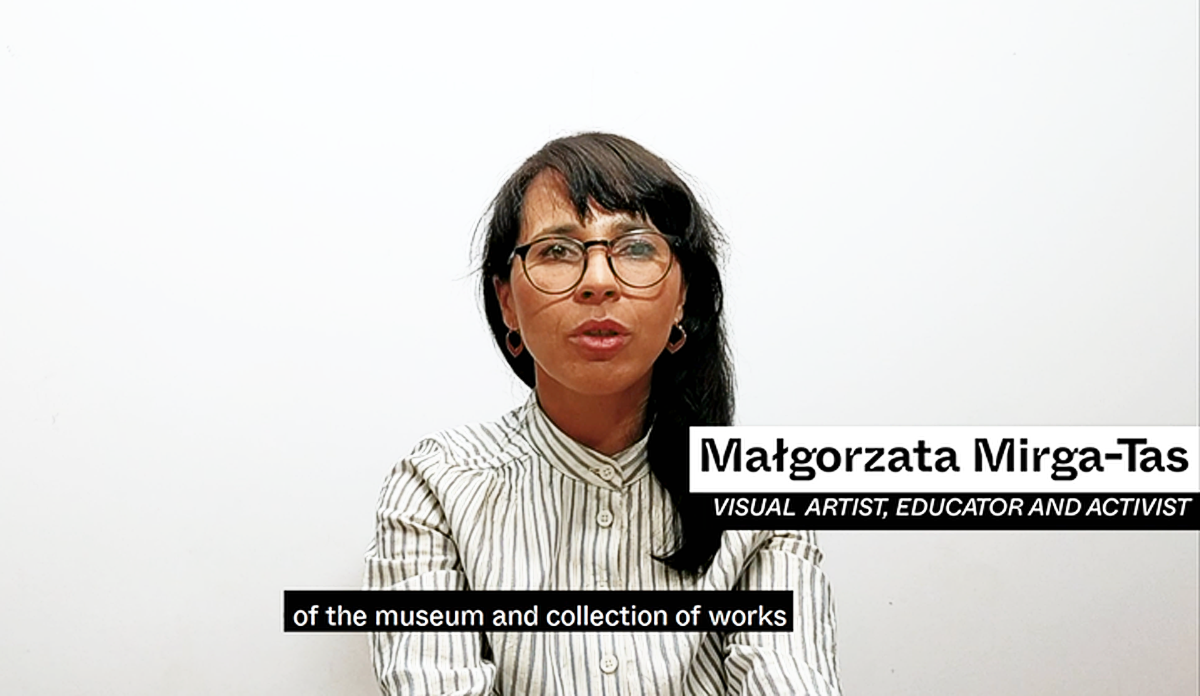
…and the RomaMoMA interviews conclude (for now)! (Part 5 of 5) All good things must come to an end: this week we present the final portion of the RomaMoMA interviews What challenges do you see, if any, with the concept of a Roma Museum as a whole? One participant feels that it is a great…
Video by Jozsef Halmen ›››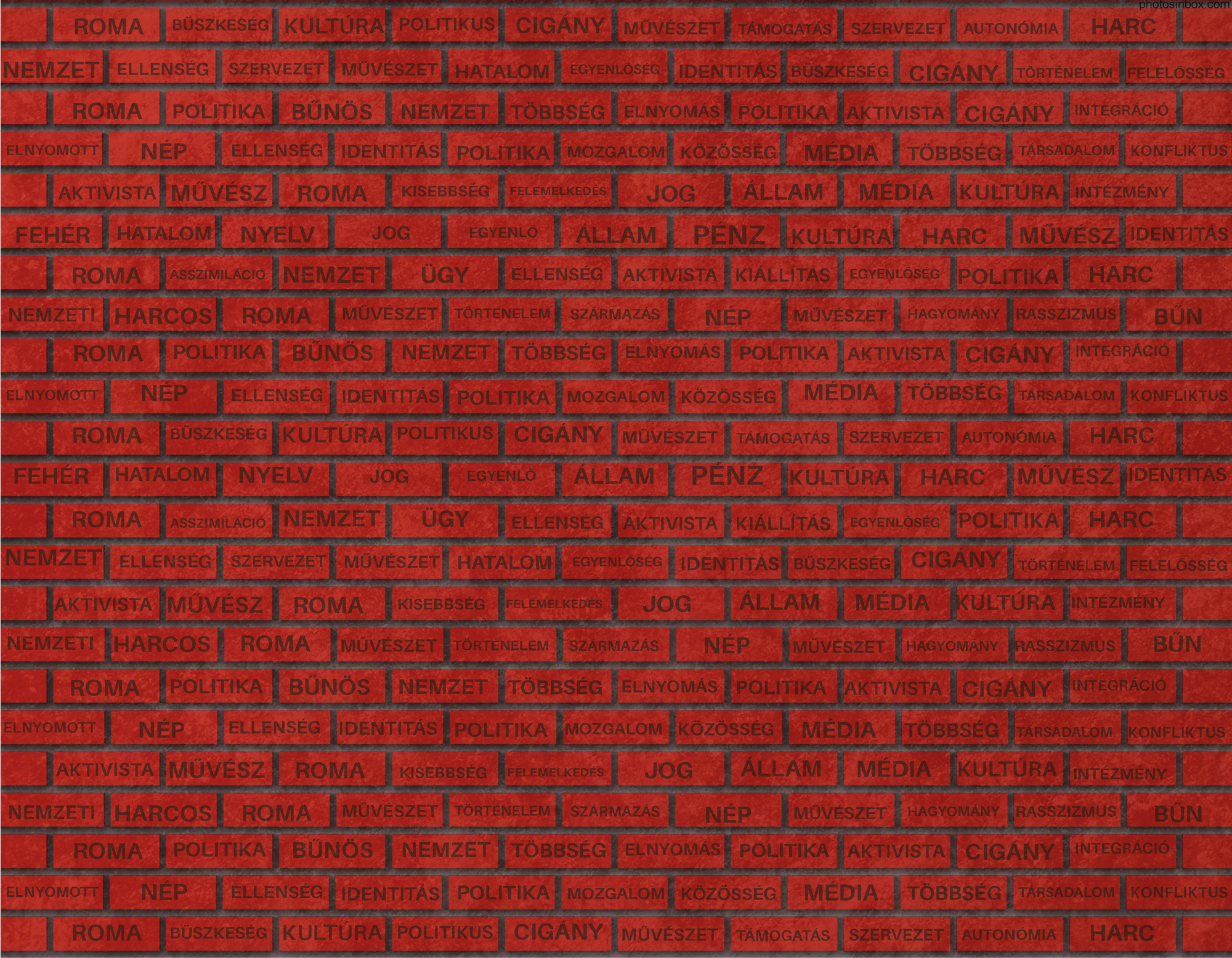
The curatorial team of OFF-Biennale Budapest expands upon the notion of “RomaMoMA” as a platform to discuss, to imagine, and to “perform” a Transnational Museum of Roma Contemporary Art through discursive events, contemporary art projects, publications, and mediation. To challenge the notion of the museum and to engage the public in questions about cultural heritage…
Text by Eszter Lázár, Hajnalka Somogyi, Katalin Székely ›››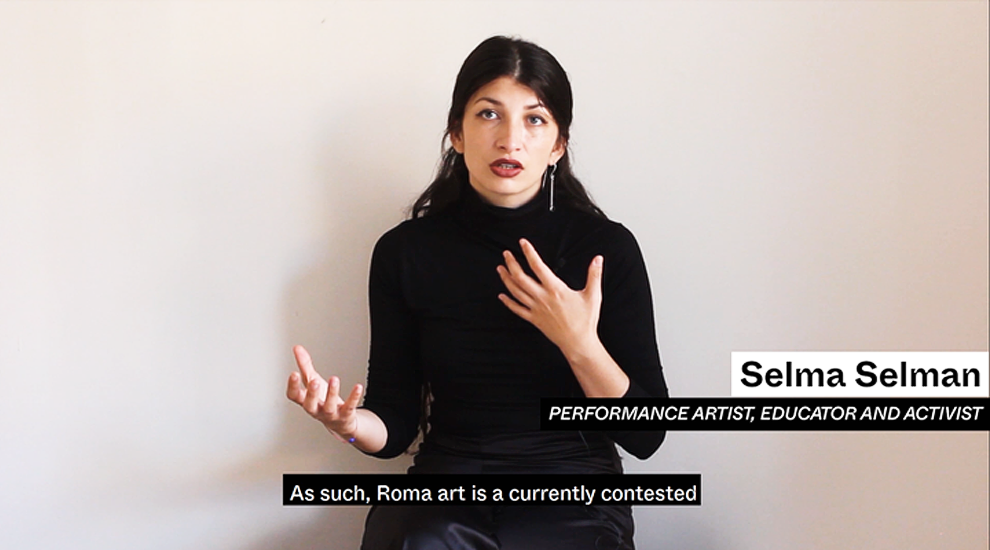
The RomaMoMA interviews are back! (Part 4 of 5) This time, we have a more “practical” question regarding the actual implementation of a physical Roma museum: How would you present the complexity of Sinti and Roma art and culture to make it easily understandable to a broad international audience? Given the huge responsibility the museum…
Video by Jozsef Halmen ›››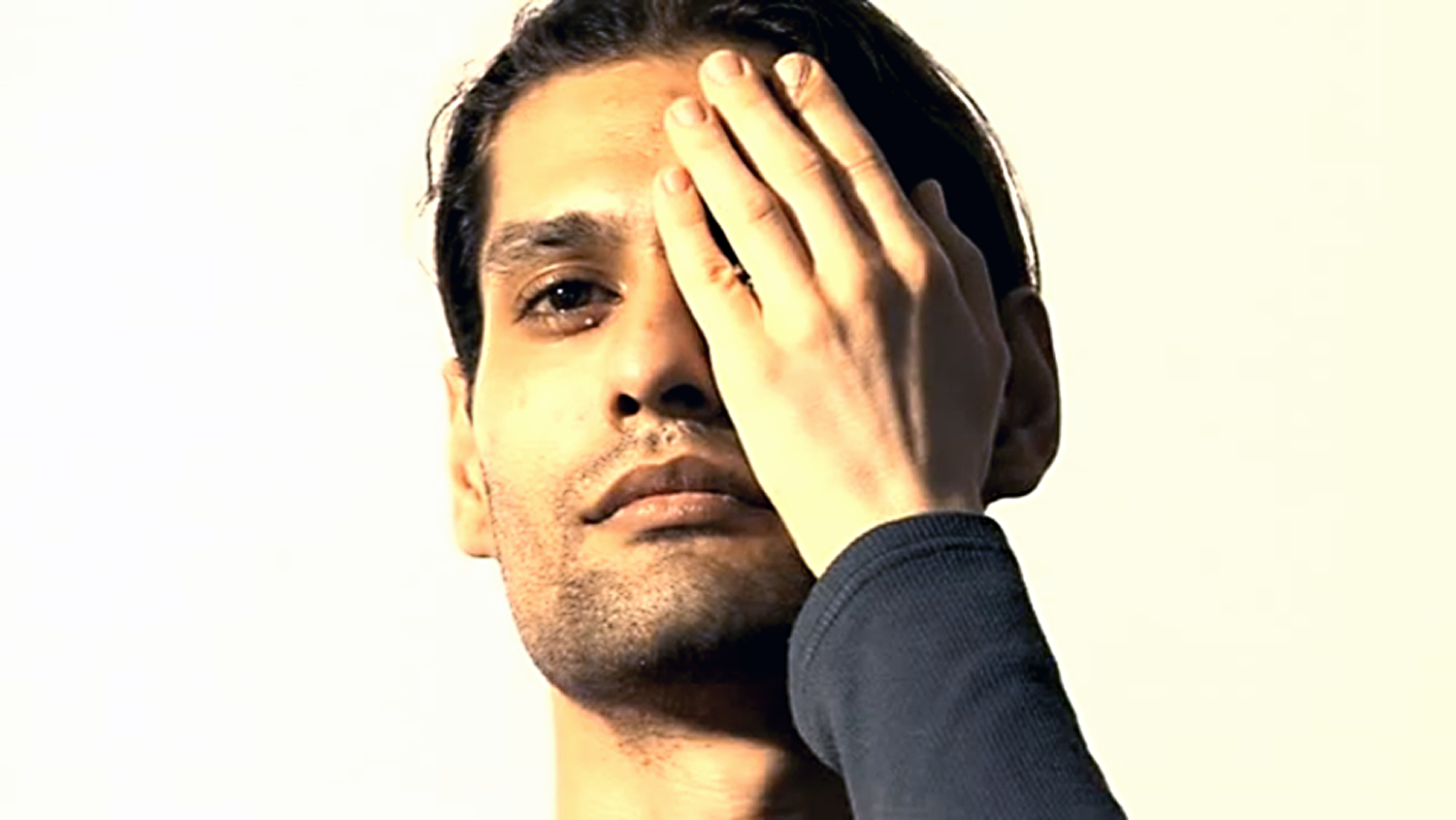
This critical reflection comprises a subjective questioning and mind-mapping woven into the analysis of the Sostar Collective’s video, entitled Rewritable Pictures, in which the author attempts to translate the issues raised by critical contemporary art into thinking about the institutional possibilities of a future imagined Roma museum. The following text is a succinct reflection of…
Text by Krisztina Varga ›››
The RomaMoMA interview series continues! (Part 3 of 5) What concrete steps and/or obstacles do you envision in preparing a Roma Museum? What exactly is required in order to create a respectful Roma museum? It is no secret that creating a Roma museum is a great challenge, as it refers to an ethnic group rather…
Video by Jozsef Halmen ›››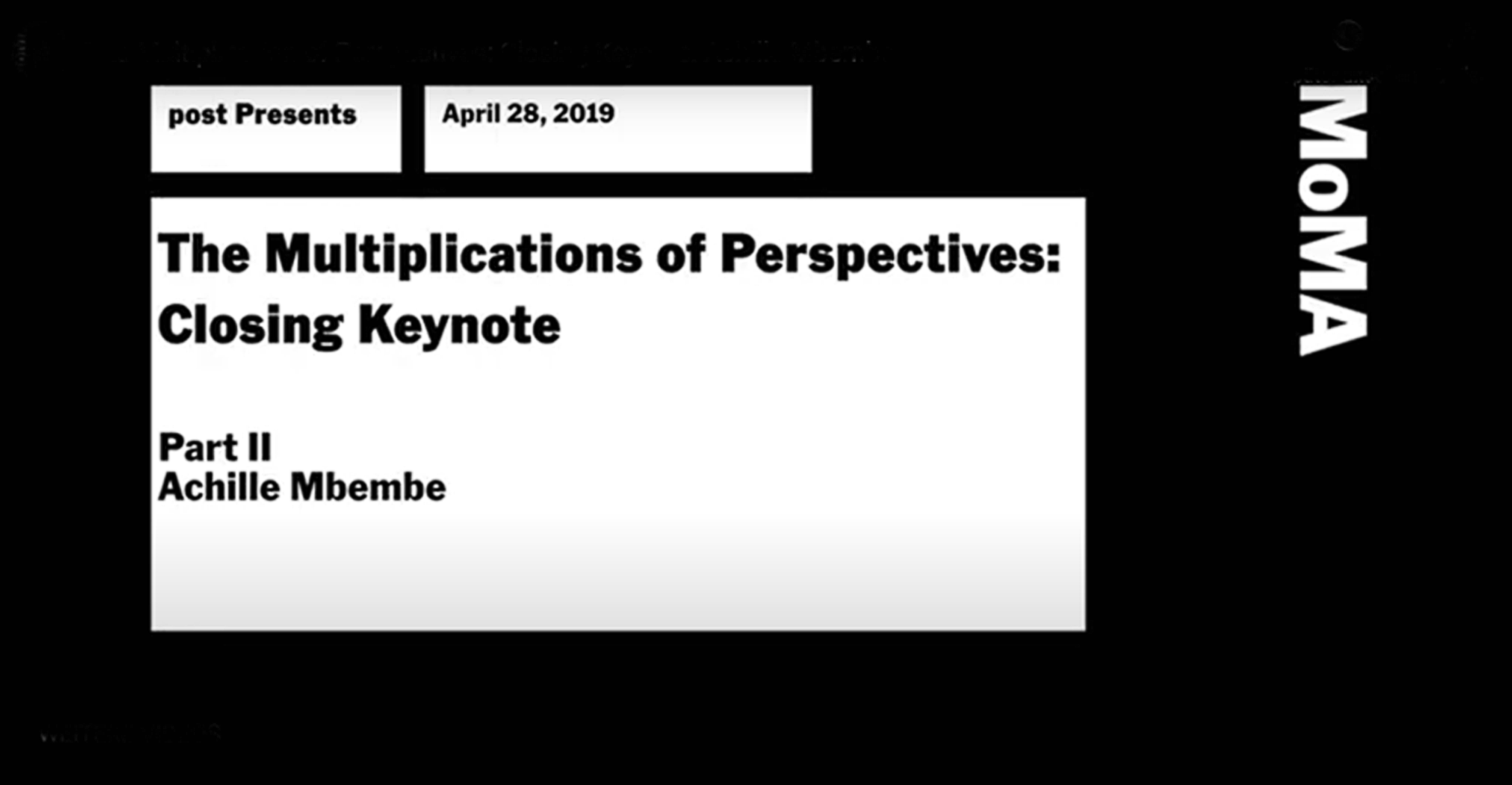
This video was first published on post, The Museum of Modern Art’s online resource devoted to art and the history of modernism in a global context. This presentation was part of The Multiplication of Perspectives, which took place in April 2019 at The Museum of Modern Art, and brought together scholars, artists, and curators from around…
Video by MoMA ›››
Our interview series continues! (Part 2 of 5) For our RomaMoMA blog, this time we asked Roma and non-Roma artists and arts professionals to reflect upon the following question: What role should a Roma Museum have within the landscape of European cultural institutions? One respondent summed up the museum’s role using three keywords: support, space…
Video by Jozsef Halmen ›››
Meghan Forbes considers the work of RomaMoMA as related to memory production and preservation, through the process of recording, archiving and exhibiting. This essay emphasises the relevance of the new museum as a model for an anti-racist, decolonial museum practice so needed in our contemporary moment. She also considers the work of one artist who…
Text by Meghan Forbes ›››
For our RomaMoMA blog, we asked Roma and non-Roma artists and arts professionals to answer a simple but complex question: How do you imagine a Roma Museum? What should a Roma Museum collect and exhibit? While the responses are quite diverse, there is a conjunction of similar problematics and visions. In one case, the importance…
Video by Jozsef Halmen ›››
If Europe’s over fifteen thousand museums are truly “democratising, inclusive and polyphonic spaces for critical dialogue”, there is absolutely no need for culturally and ethnically specific museums. However, museums tend to assign Roma the place of the other, thereby reinforcing and eternalising the position of the Romani people and Roma artistic practice to the periphery…
Text by Zsófia Bihari and Katalin Németh ›››
The exhibition Andaro Angluno Vast by photographer Nihad Nino Pušija opened at ERIAC Space in the framework of EMOP on 25 September 2020, and is part of the Roma Components of the German Council of Europe Presidency during 2020. The exhibition opening was enriched with a speech by art historian Bojana Pejić. Due to new…
Video by Kornél Szilágyi ›››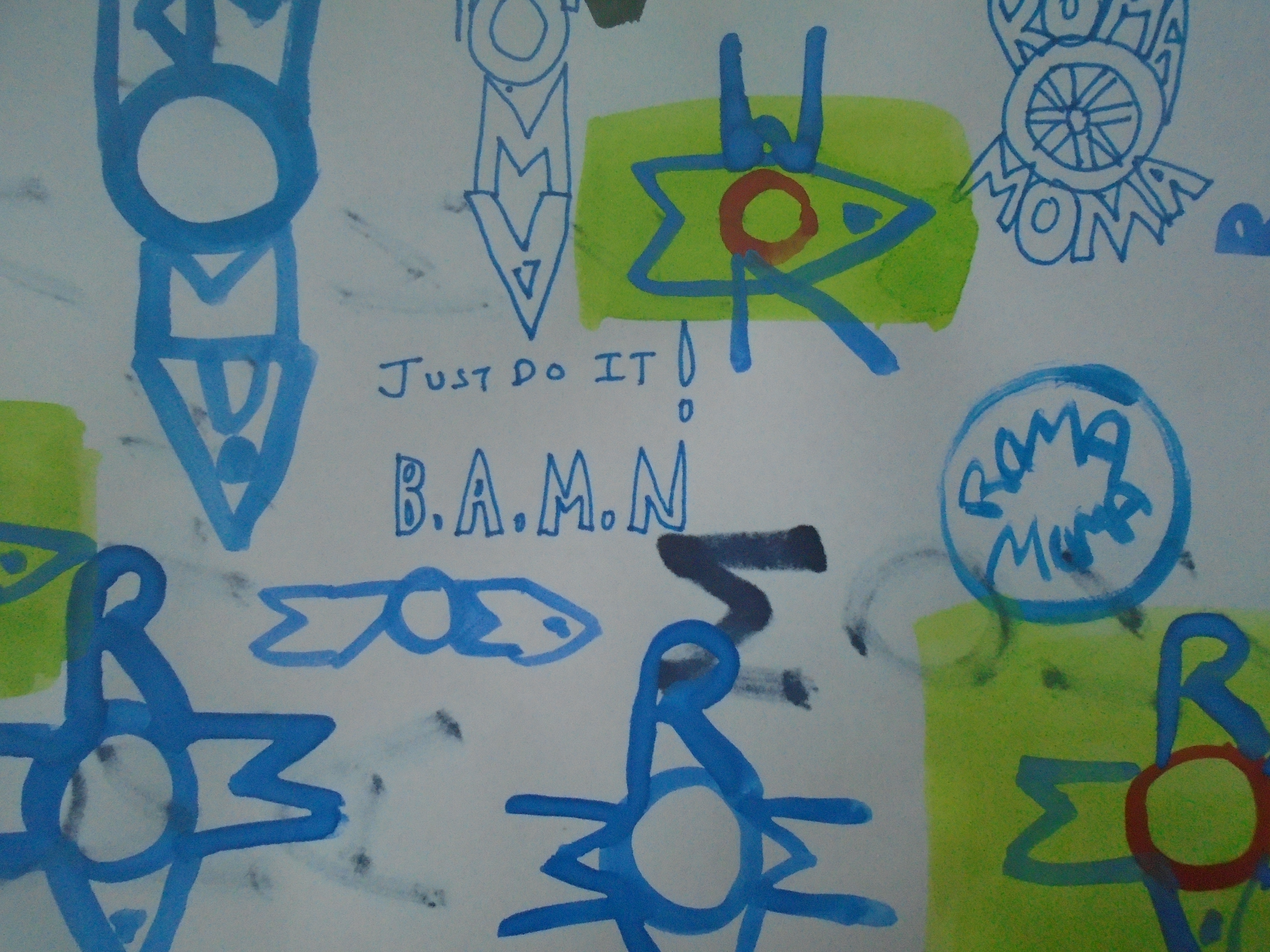
RomaMoMA Just Do It! B.A.M.N (By Any Means Necessary) – An Idea for A New Museum, a blank piece of paper? a constellation of ideas? reactivating a concealed memory? The image accompanying this text is a rough set of drawings, ideas for a motif, maybe a layout for a building which I was thinking of…
Text by Delaine Le Bas ›››
On 26 February 2018, in the framework of ERIAC’s first “International Cultural Outreach Program”, Prof. Dr. Gayatri Chakravorty Spivak of Columbia University gave a lecture together with Roma feminist scholars. In this panel discussion organised in ERIAC’s office and art space in Berlin, outstanding Roma activists discussed the transformative potential of transnational alliances and the…
Video by Ana Stanic ›››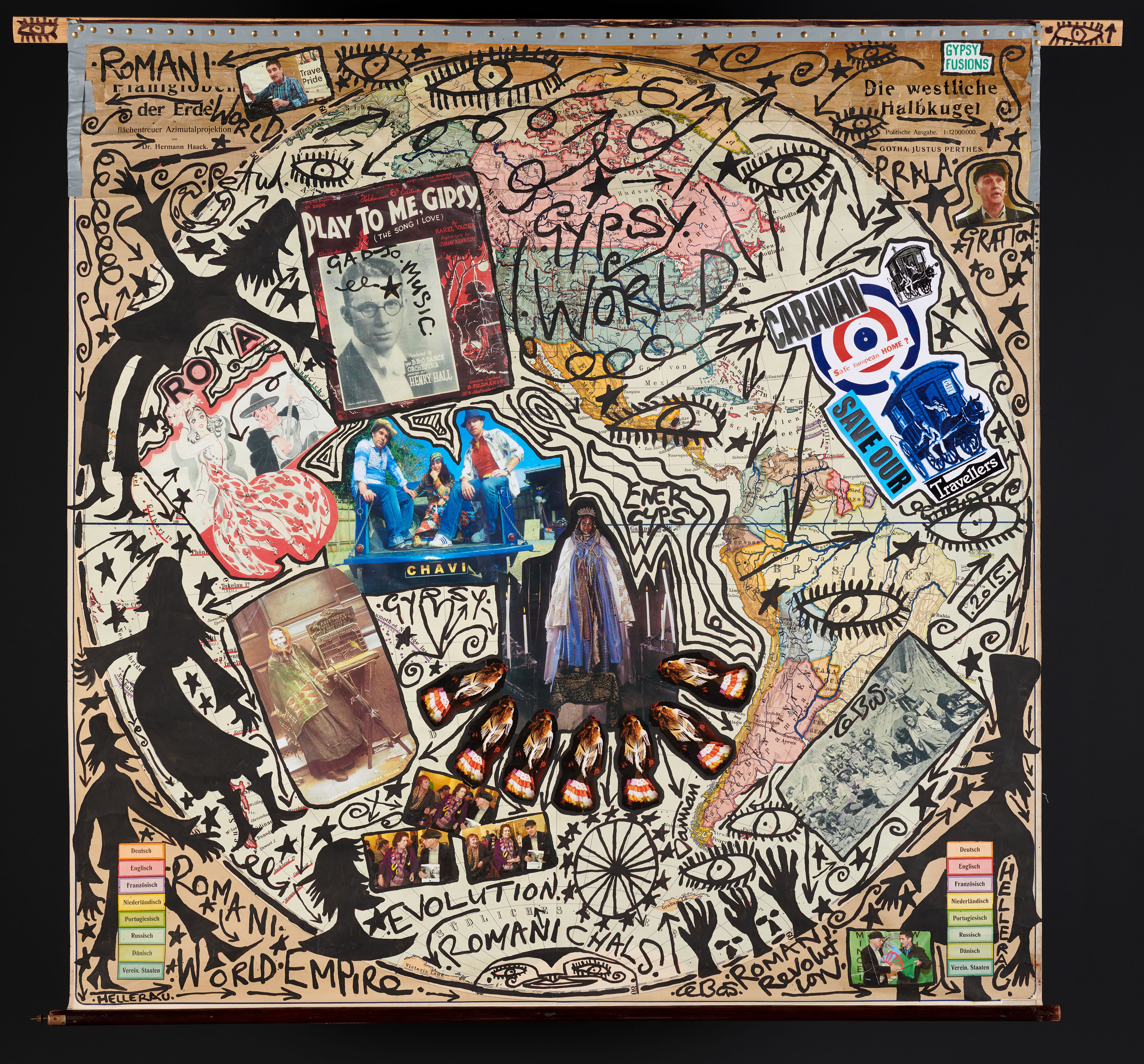
In 2023, Barvalo[1] will be held at the Museum of Civilisations of Europe and the Mediterranean (Mucem), in Marseille, in the south of France. This exhibition, focused on Romani cultures and professions, is designed in collaboration with Rom, Sinti, Gitano, Manouche and French Traveller representatives from France and across Europe. Through inviting Romani individuals to…
Text by Julia Ferloni ›››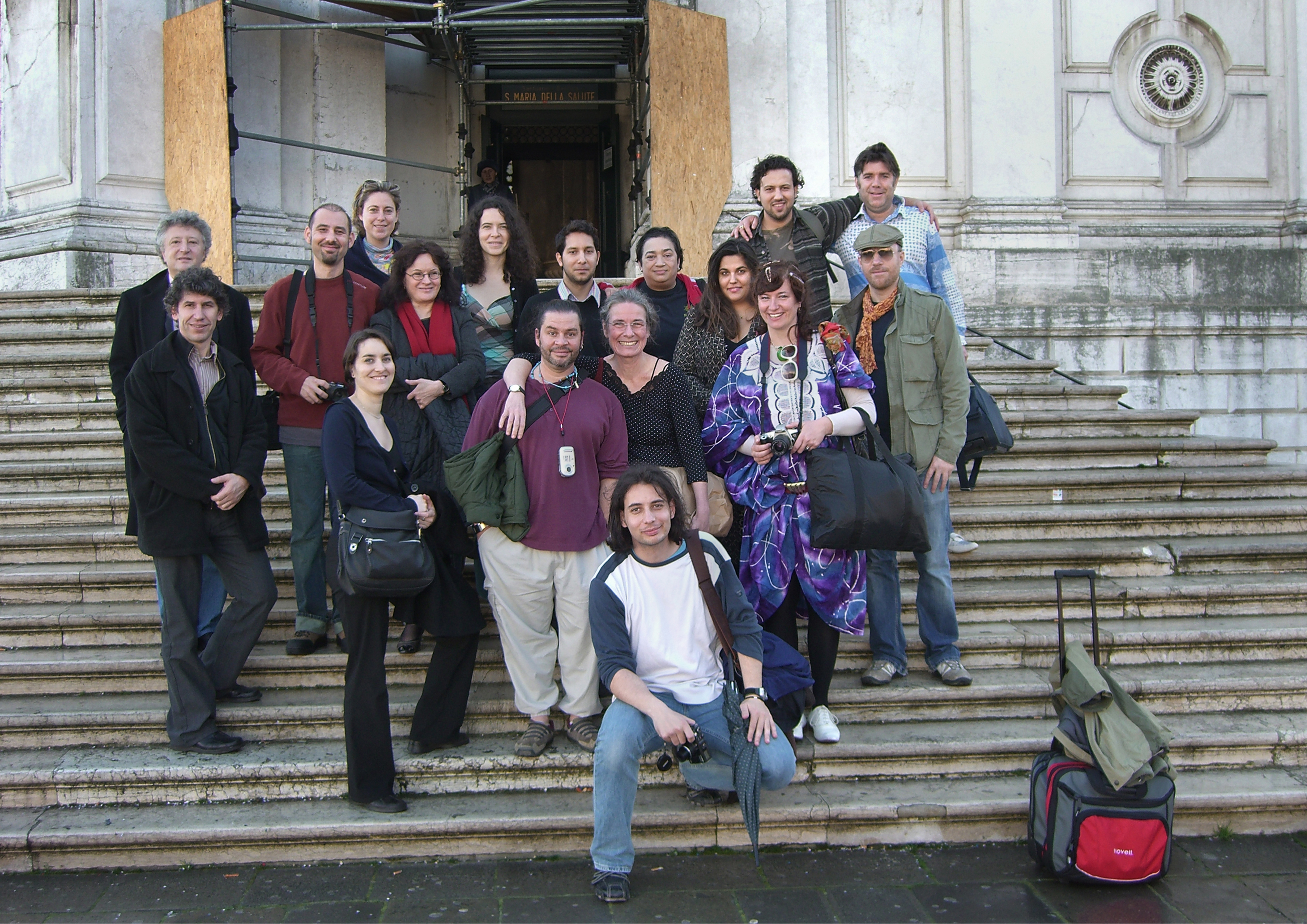
RomaMoMA, the aspiring project of imagining a Roma transnational museum, is not merely a theoretical exercise. A Roma transnational museum has been a central desire of the Roma movement since the 1960s. RomaMoMA is the natural evolution towards what is yet to come. This transnational European Museum is inevitable in Europe. The vision for RomaMoMA…
Text by Timea Junghaus ›››Imagine a presentation of Rosa Taikon’s silver jewellery at Hälsinglands Museum in Hudiksvall, a solo exhibition with Malgorzata Mirga Tas’s textile paintings at the Galerie für zeitgenössische Kunst in Leipzig, and a show with Robert Gabris’s drawings at Salonul de Proiecte in Bucharest. Then there is a retrospective of Ceija Stojka and her Holocaust memory…
Text by Maria Lind ›››
This conversation between visual artists Oto Hudec and Emília Rigová took place in November 2017 as a part of the Nadikhuno Muzeumos / Invisible Museum exhibition project at Tranzit.sk. It addresses the absence of Roma representation in arts and culture spaces and challenges the idea of the traditional ethnographic role of museums, where “othering” through…
Text by Oto Hudec and Emília Rigová ›››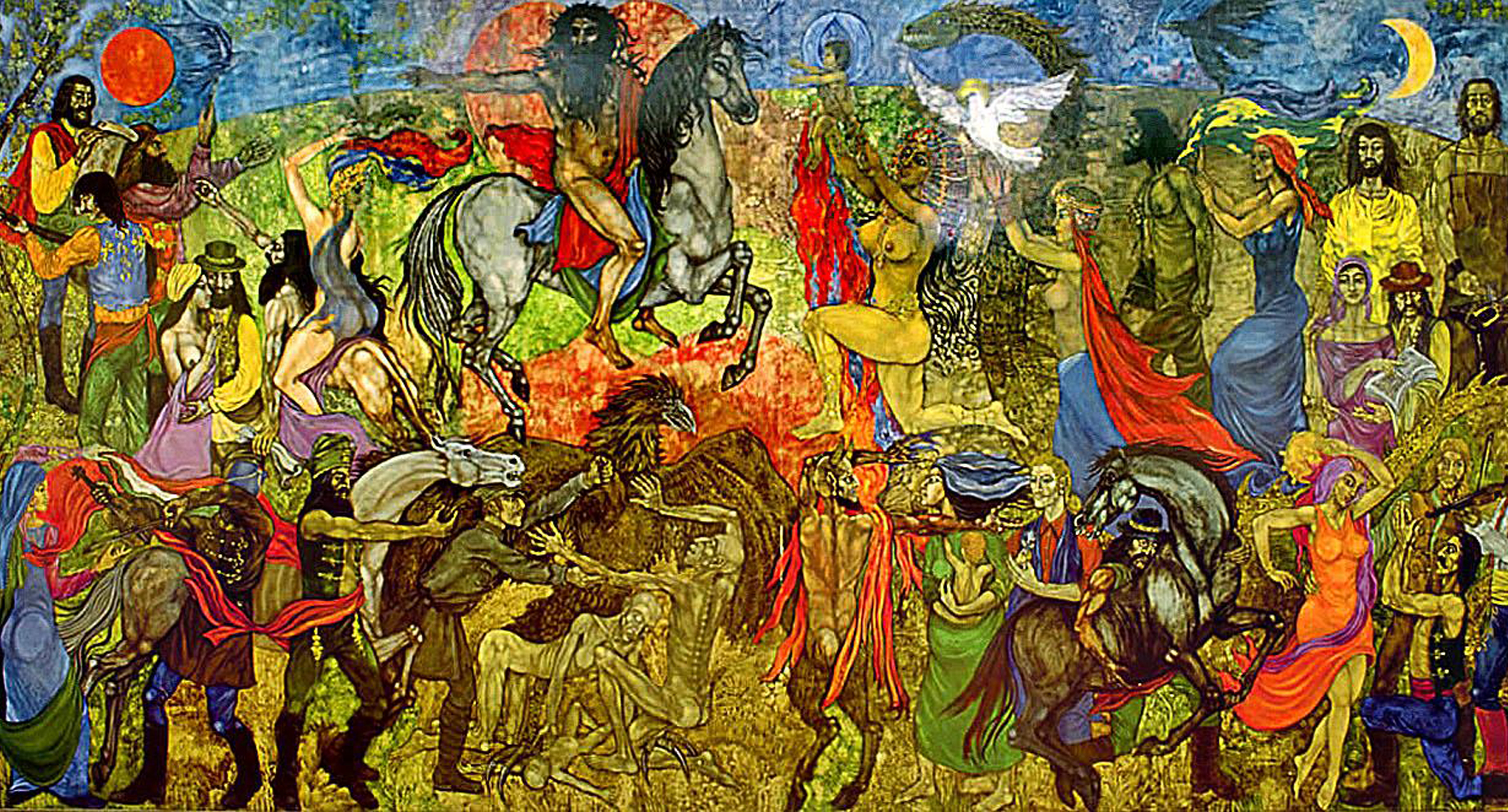
This text makes an argument for the utmost urgency to mark out and define new spaces for the (re)presentation, performance and practice of Roma cultural heritage (both tangible and intangible). The Museum of Roma Contemporary Art would break off the idealised neutrality of national/transnational space and claim rearrangement, as well as access to self-expression and self-representation….
Text by Anna Lujza Szász ›››